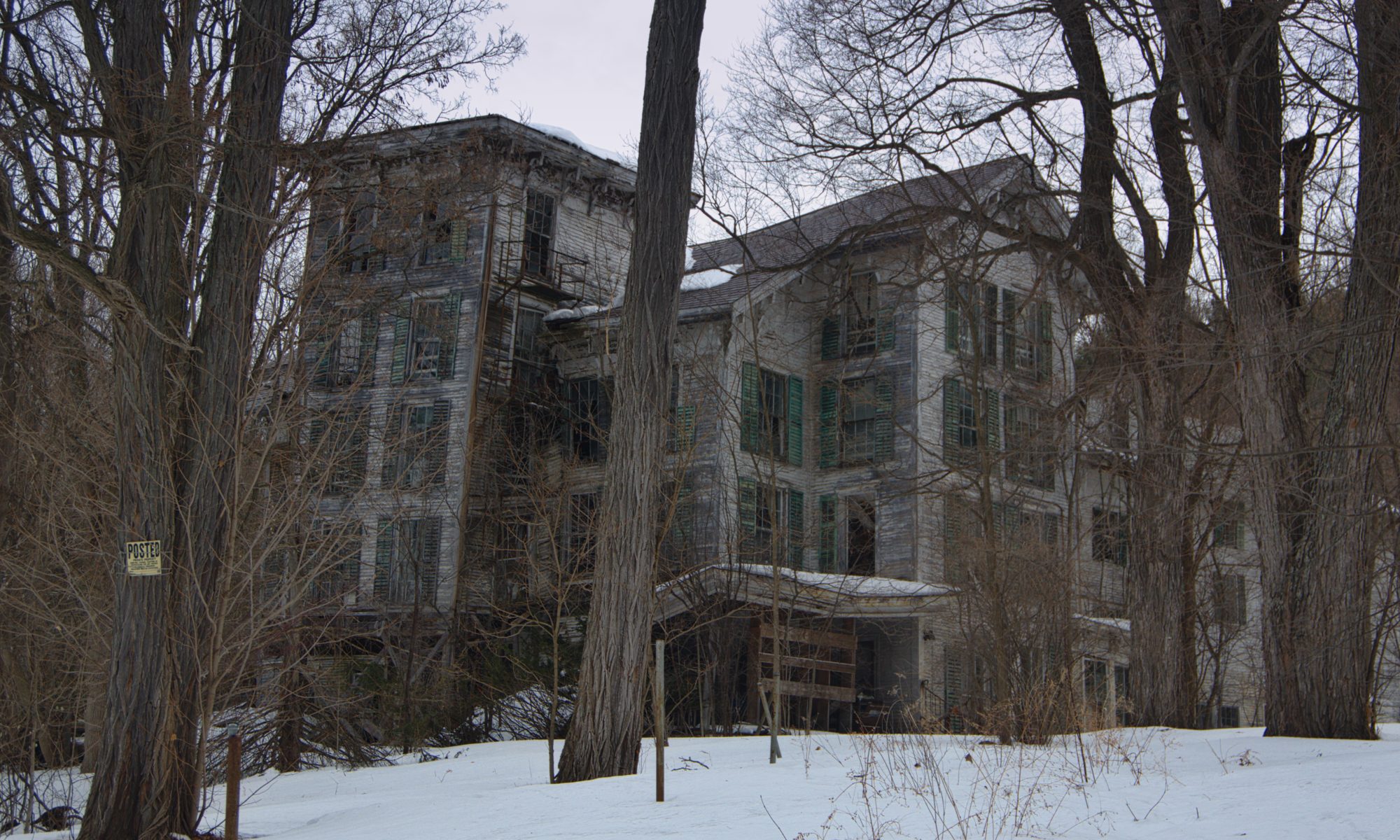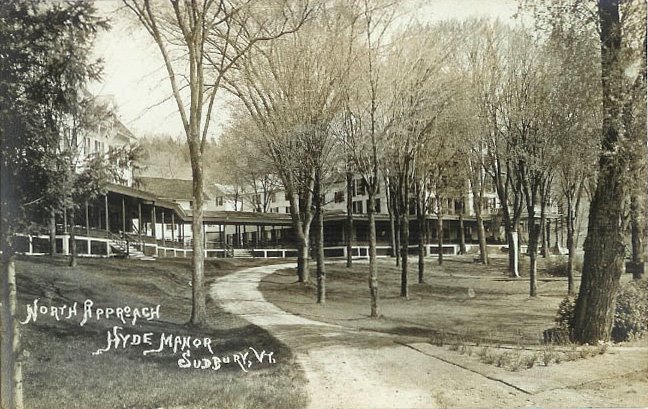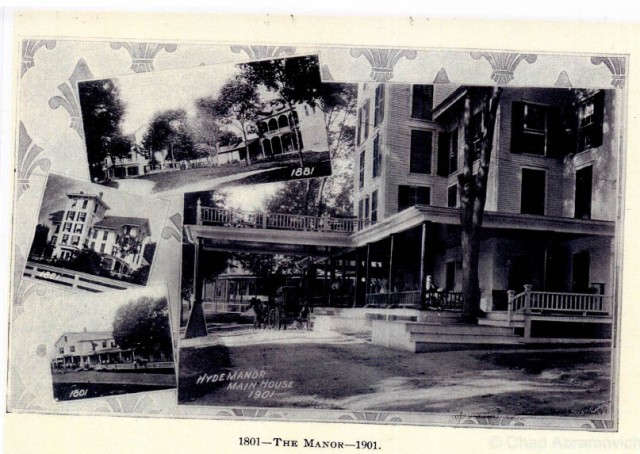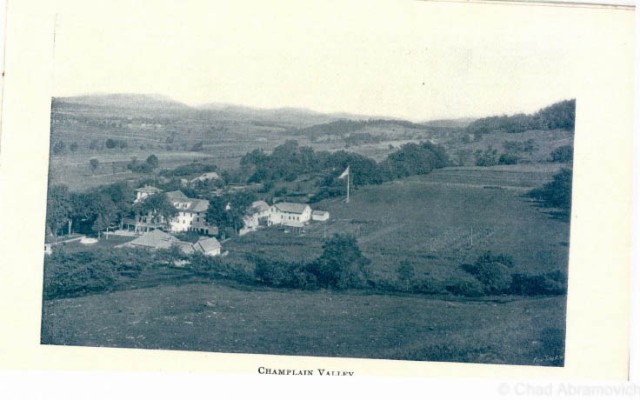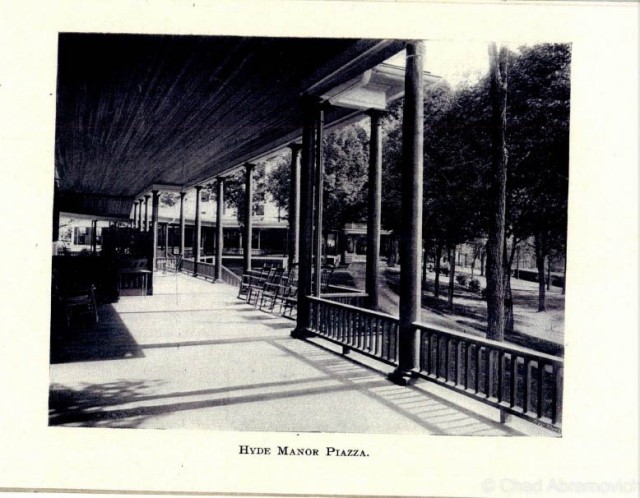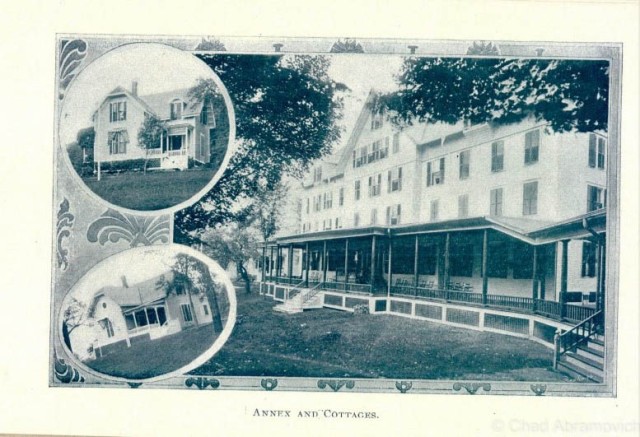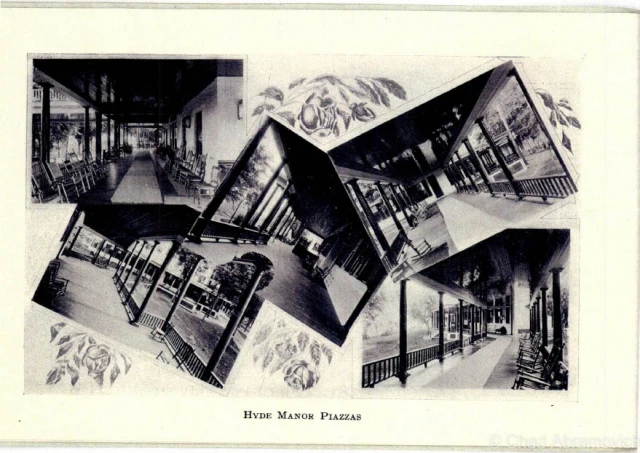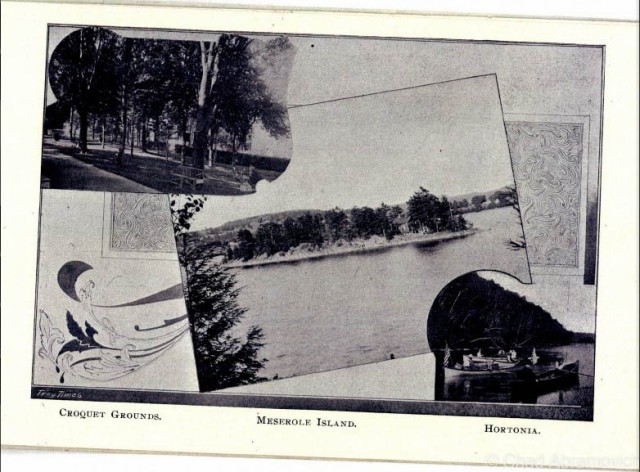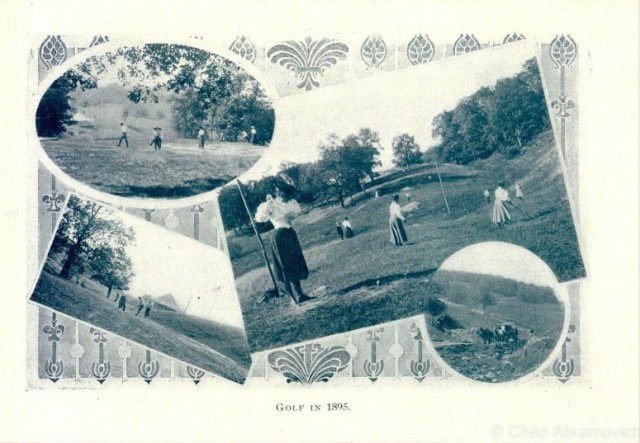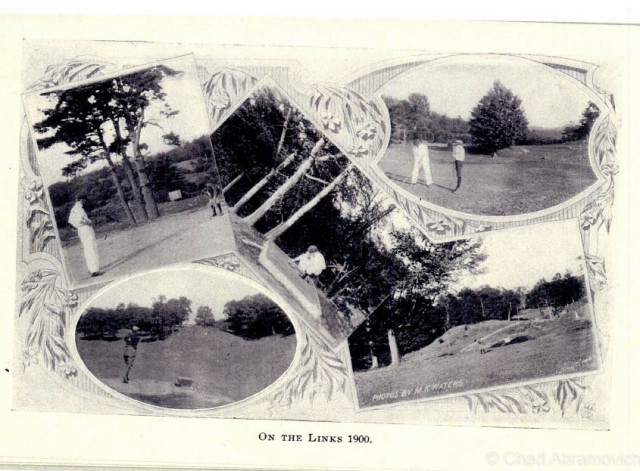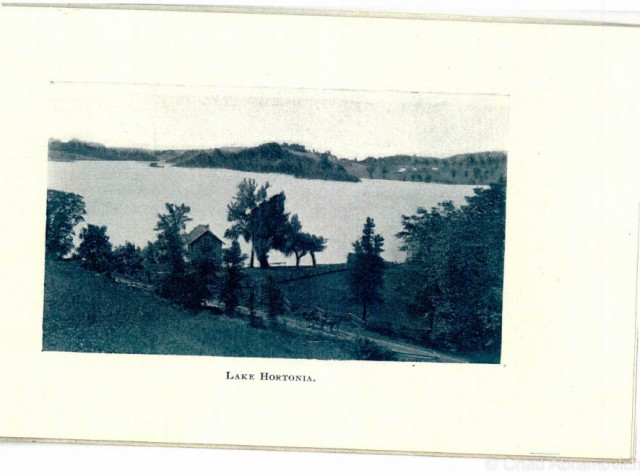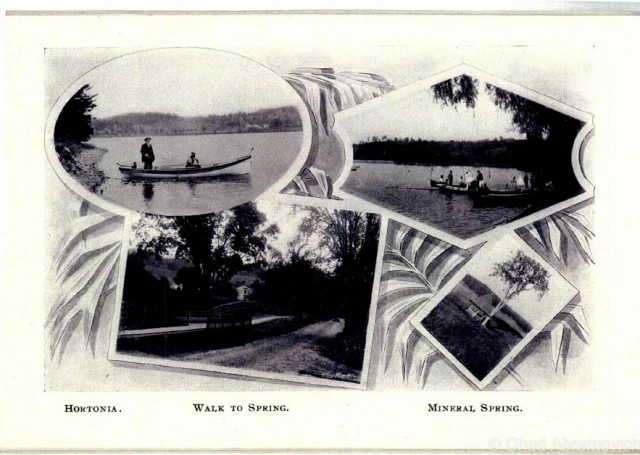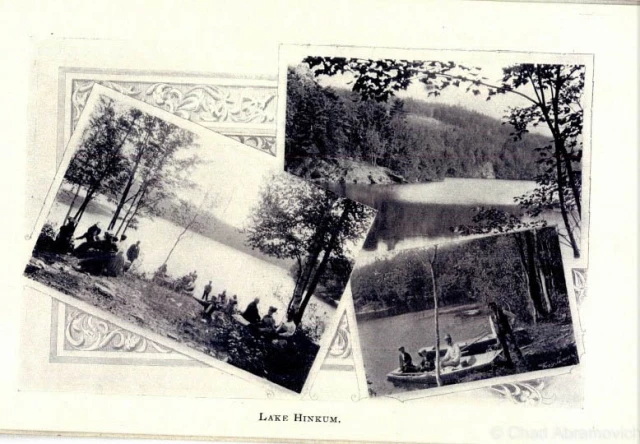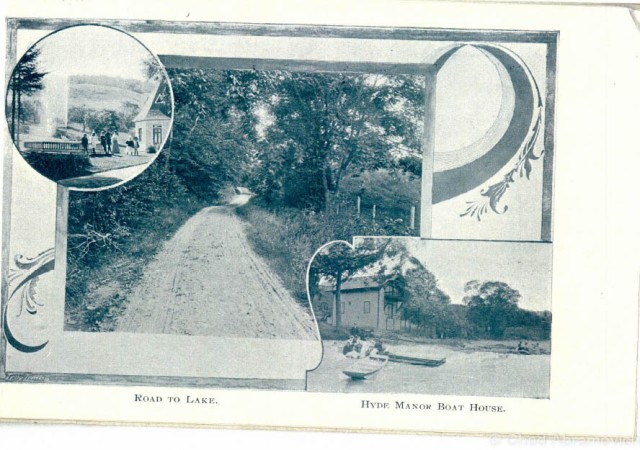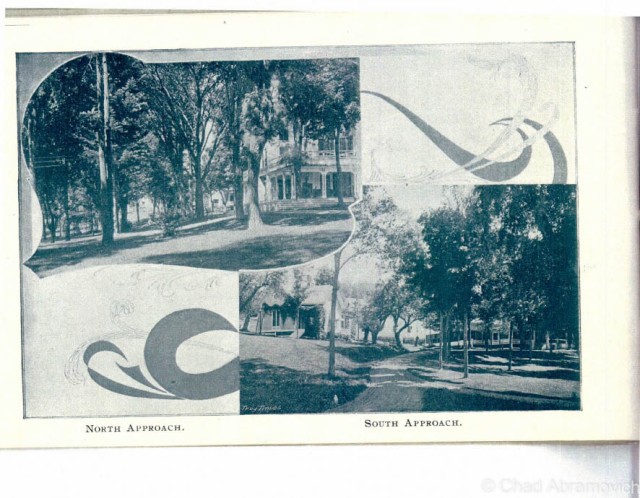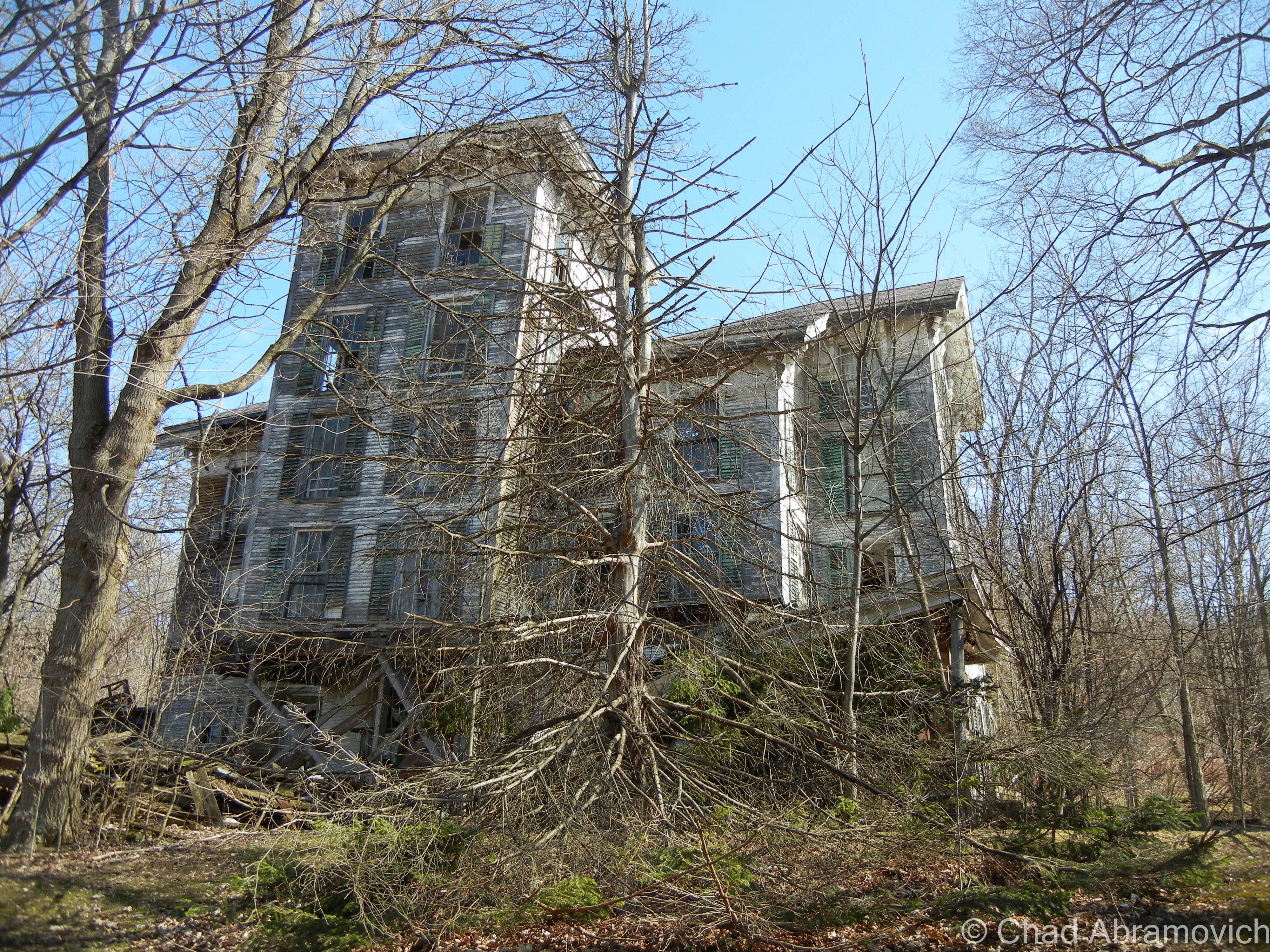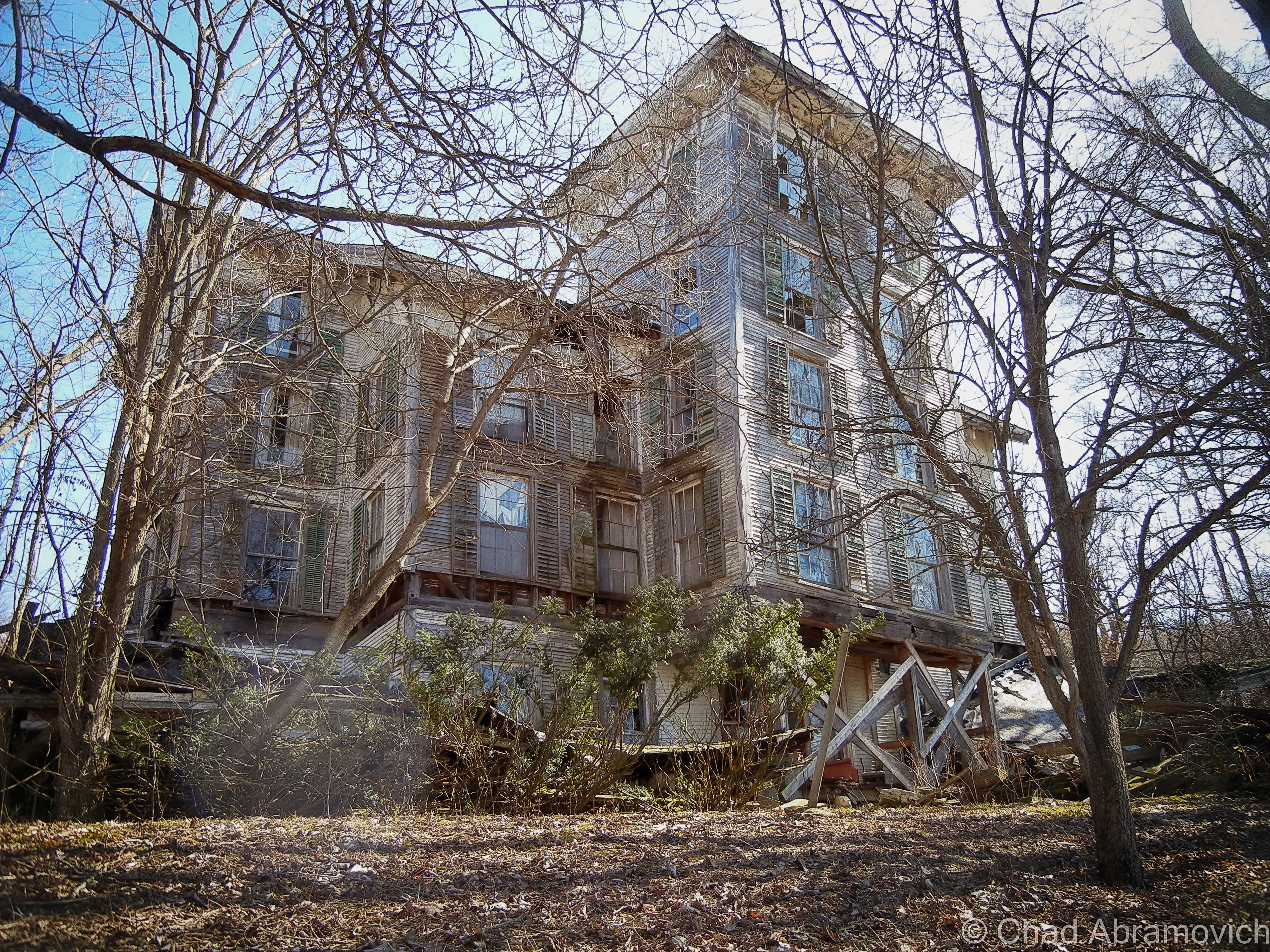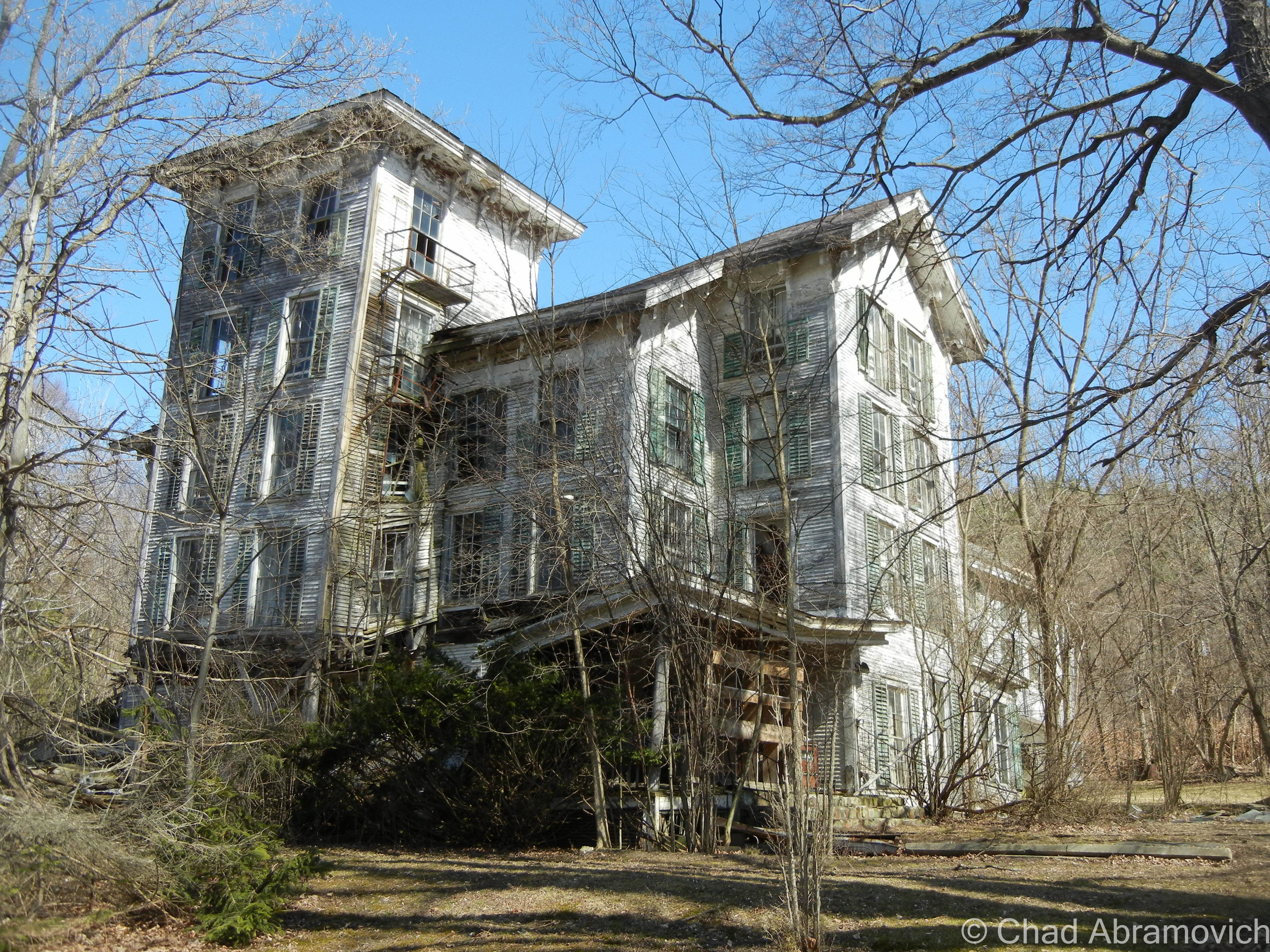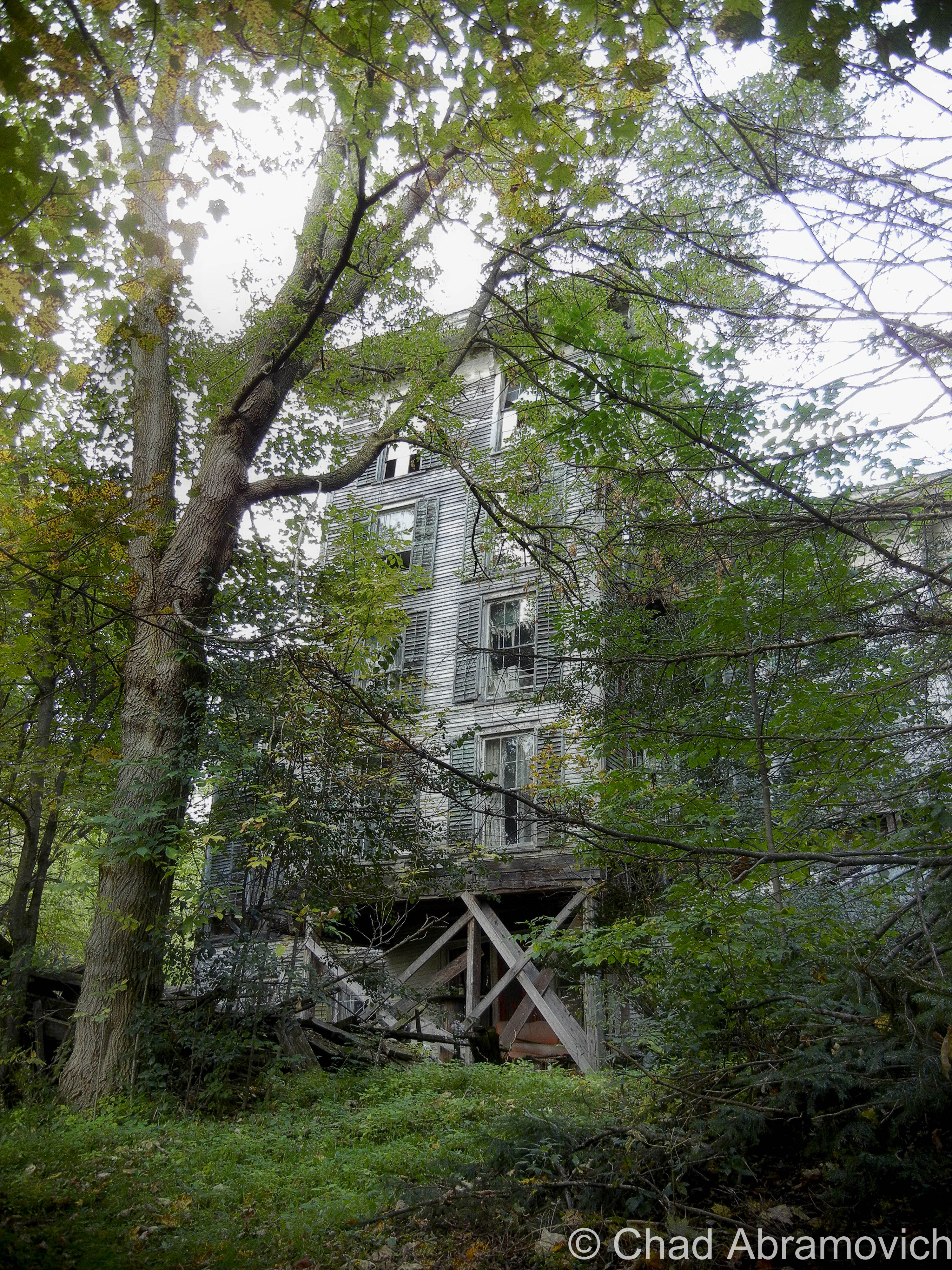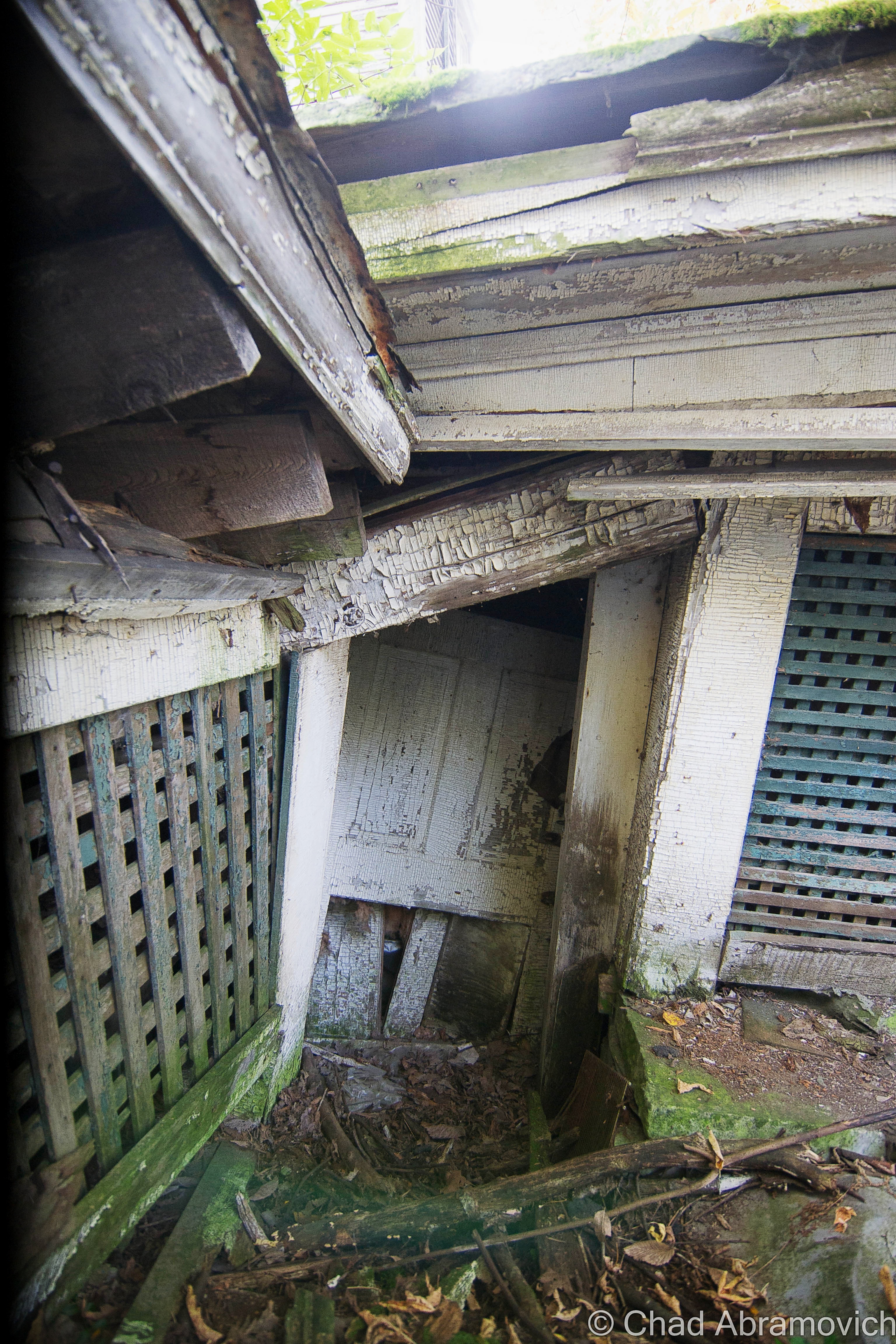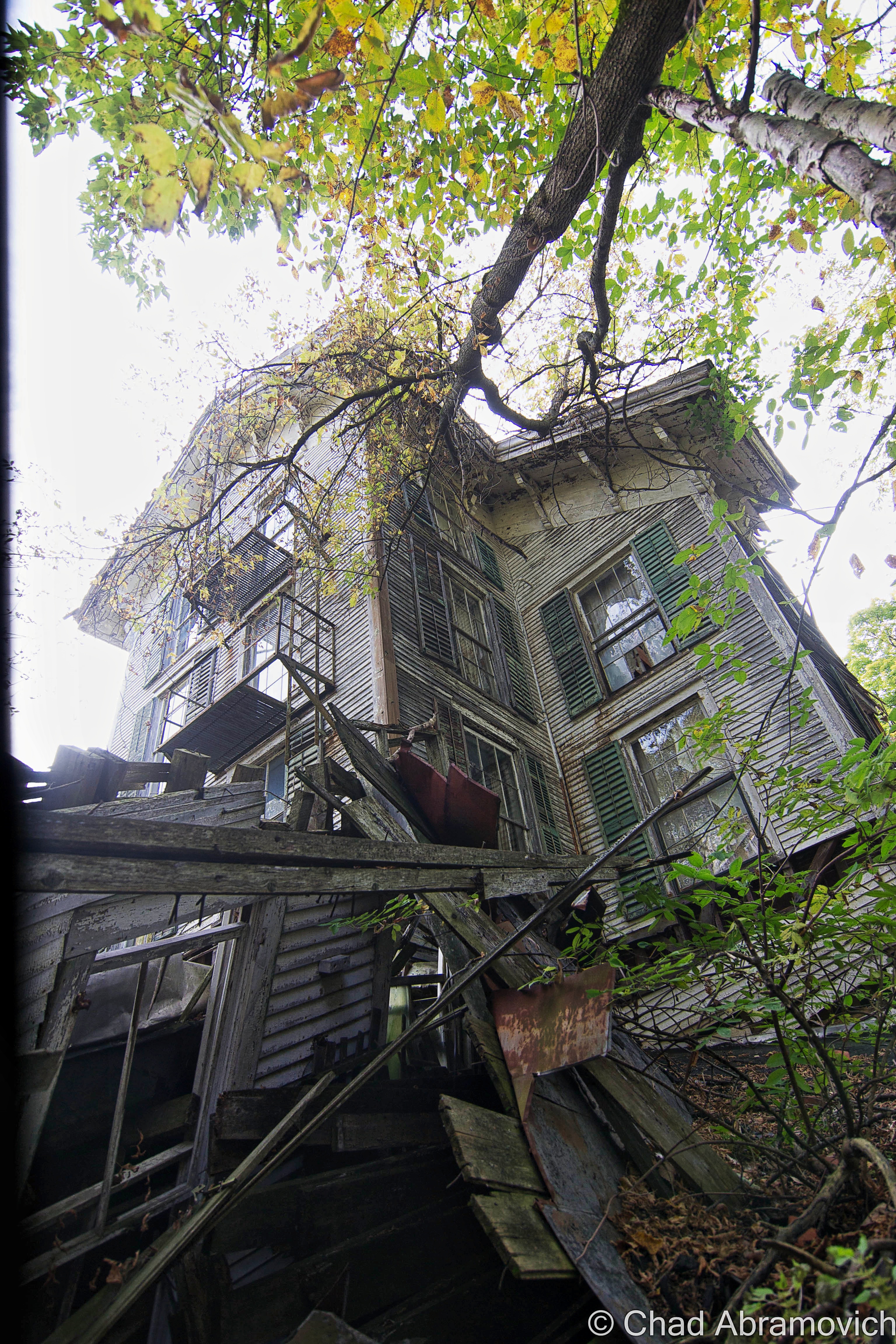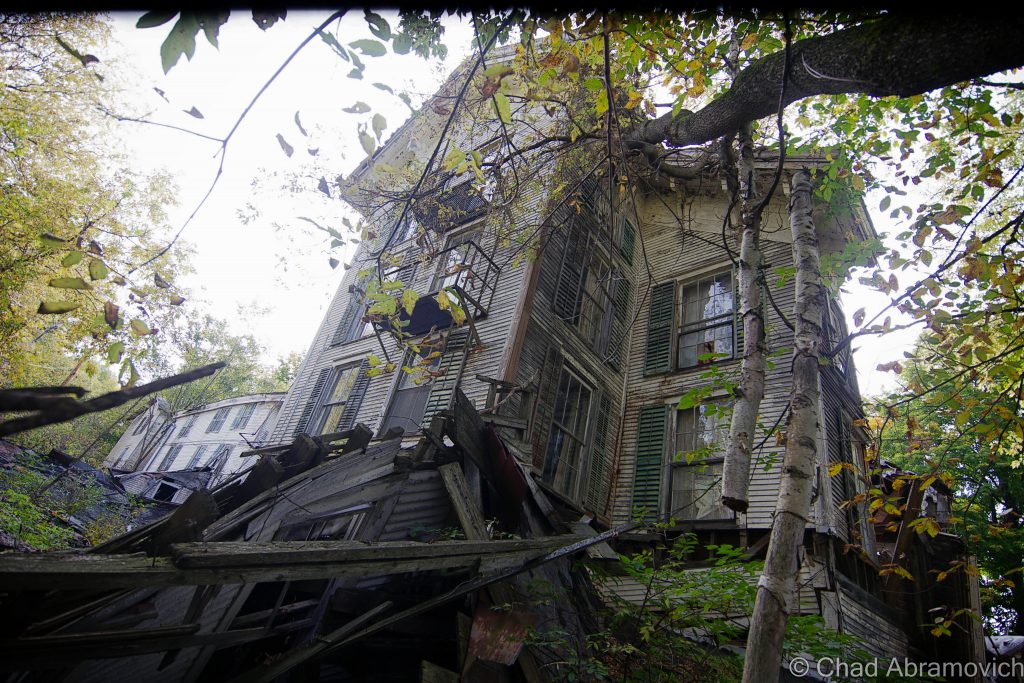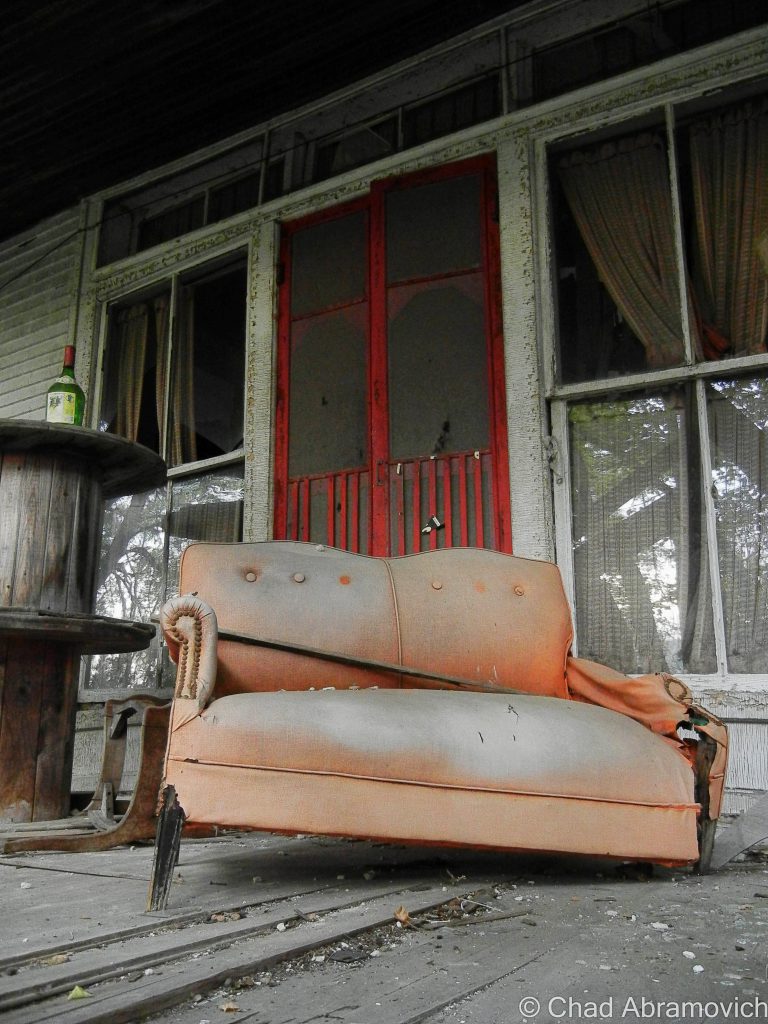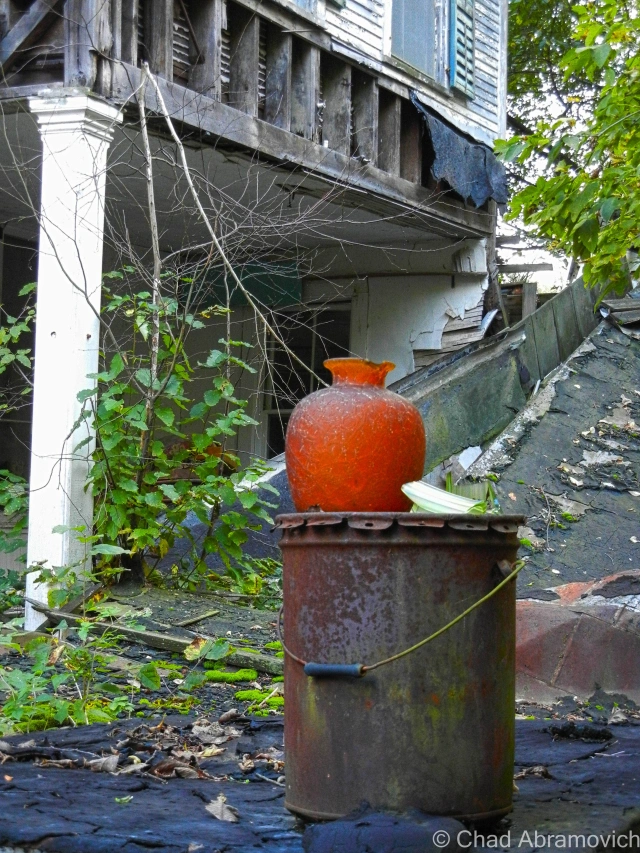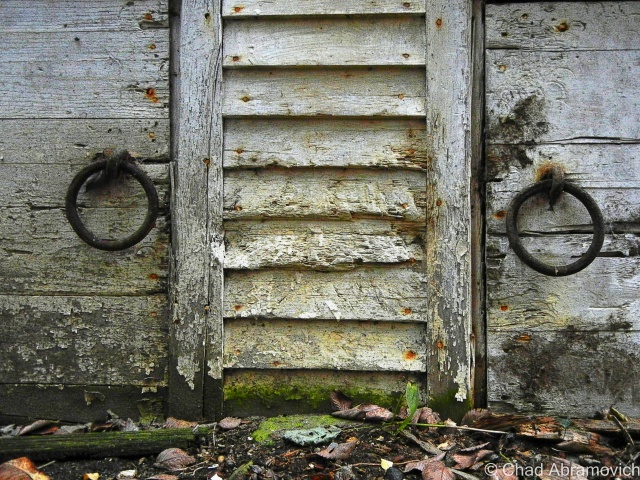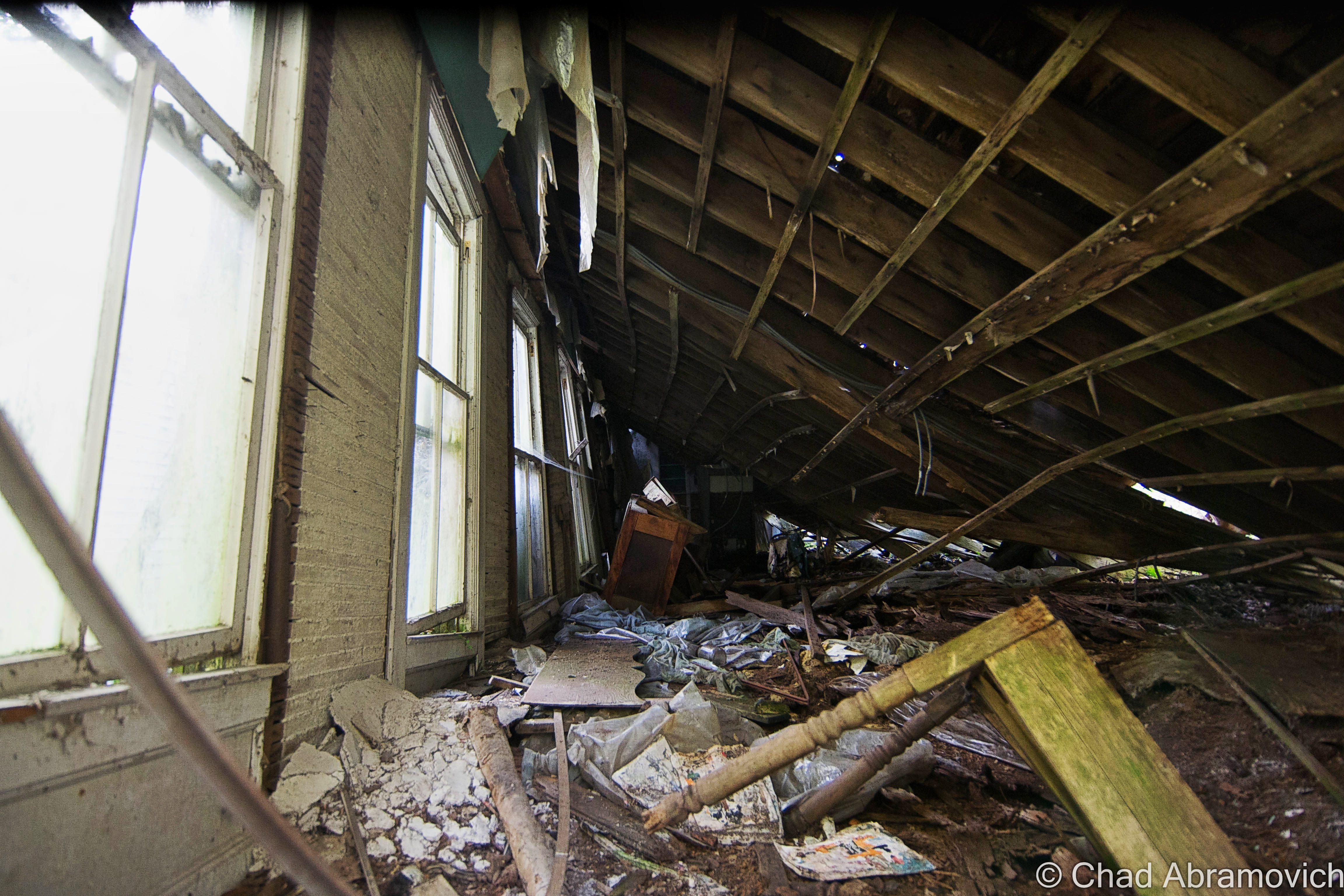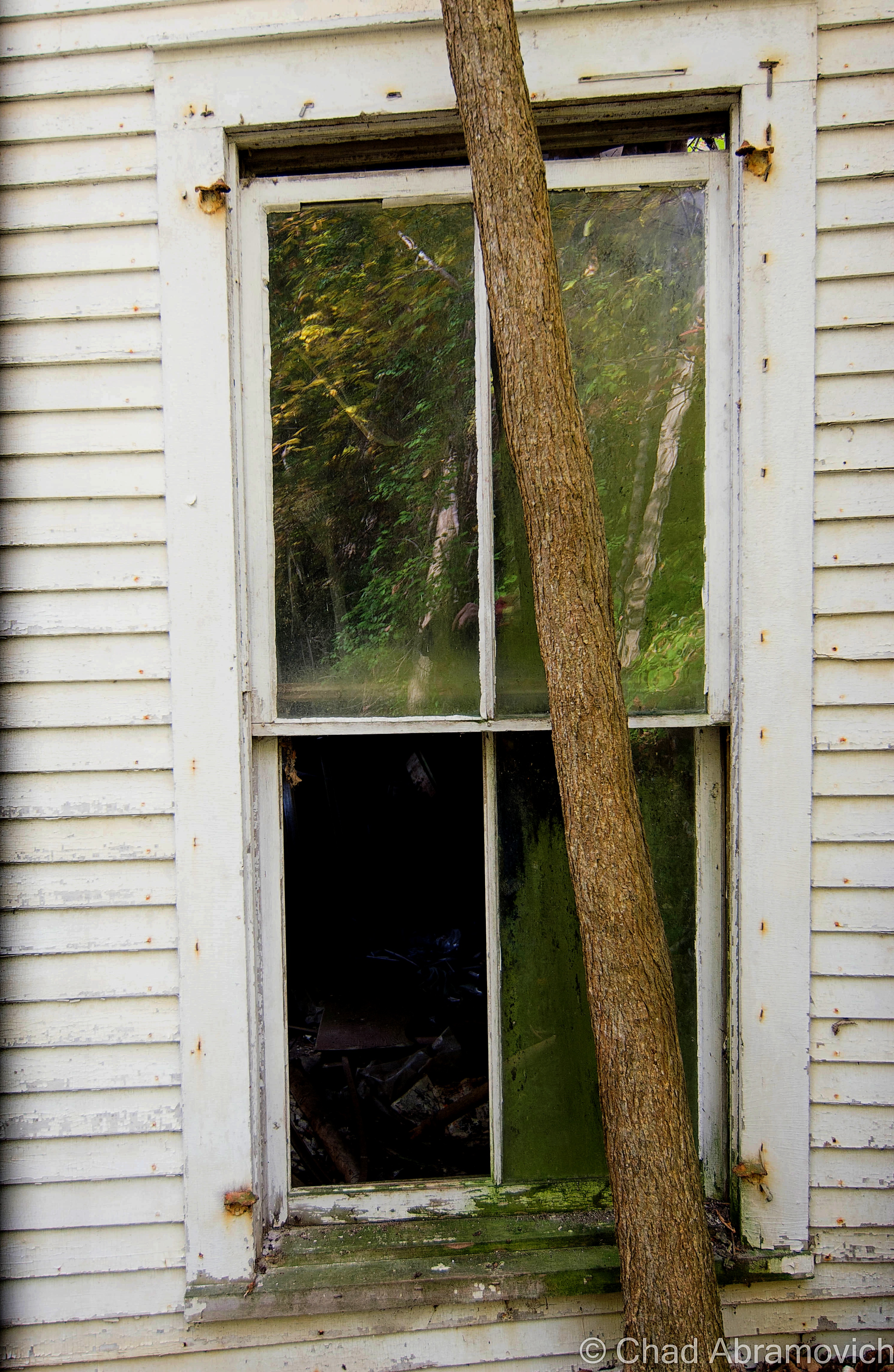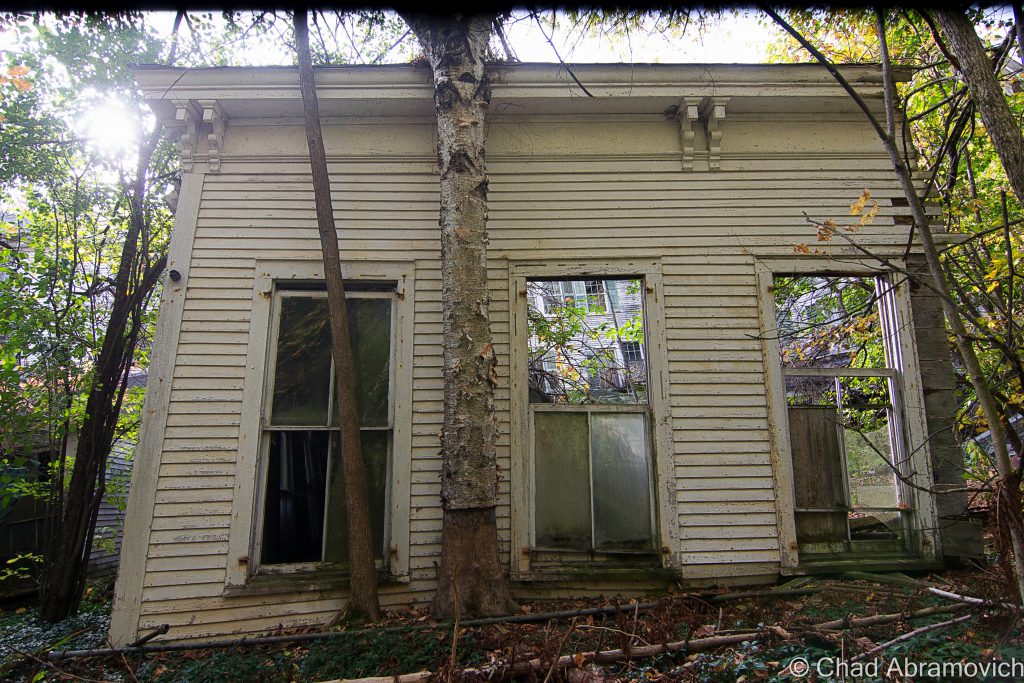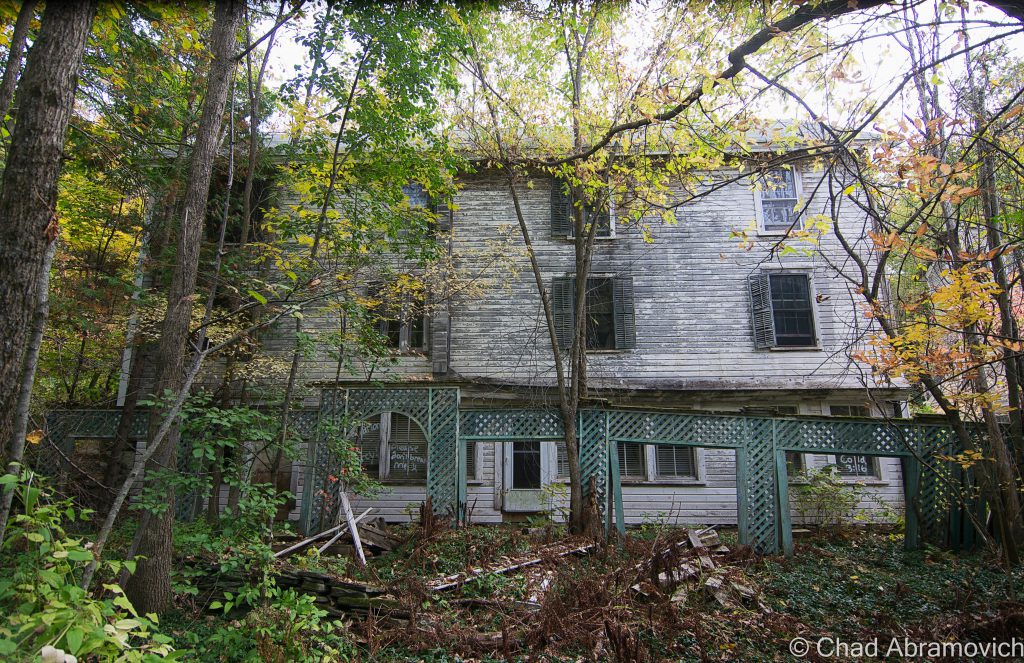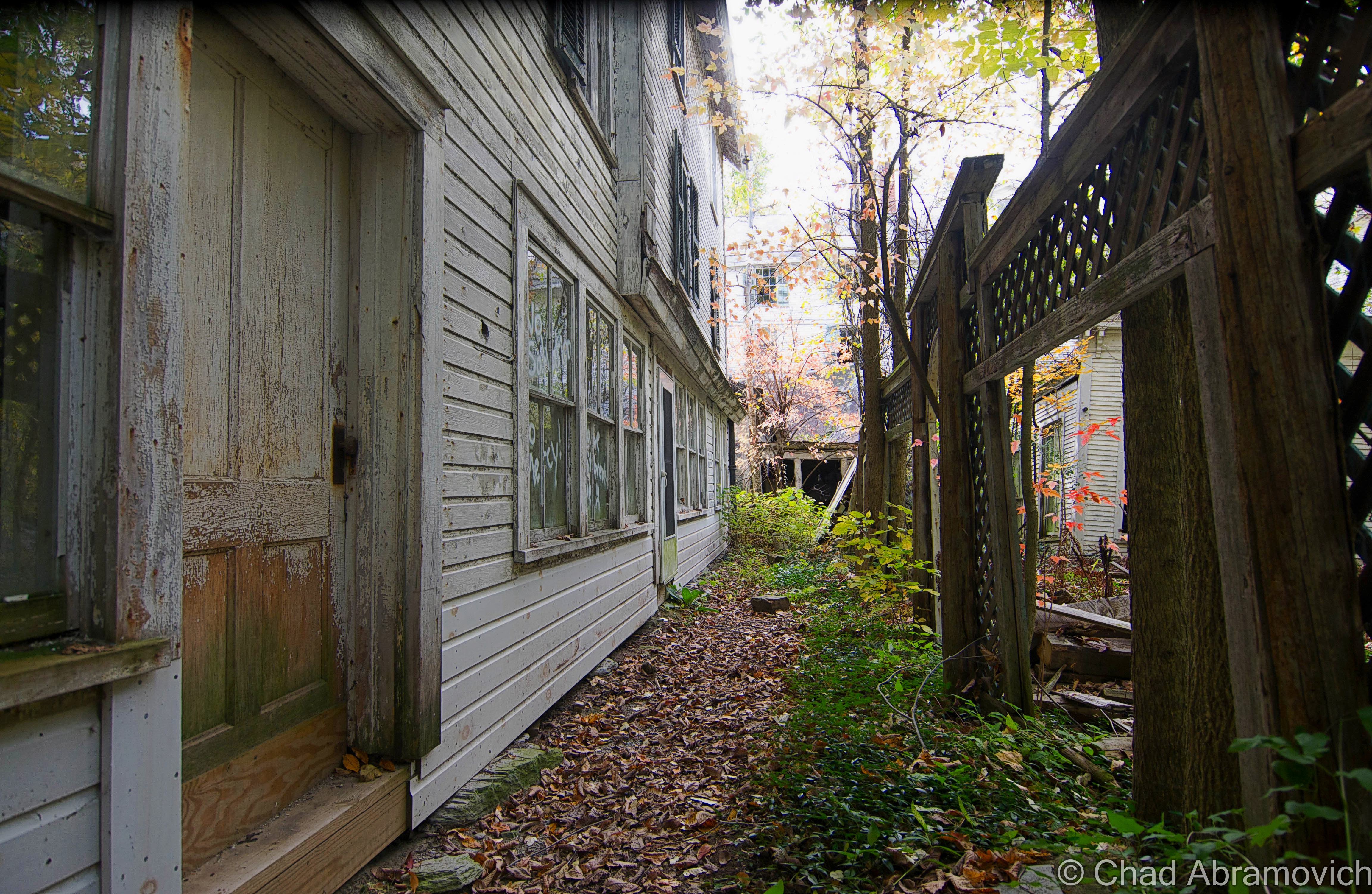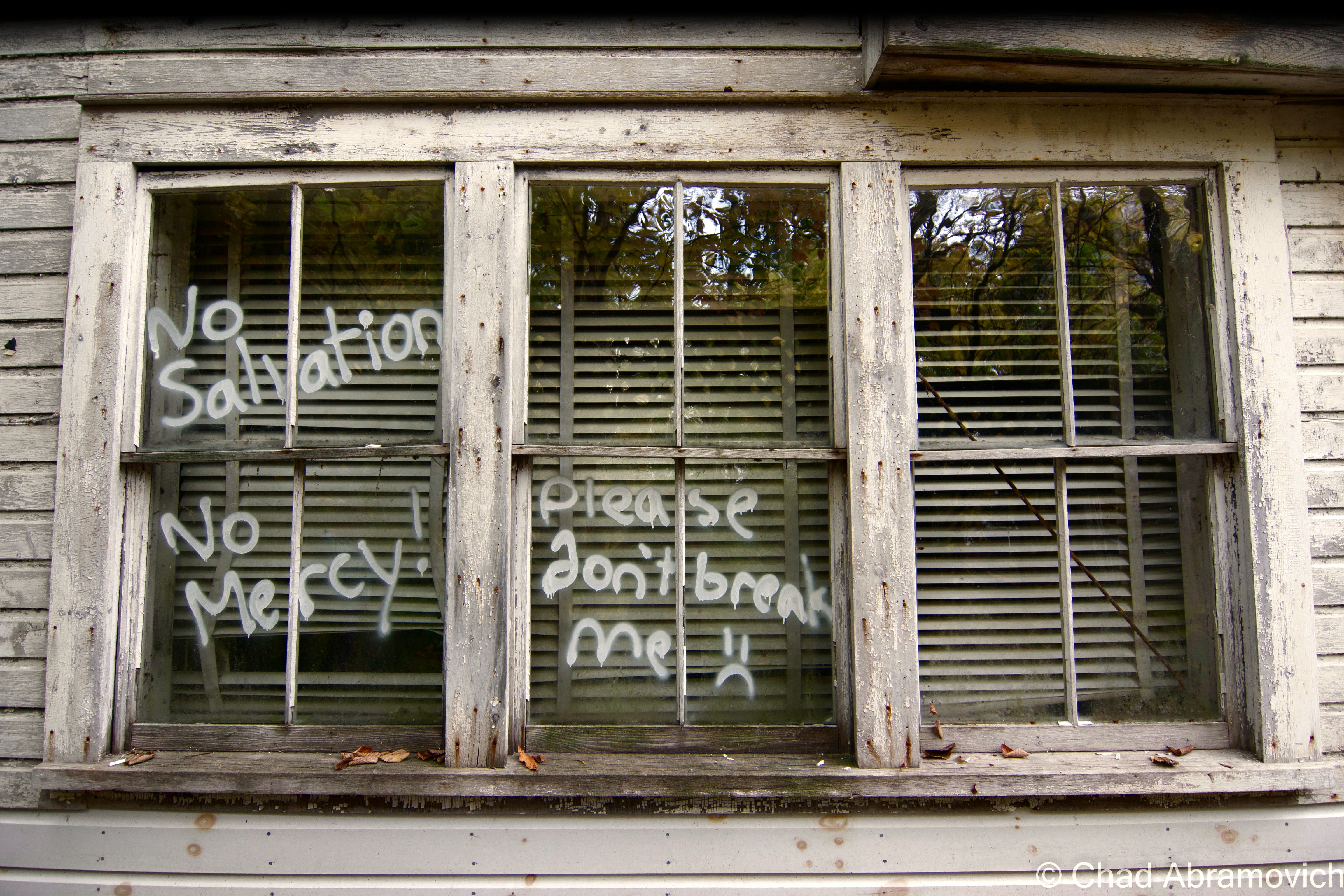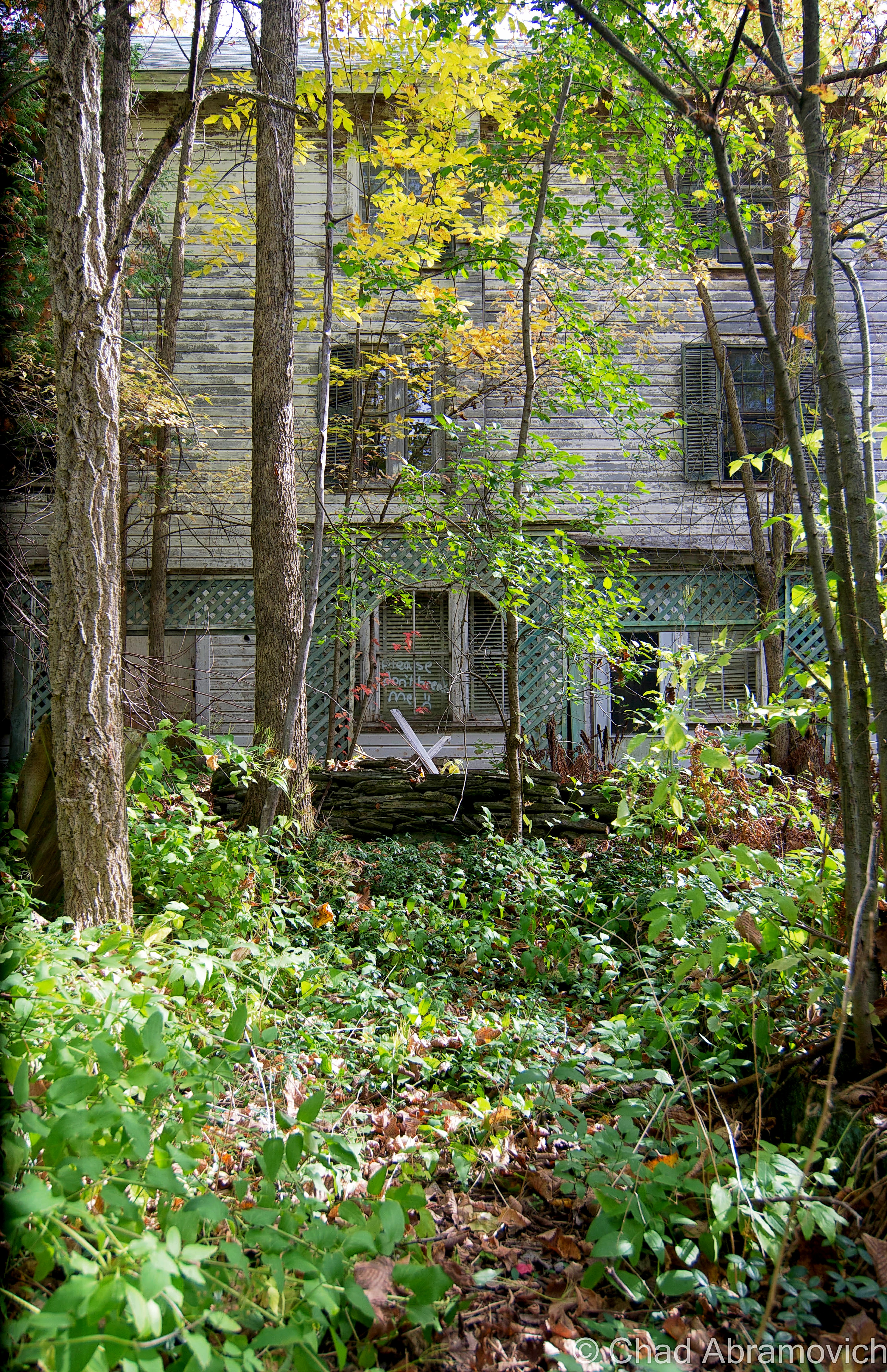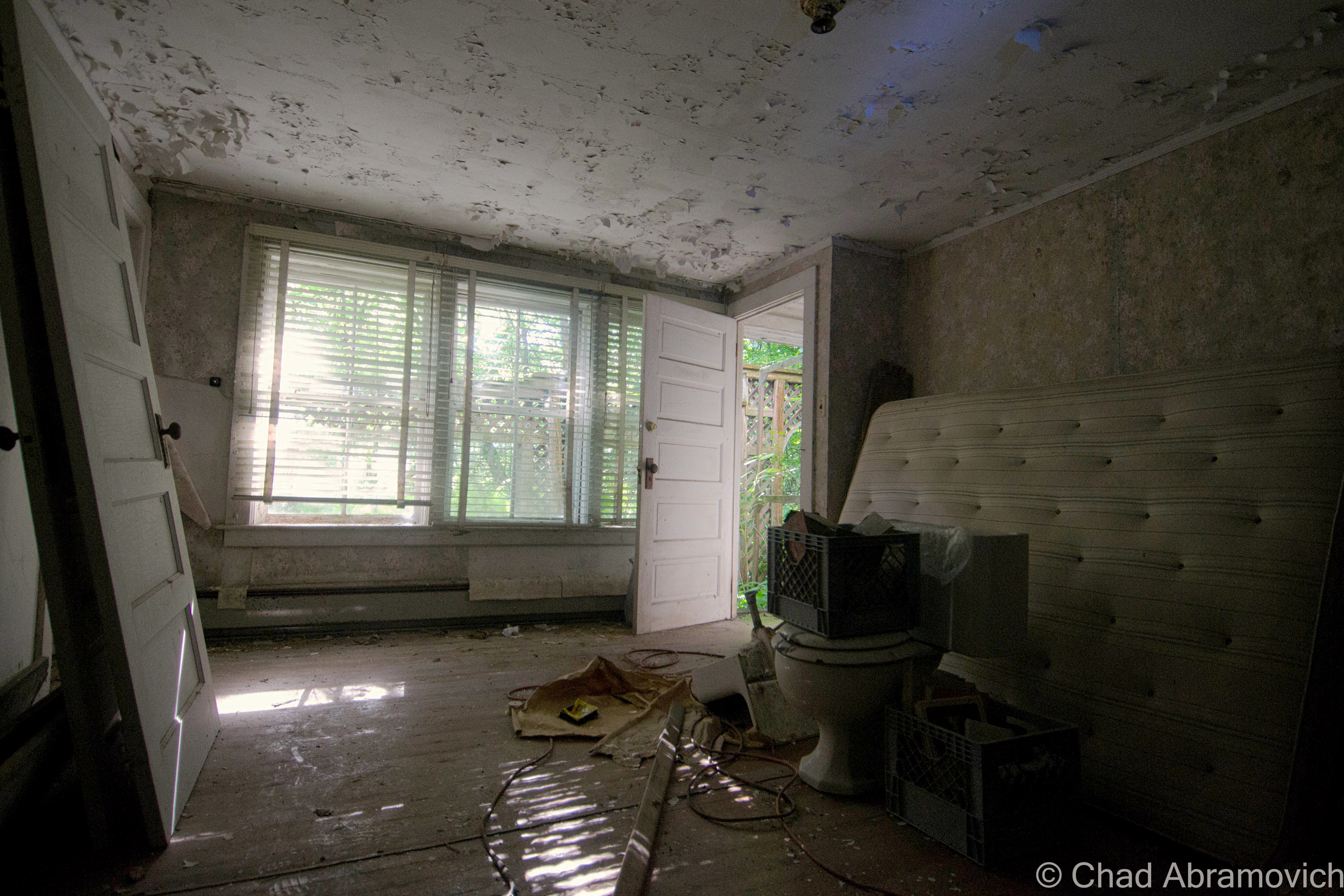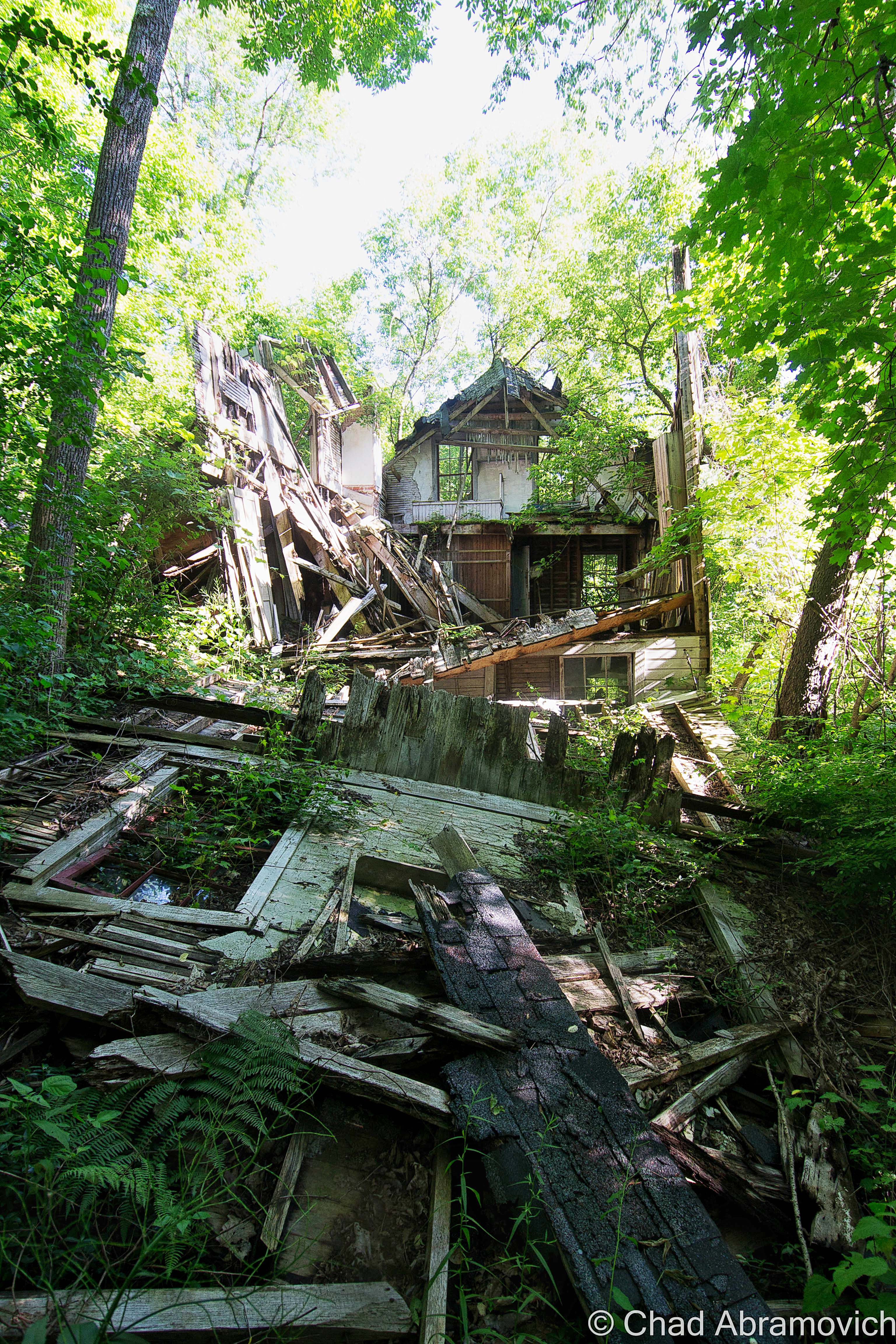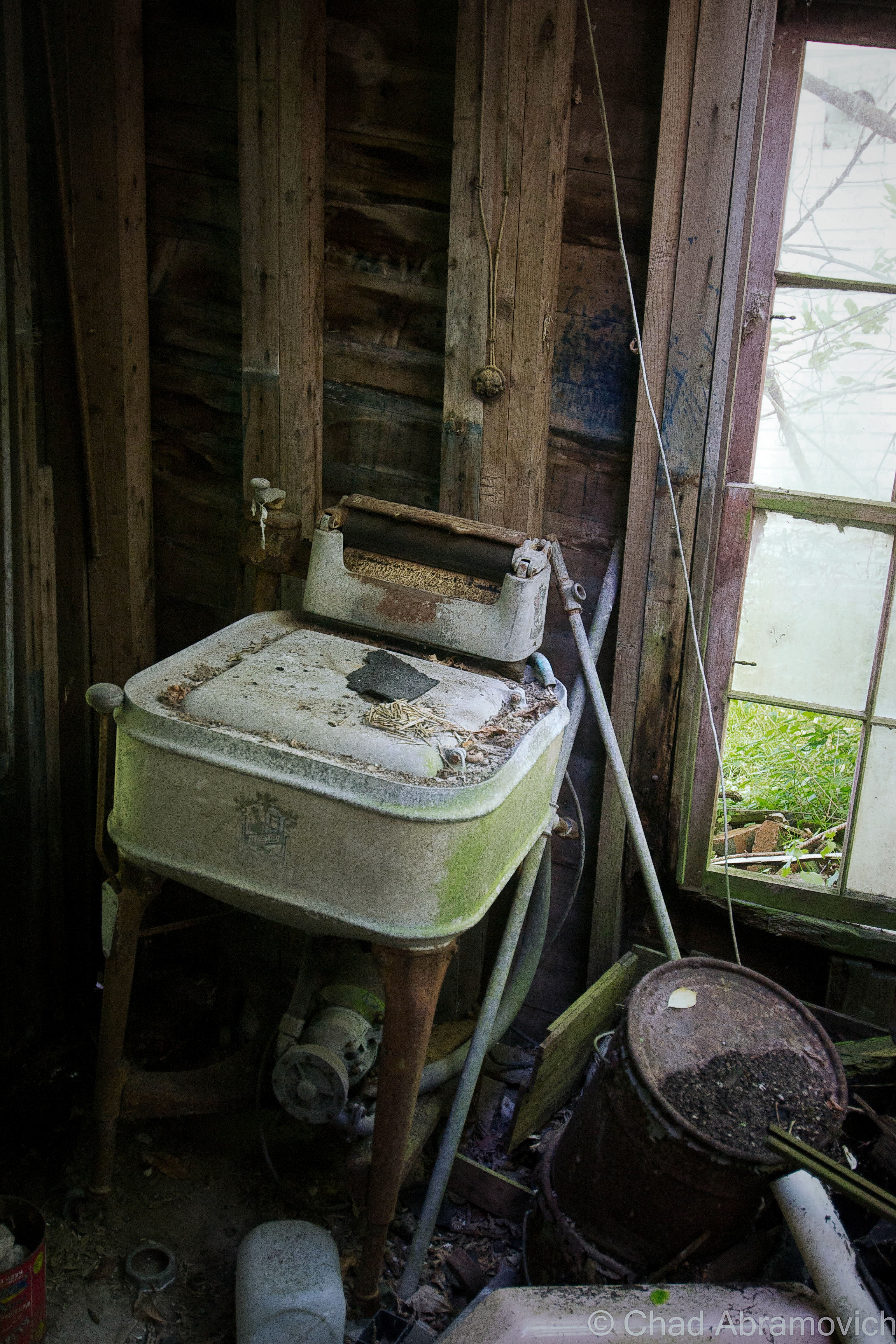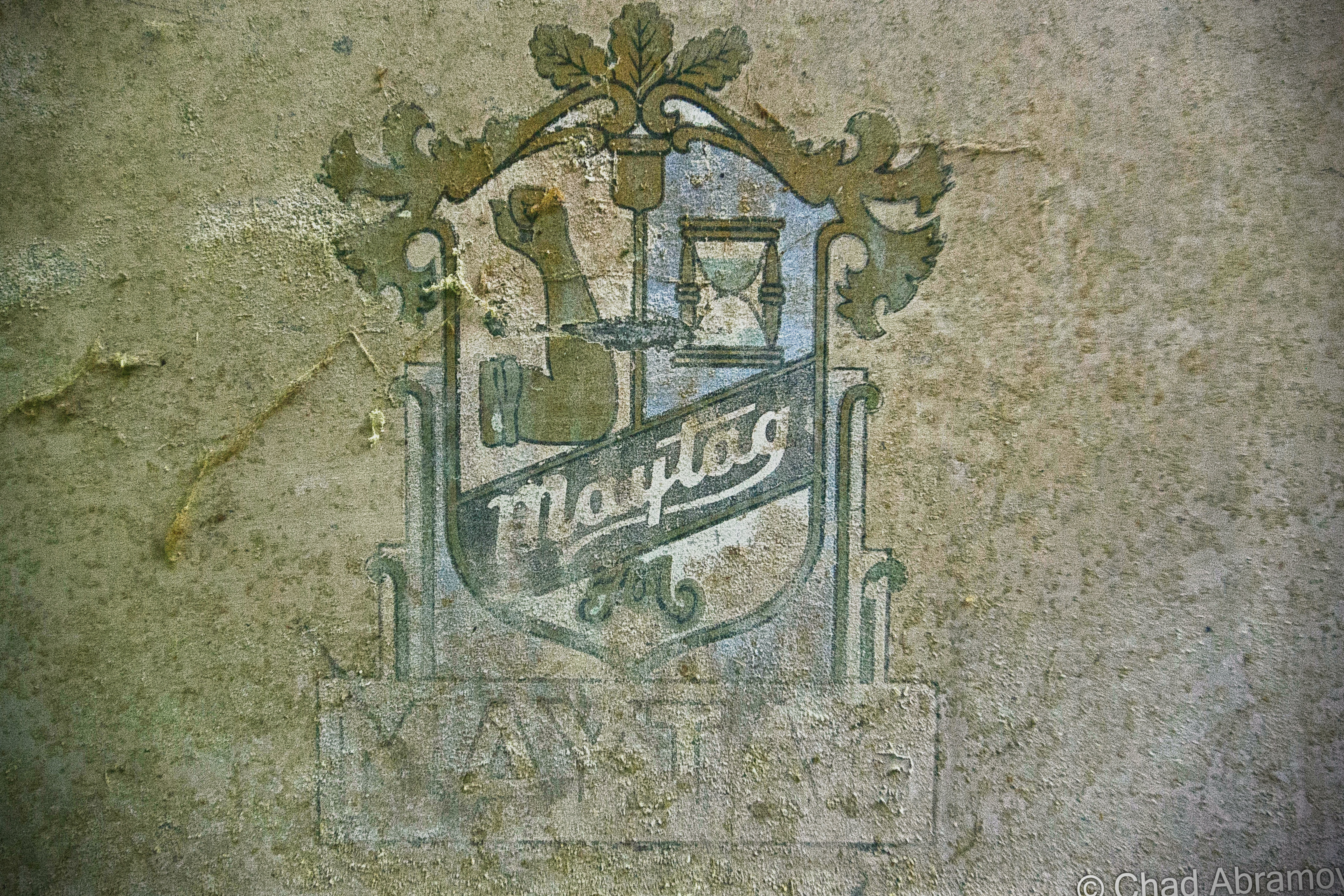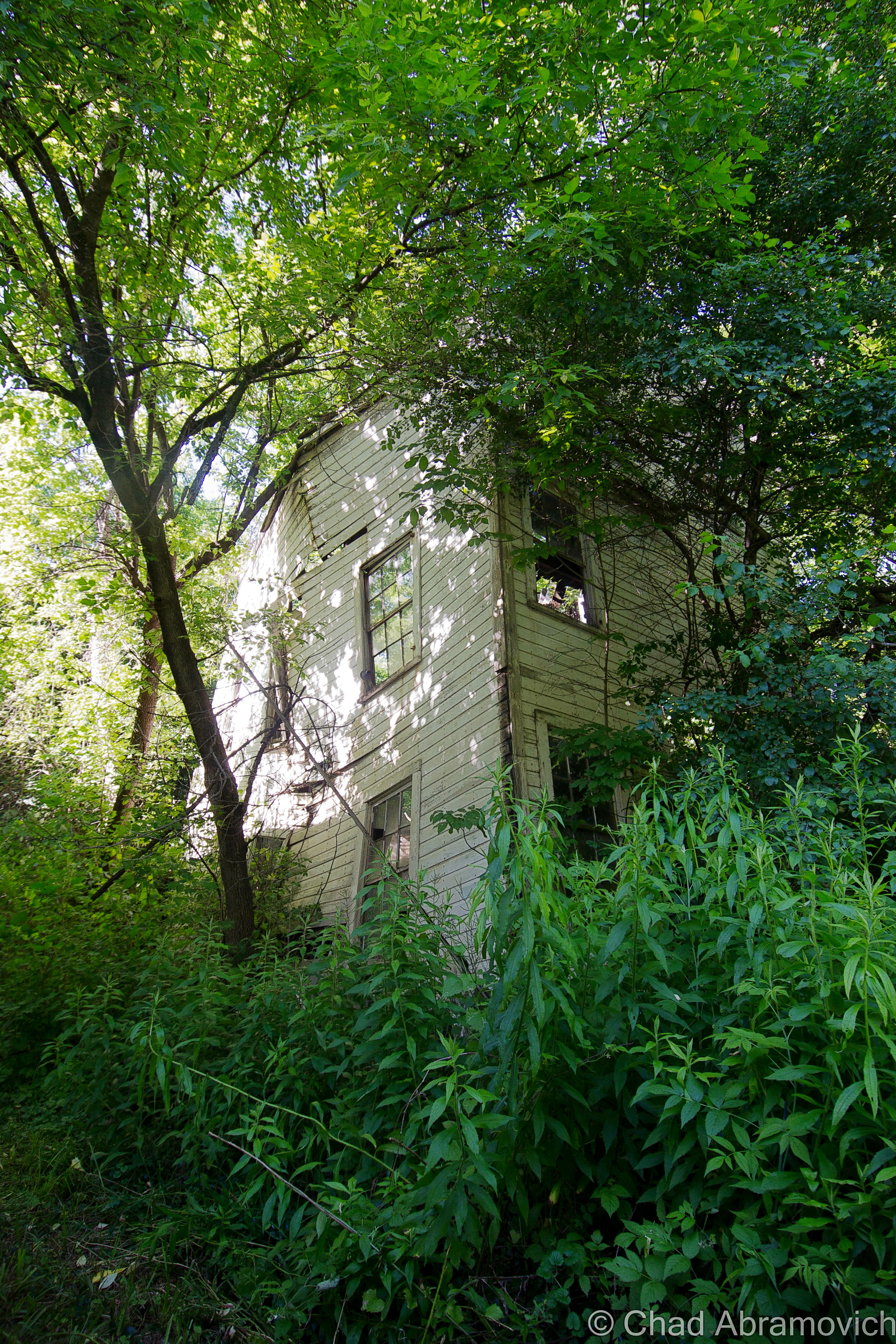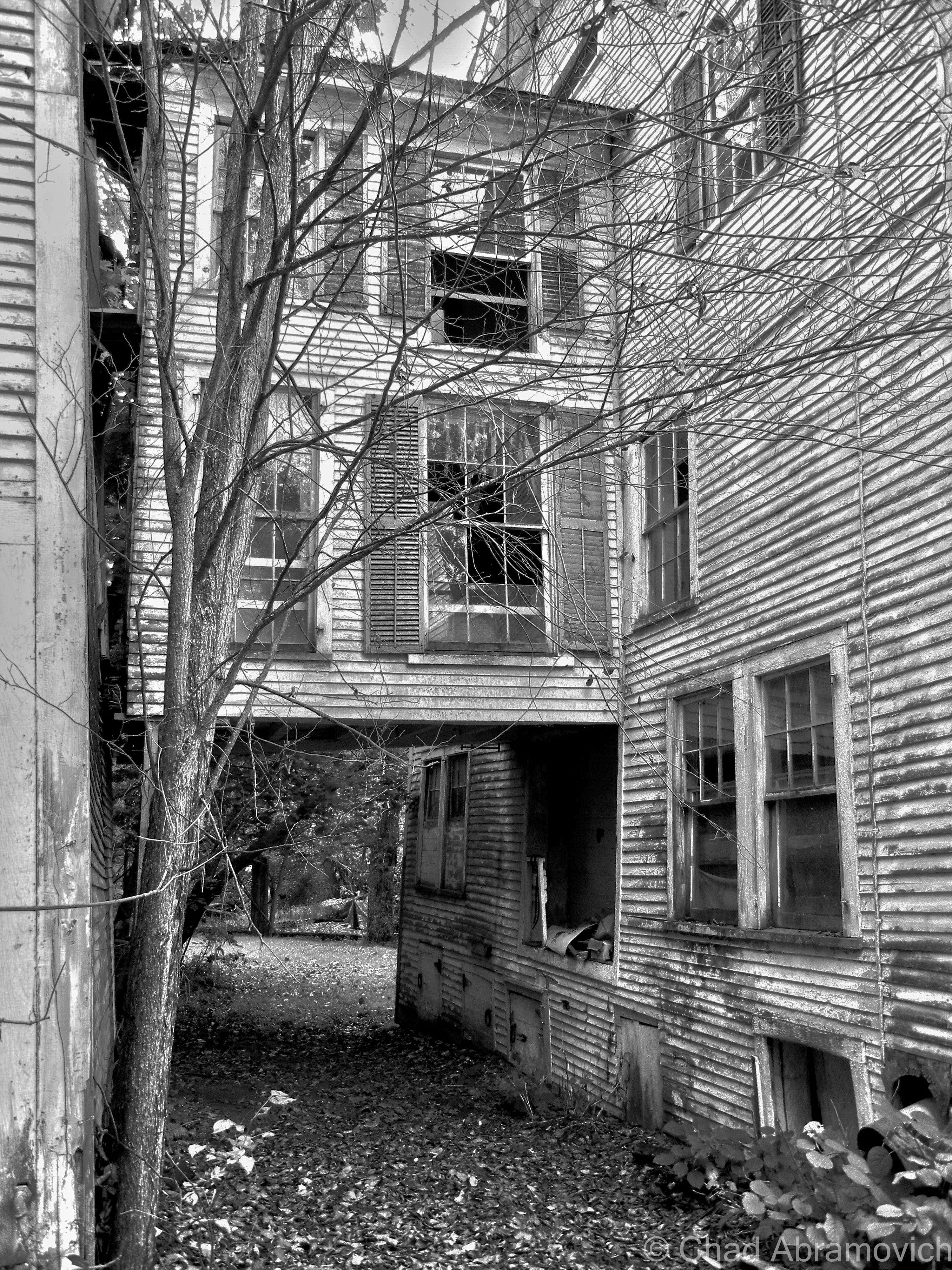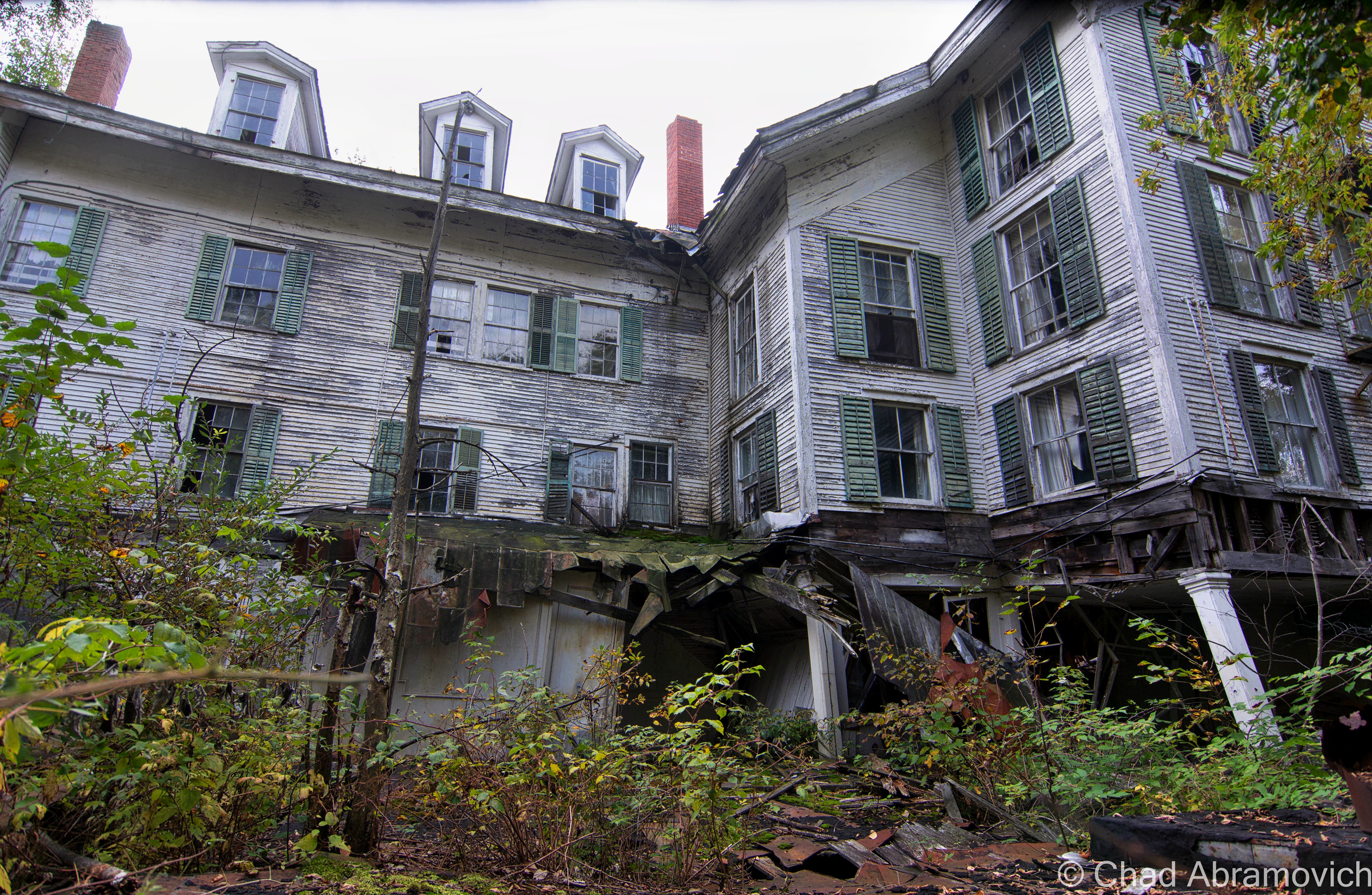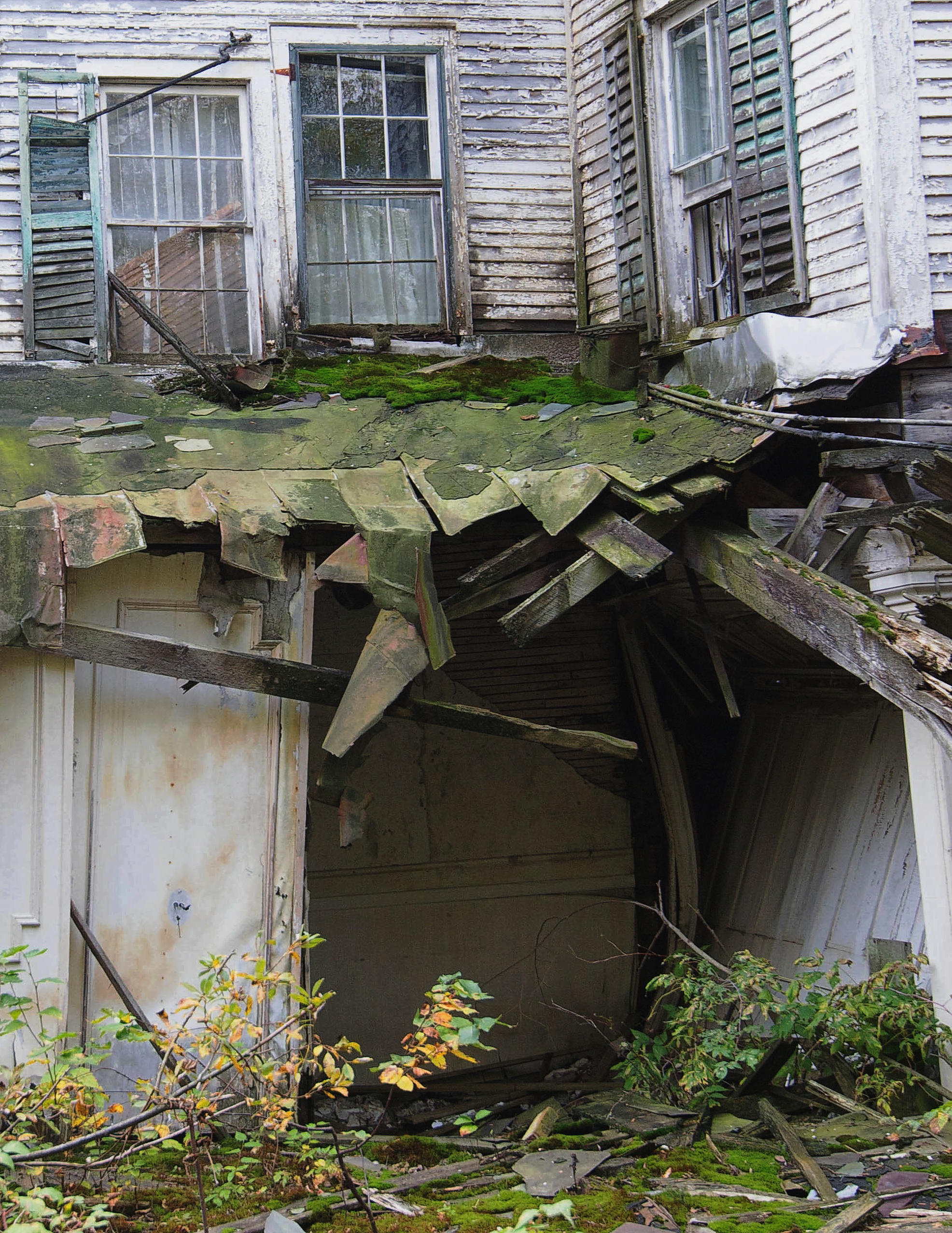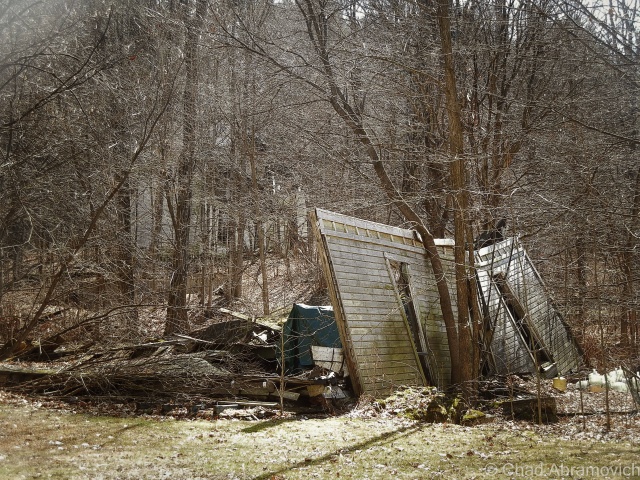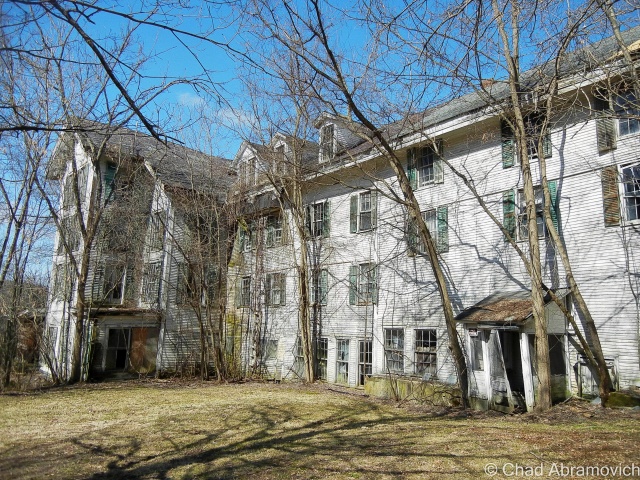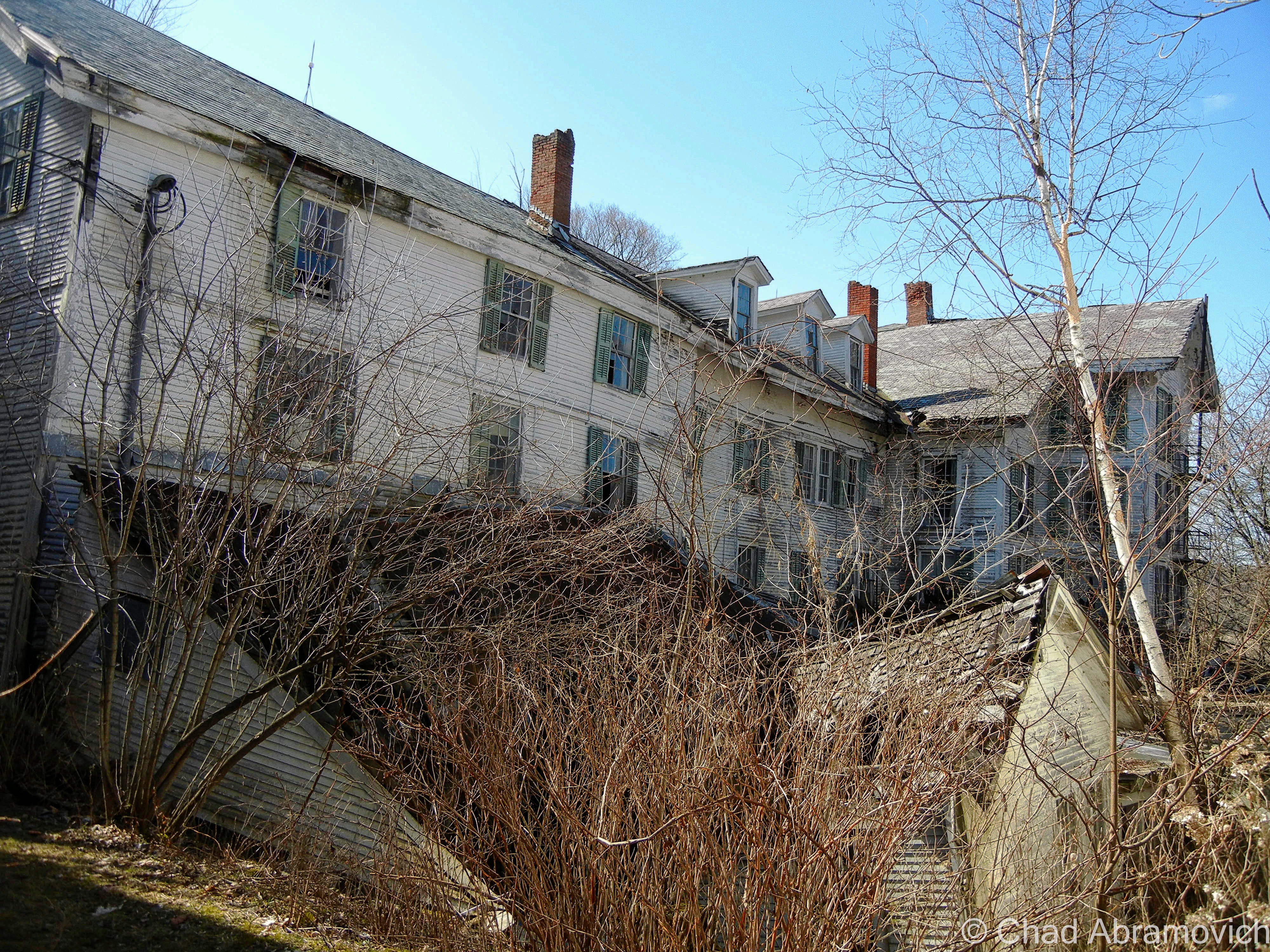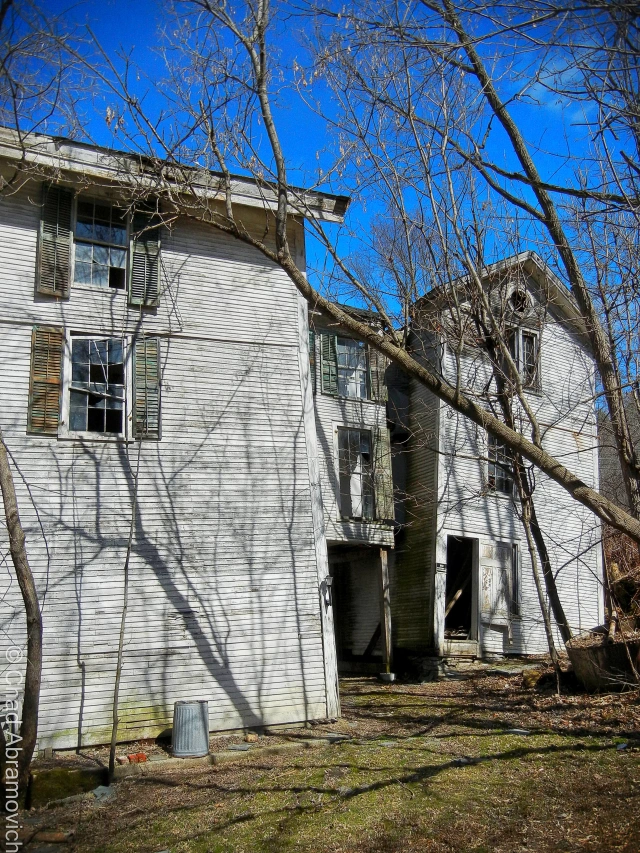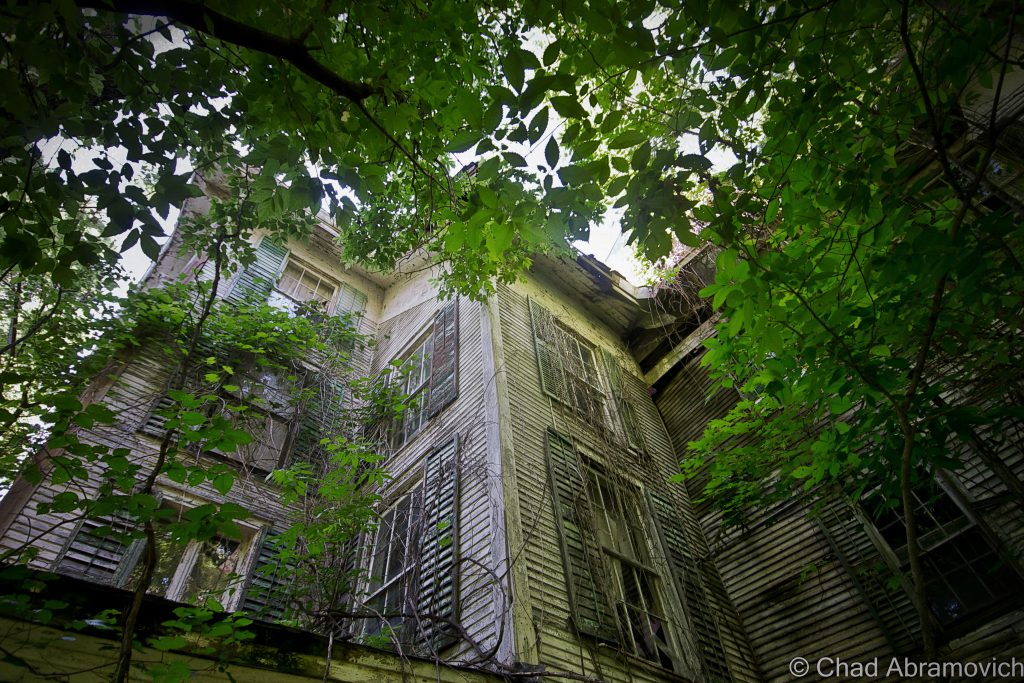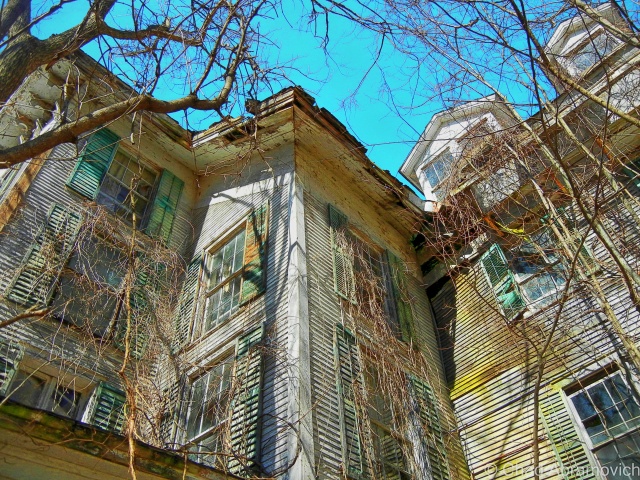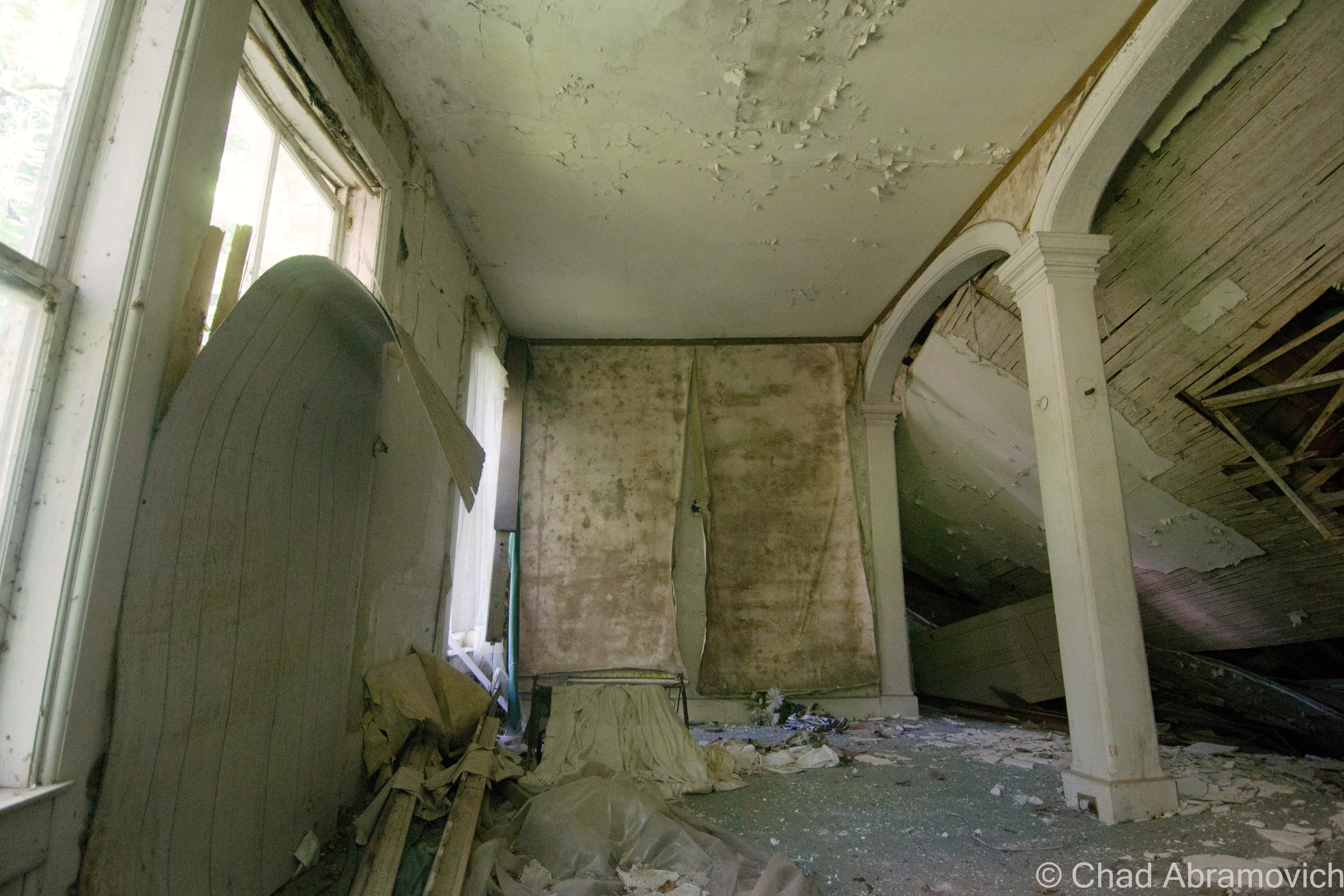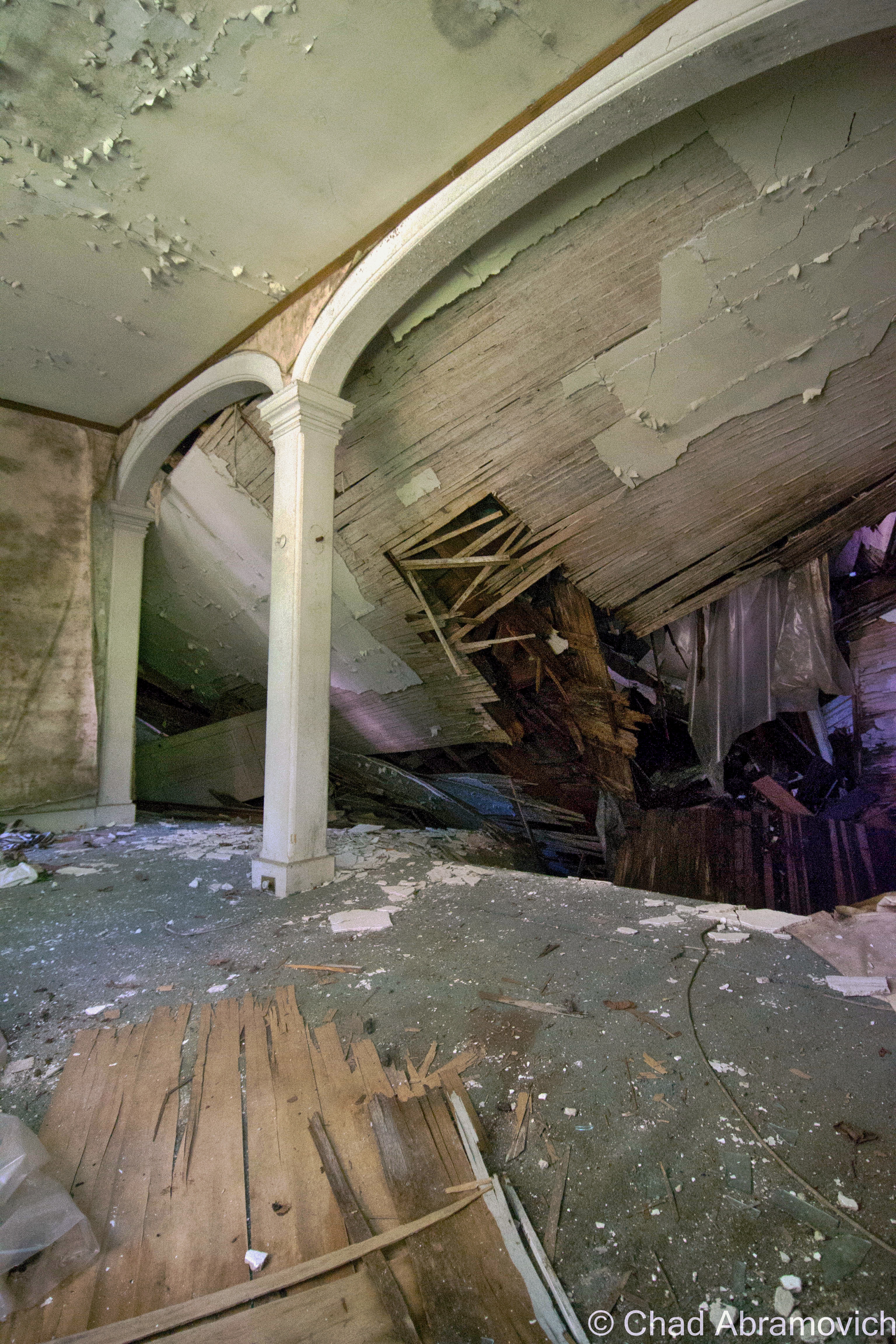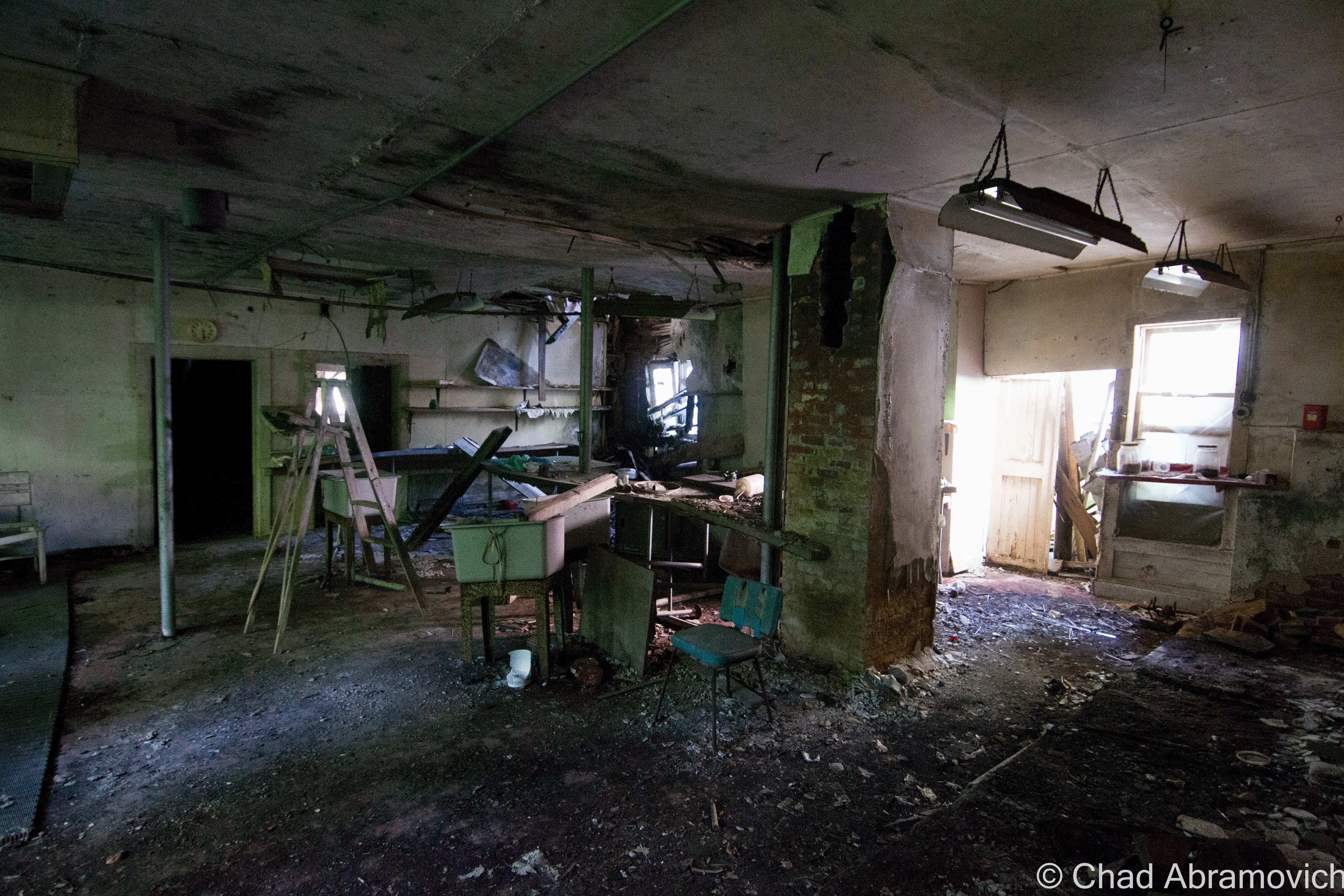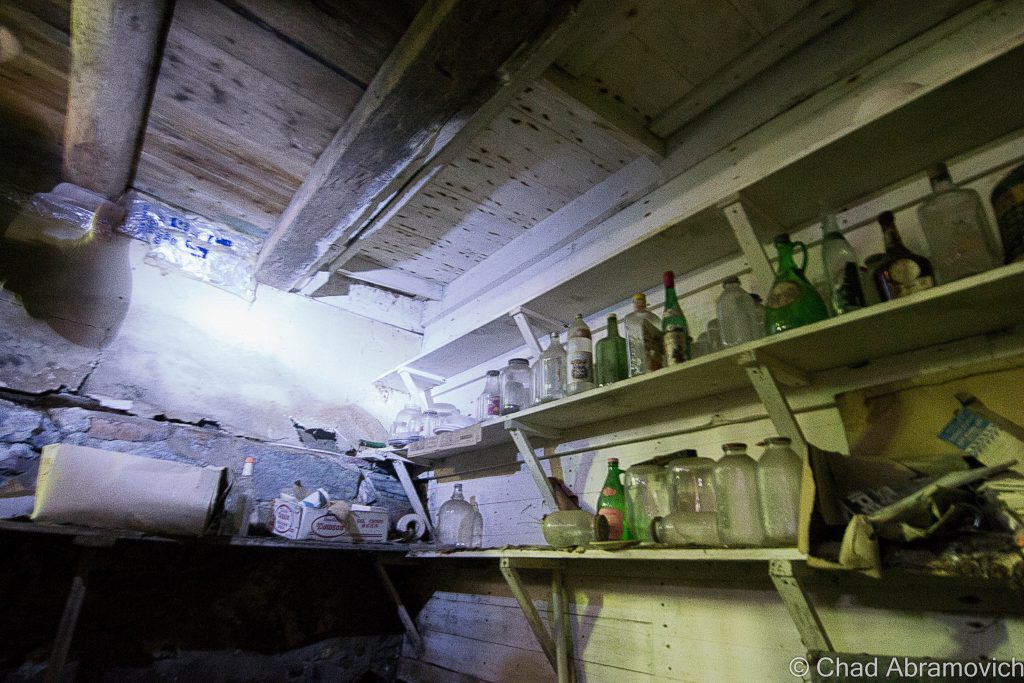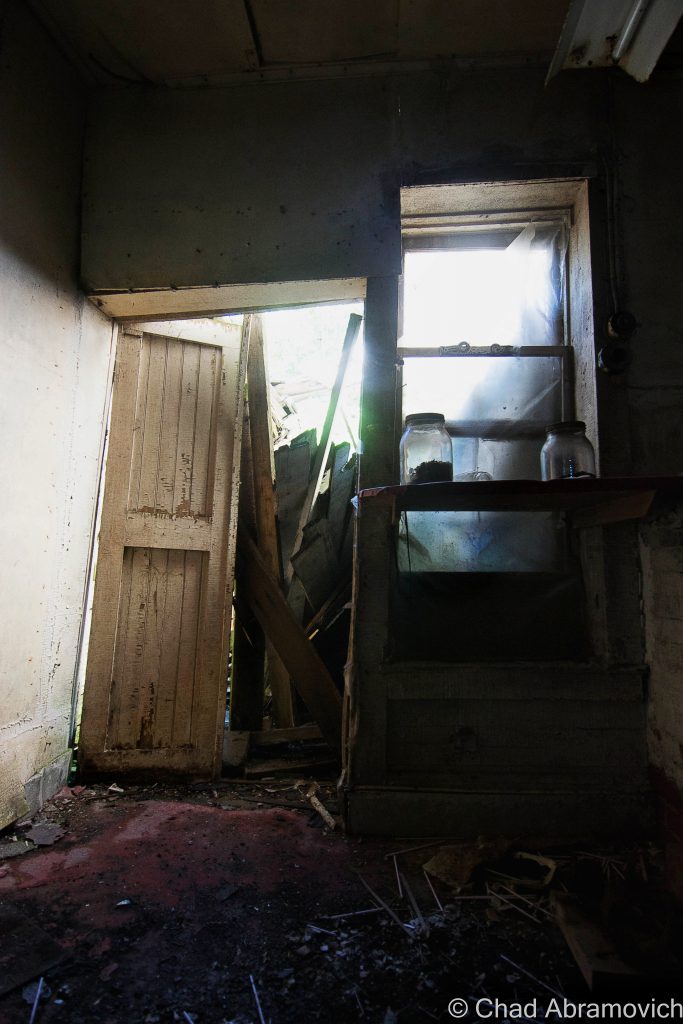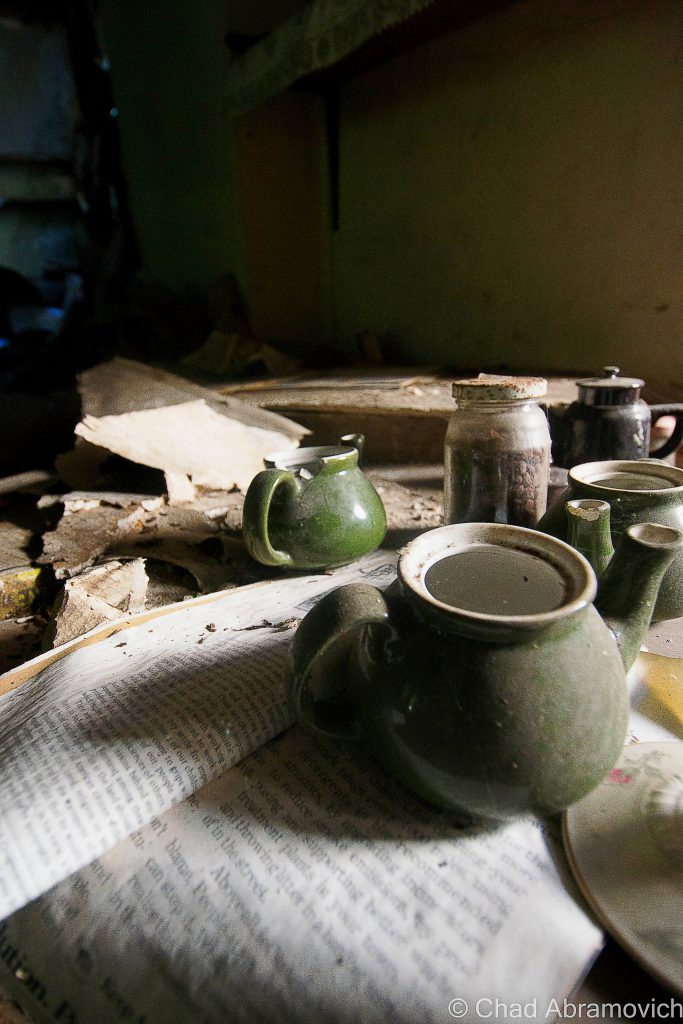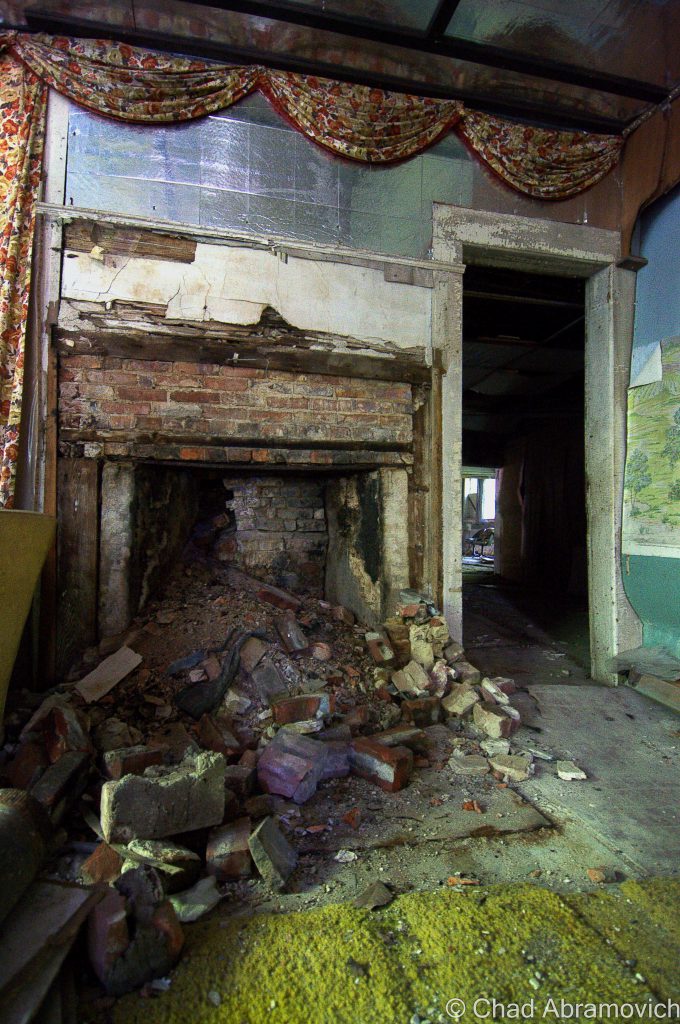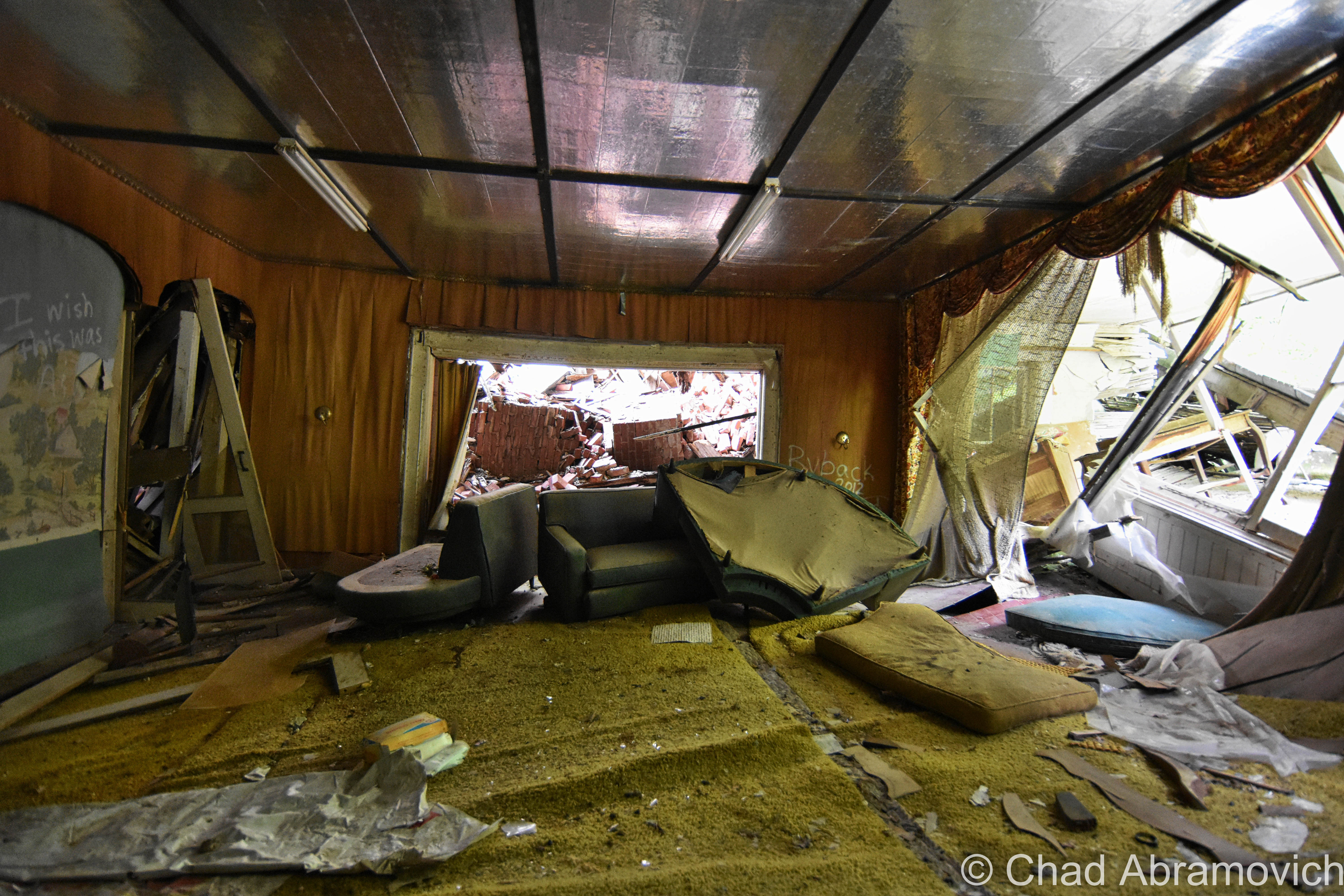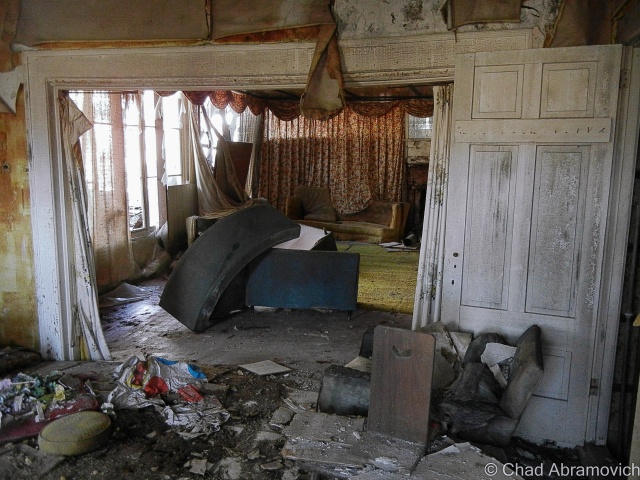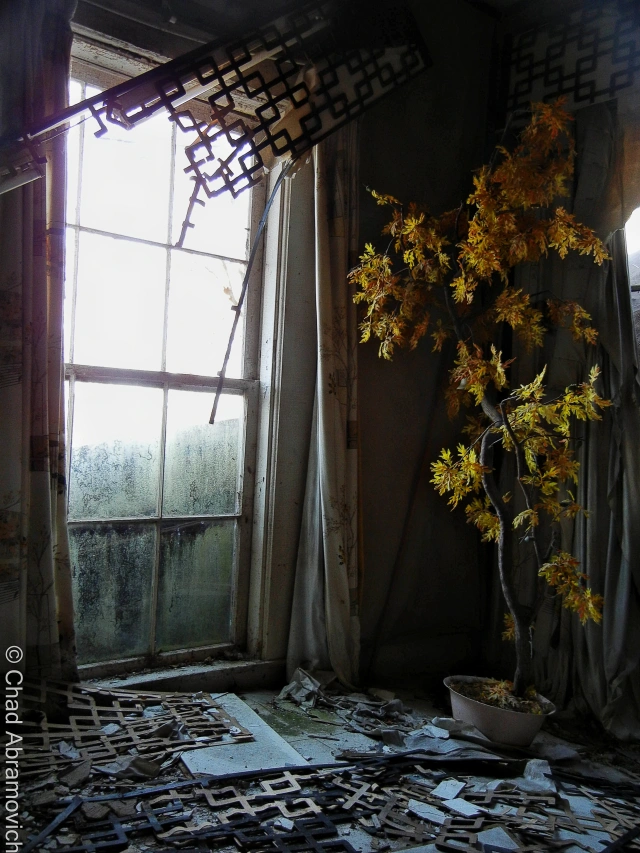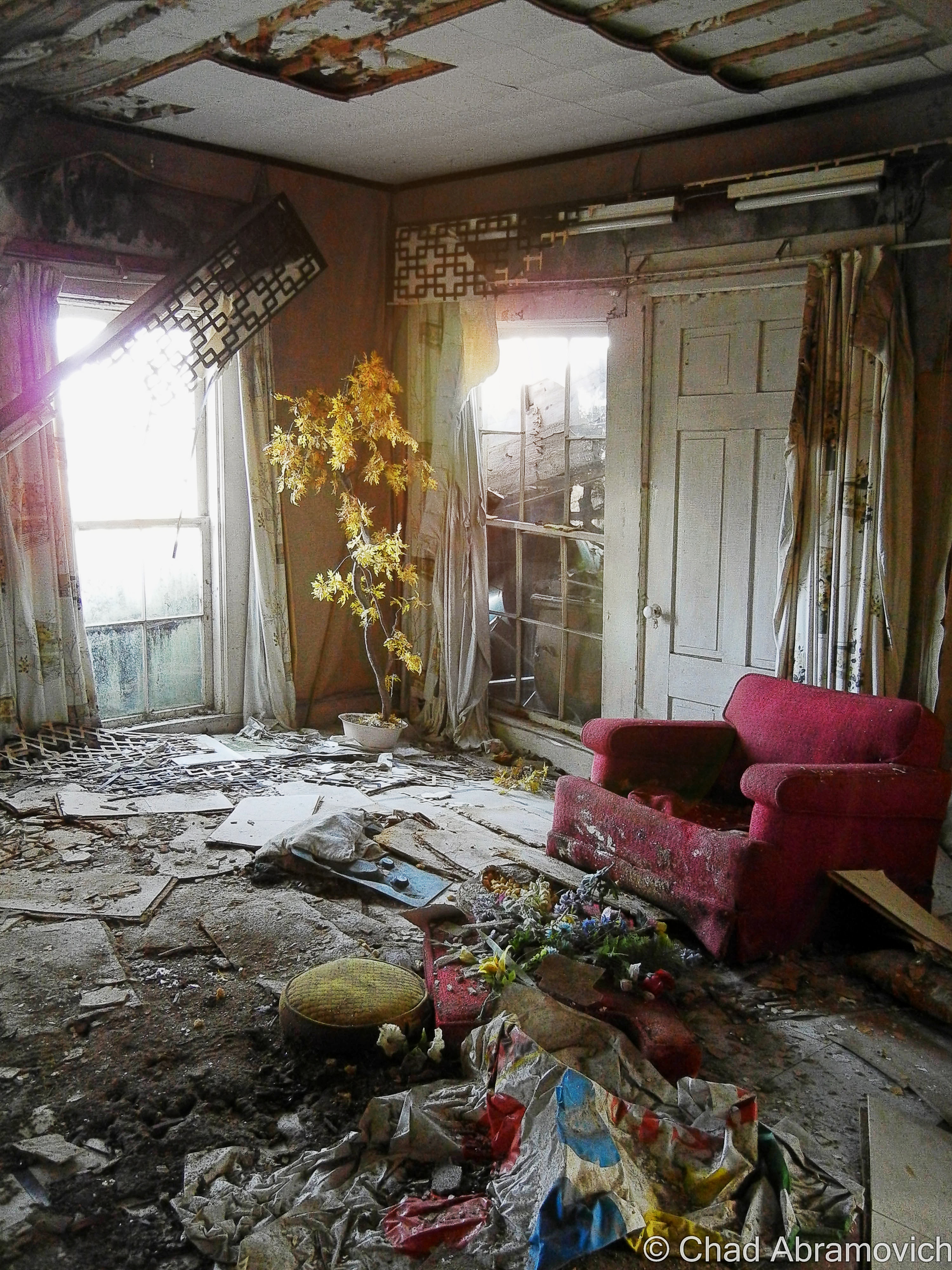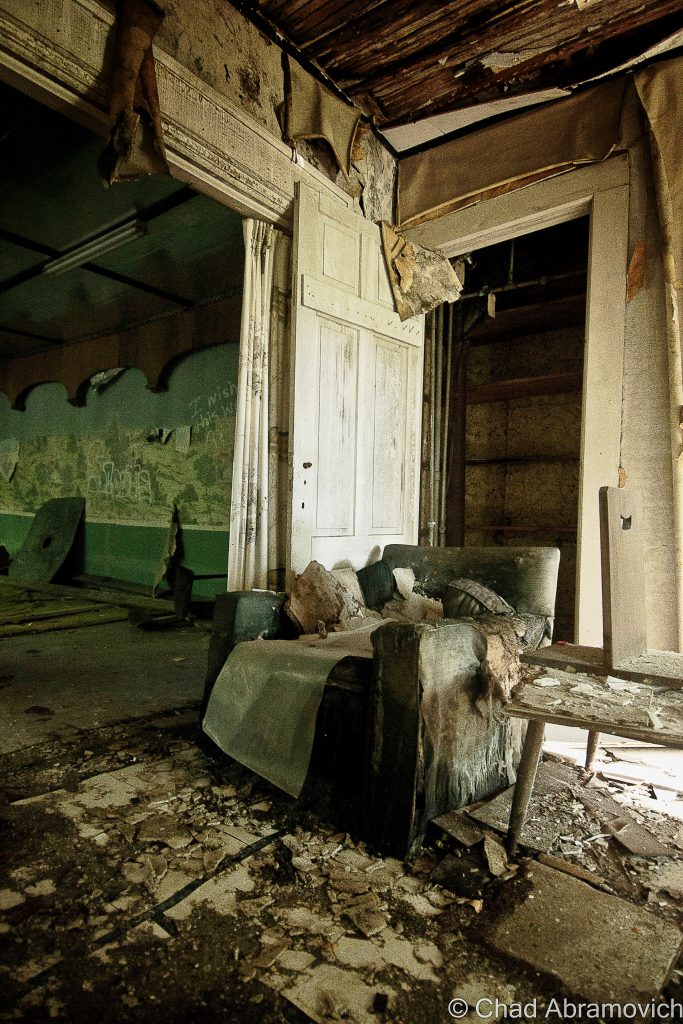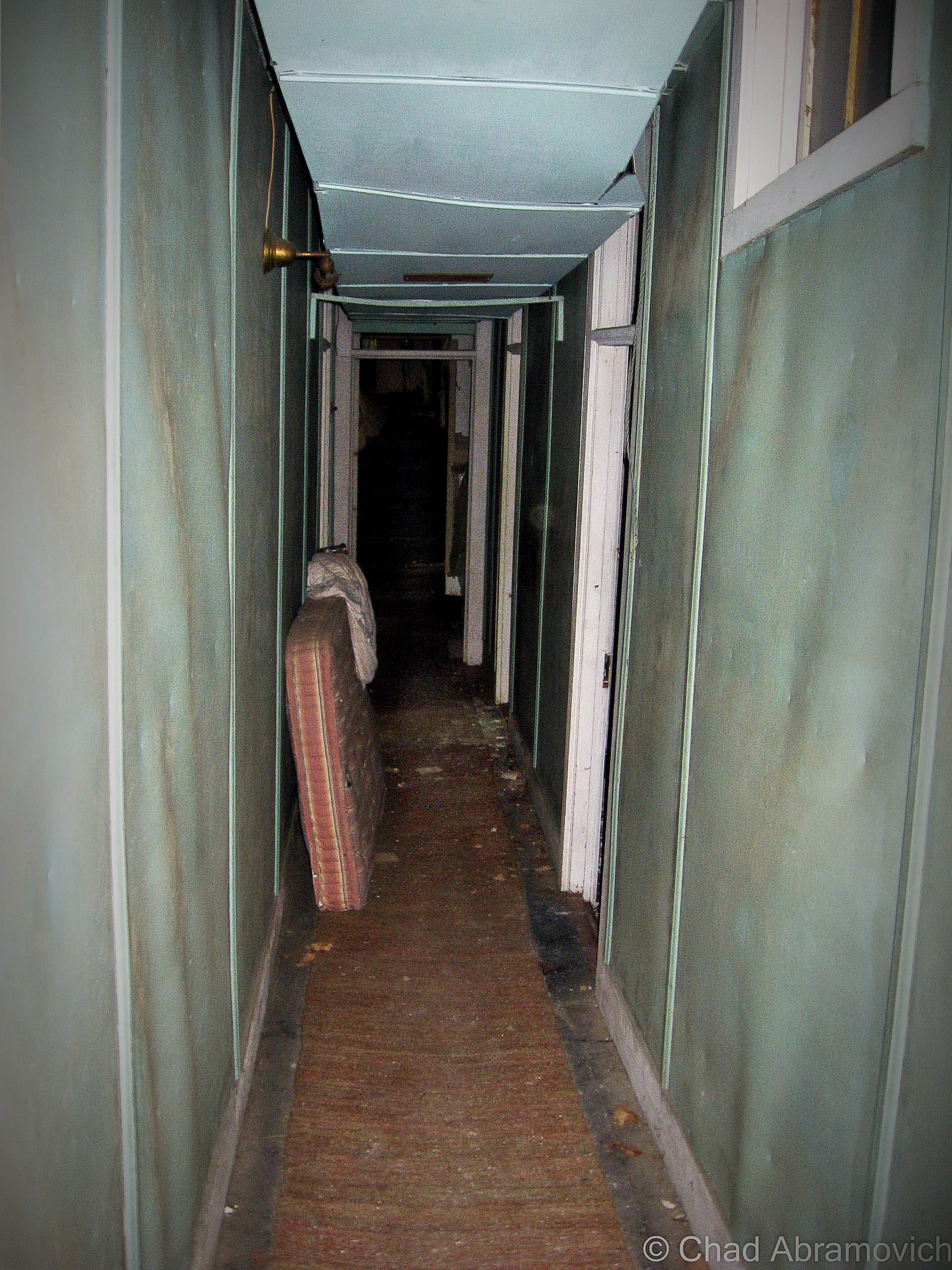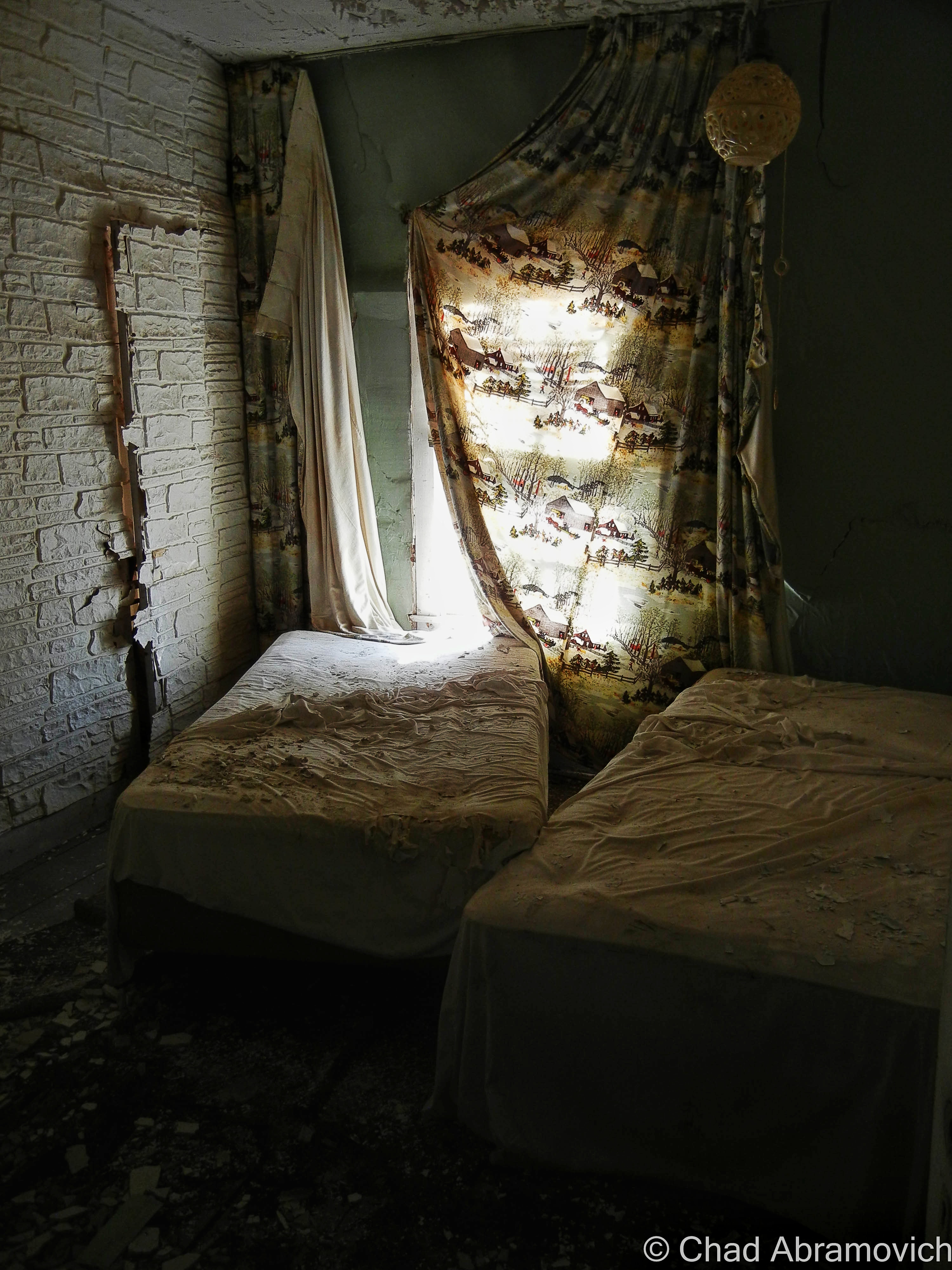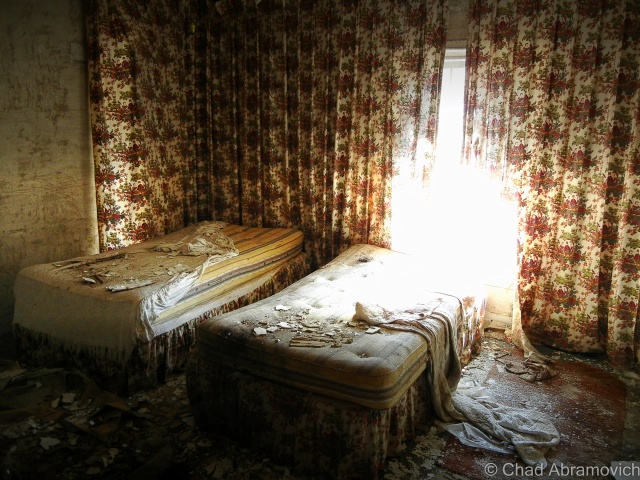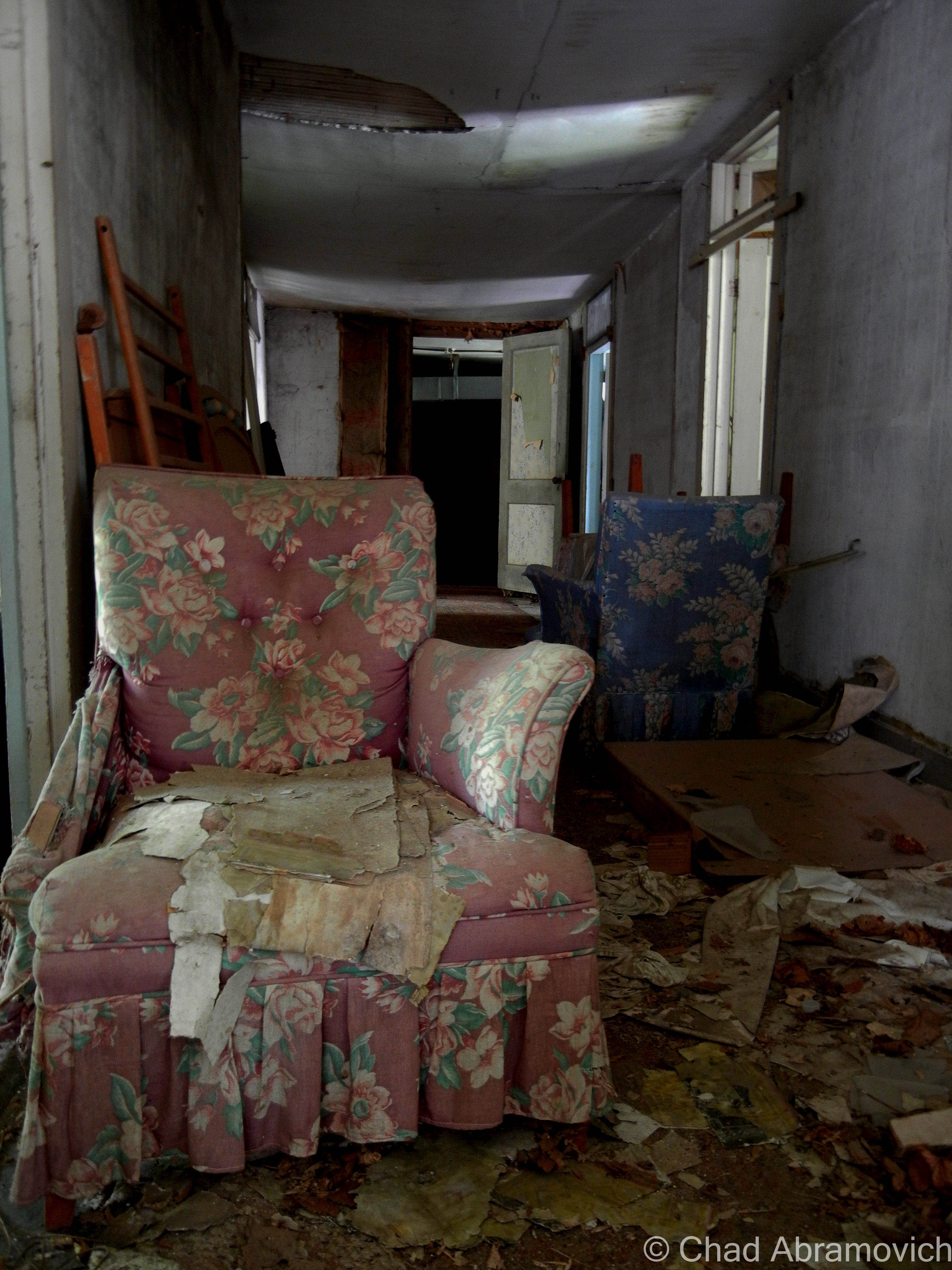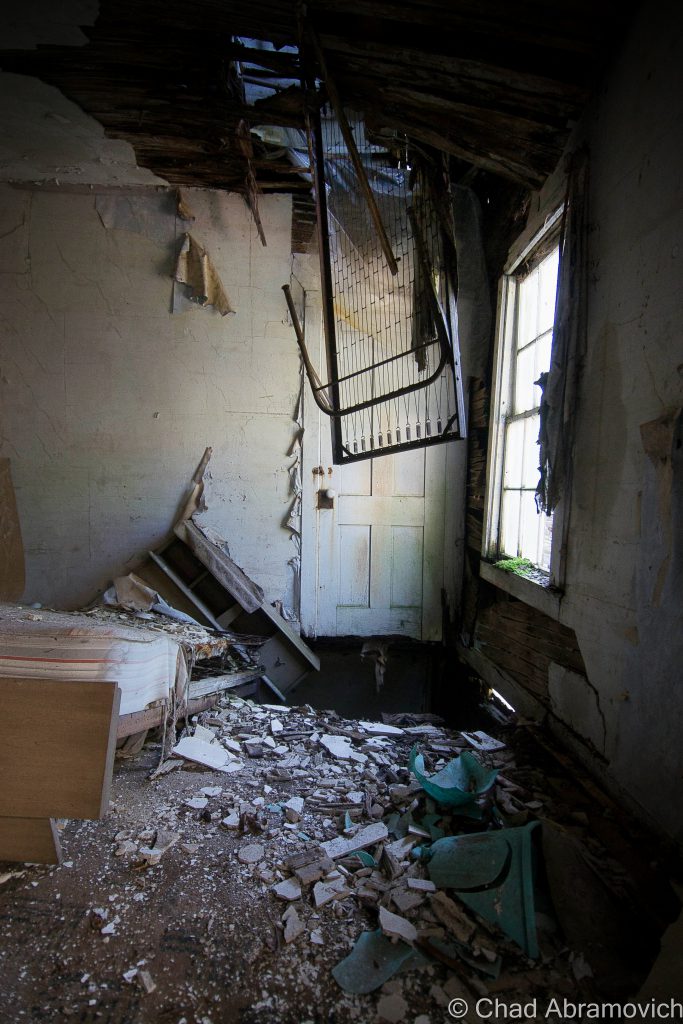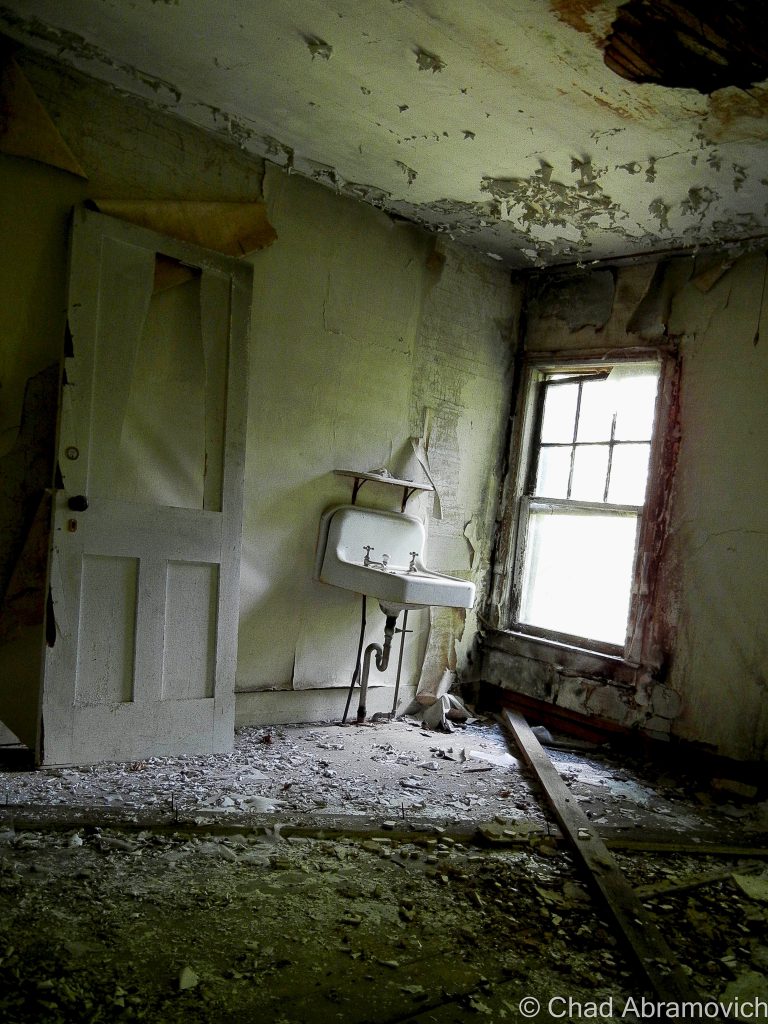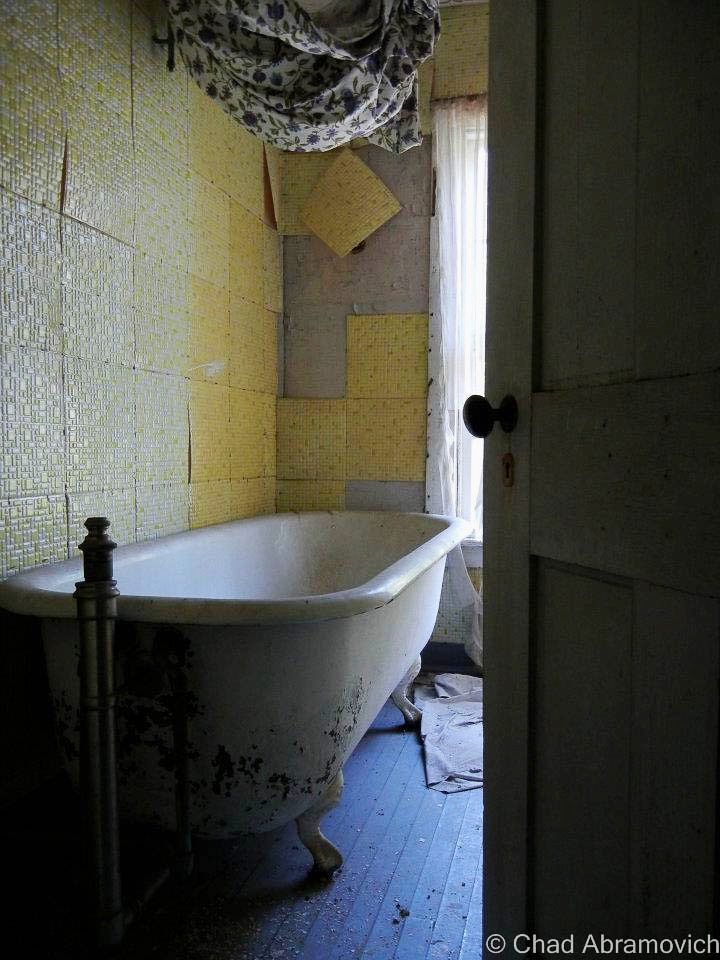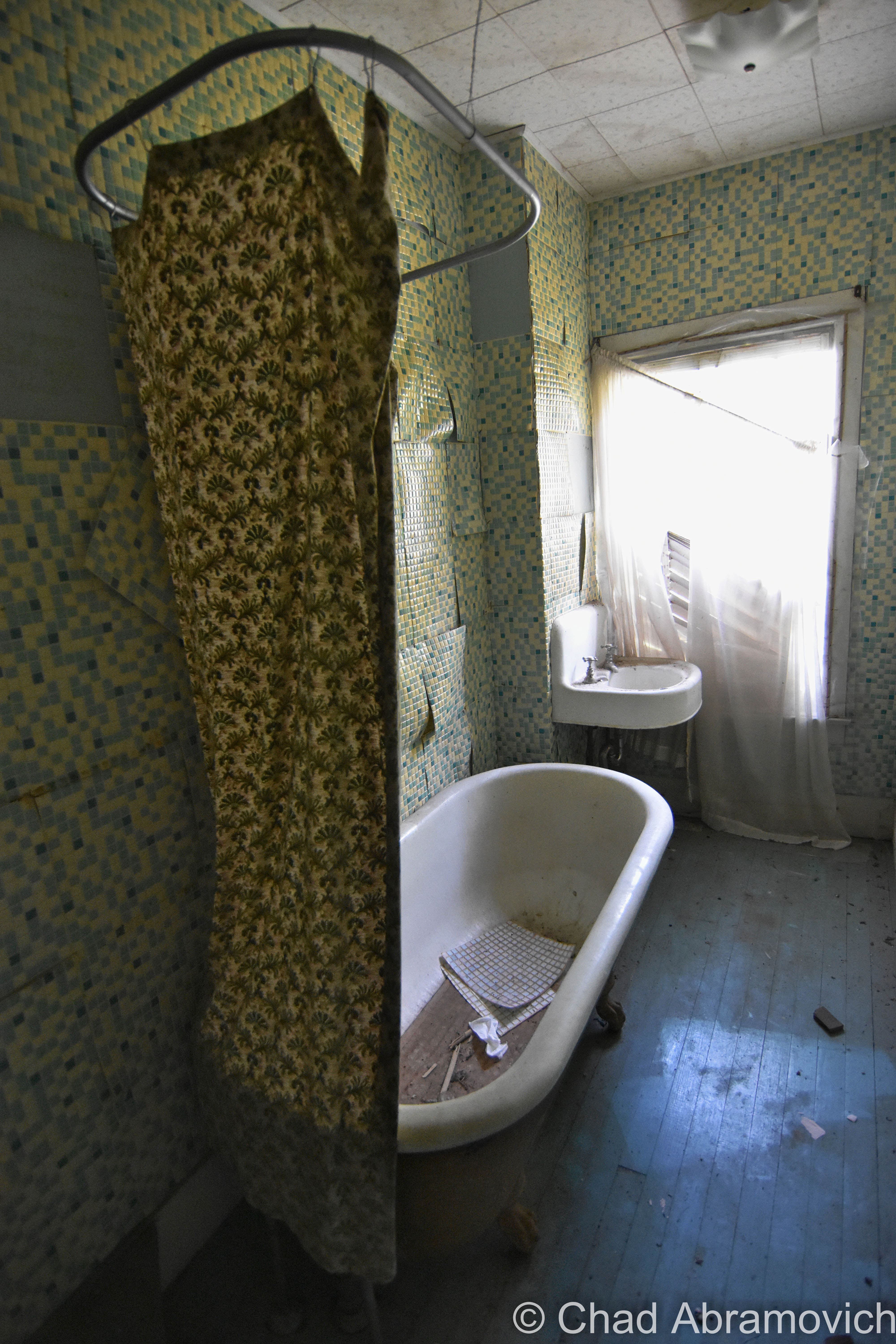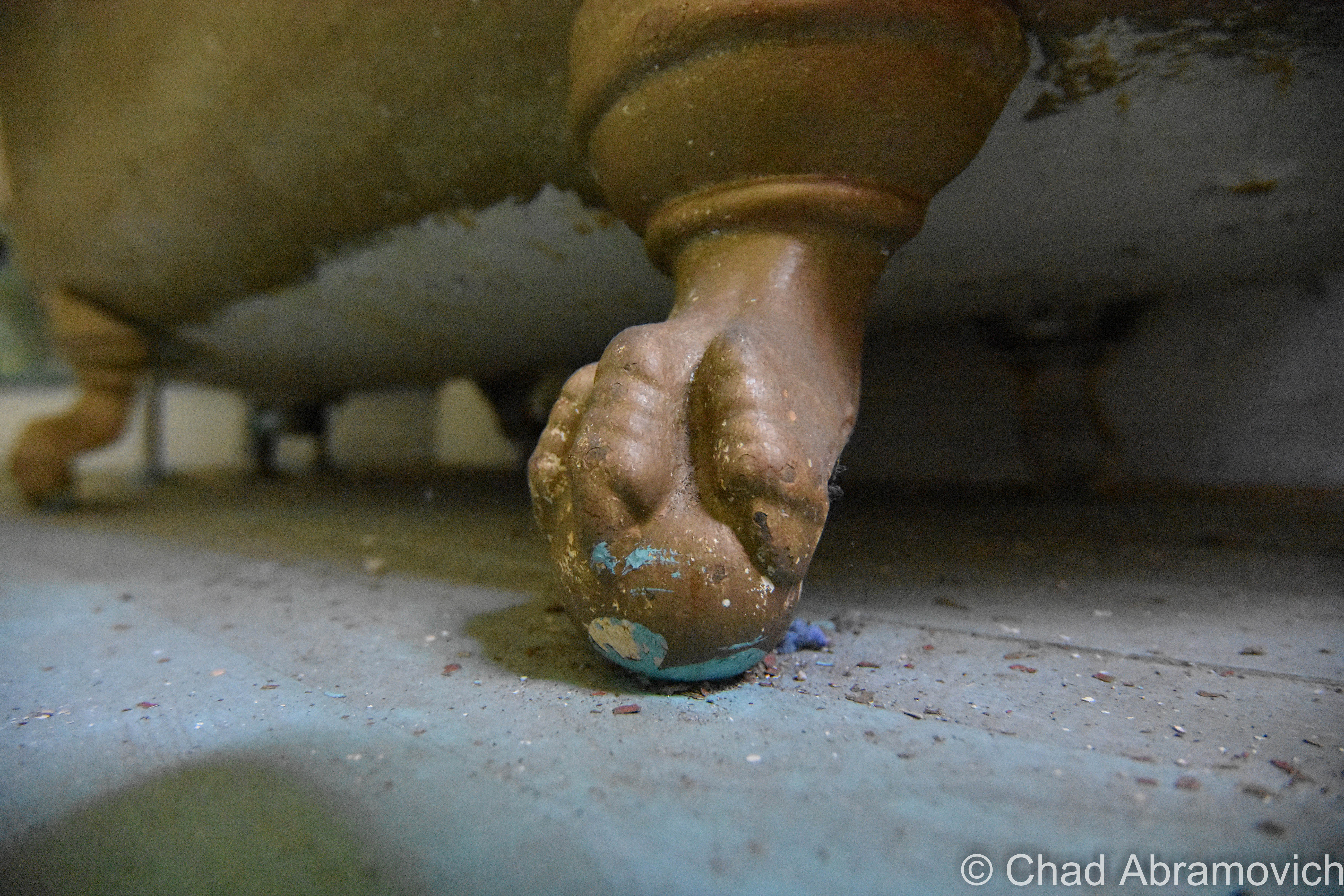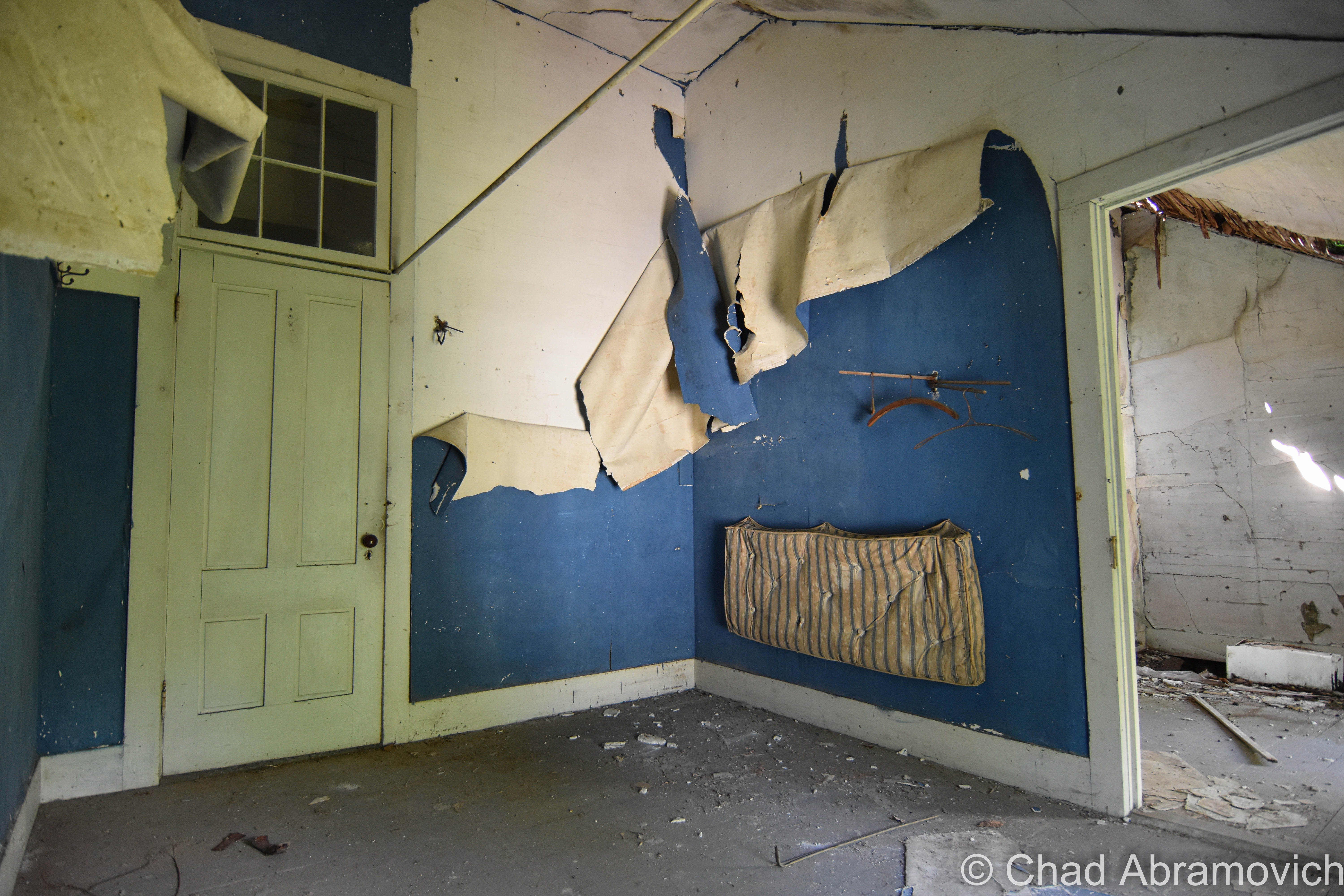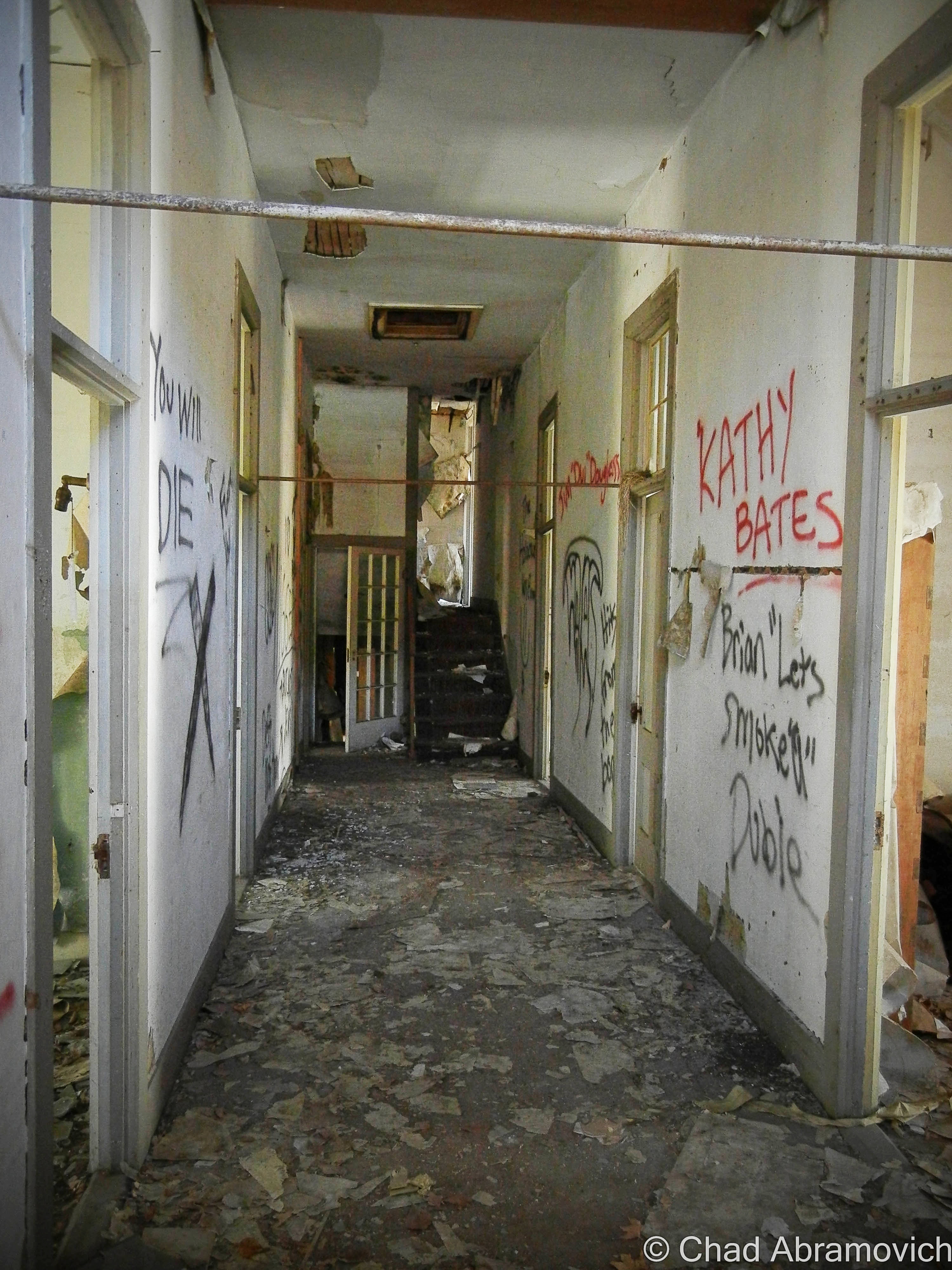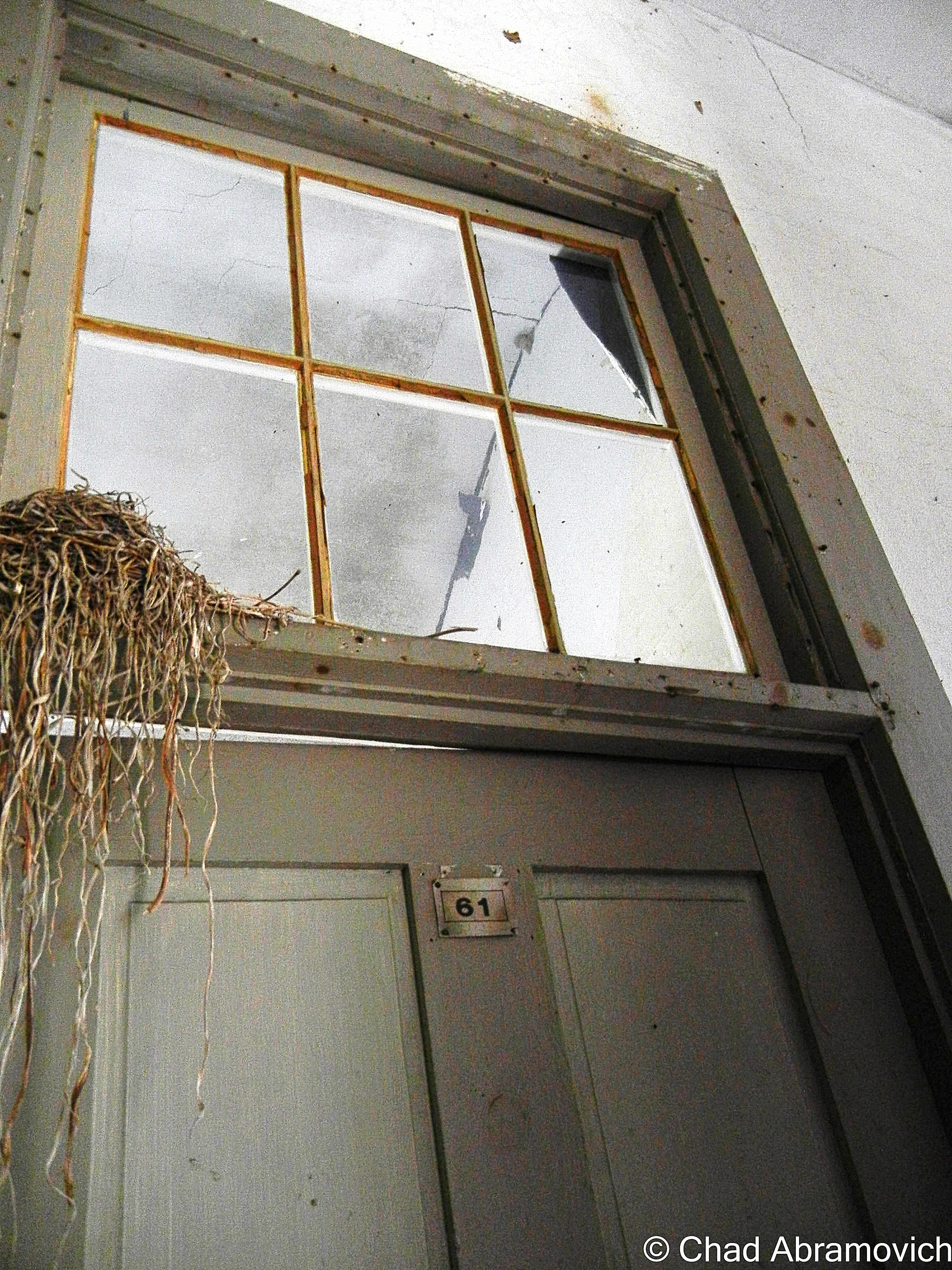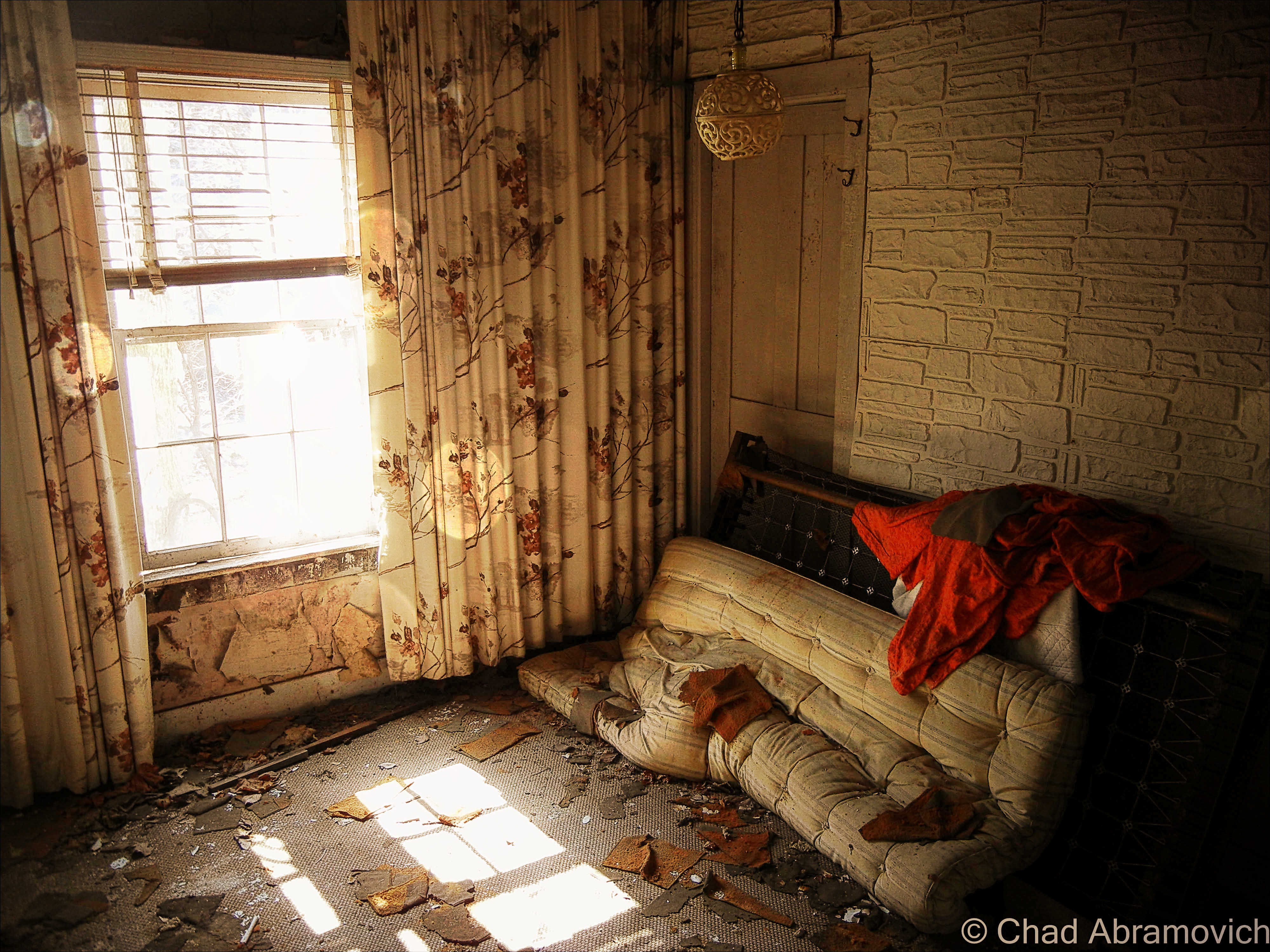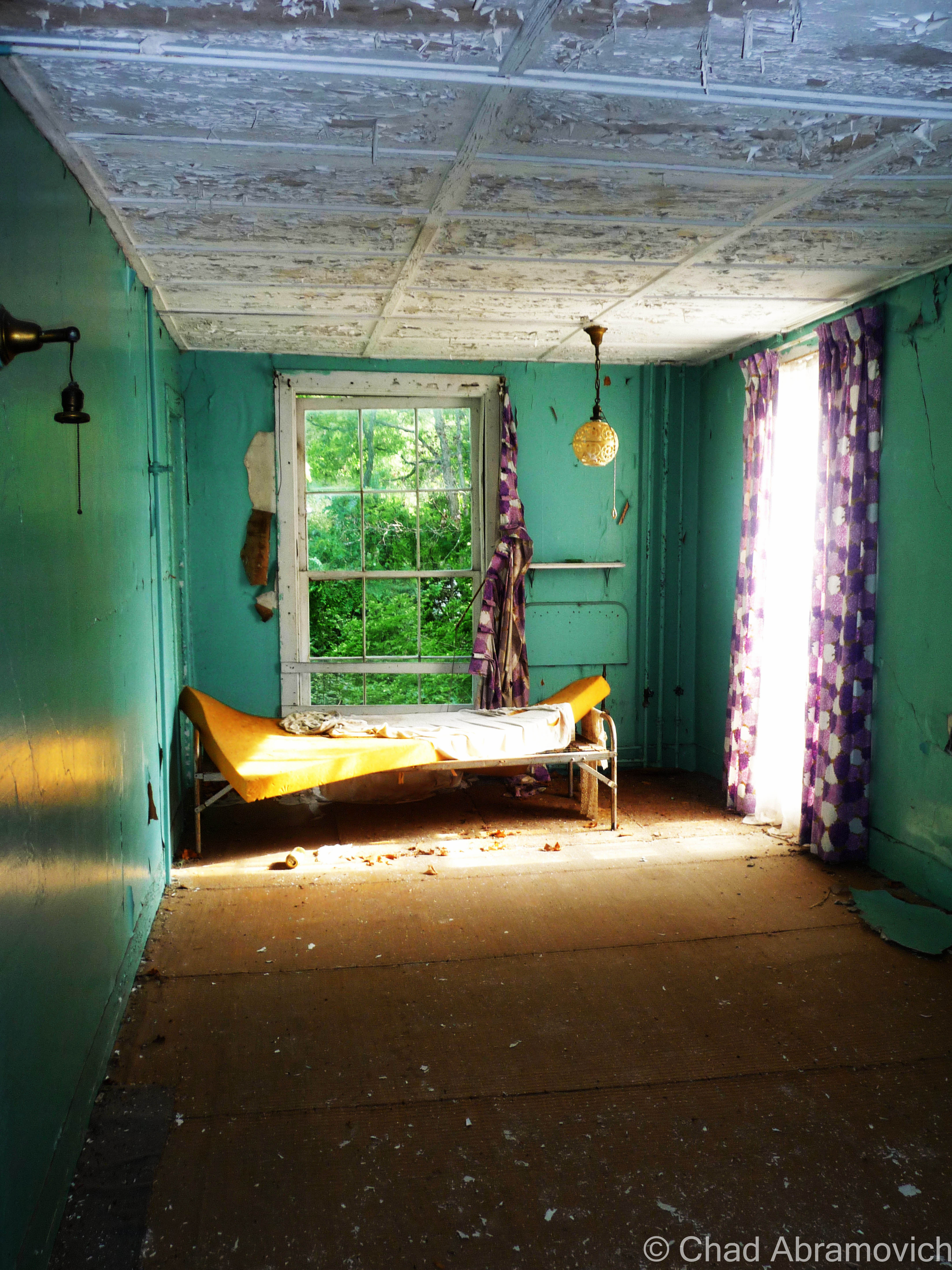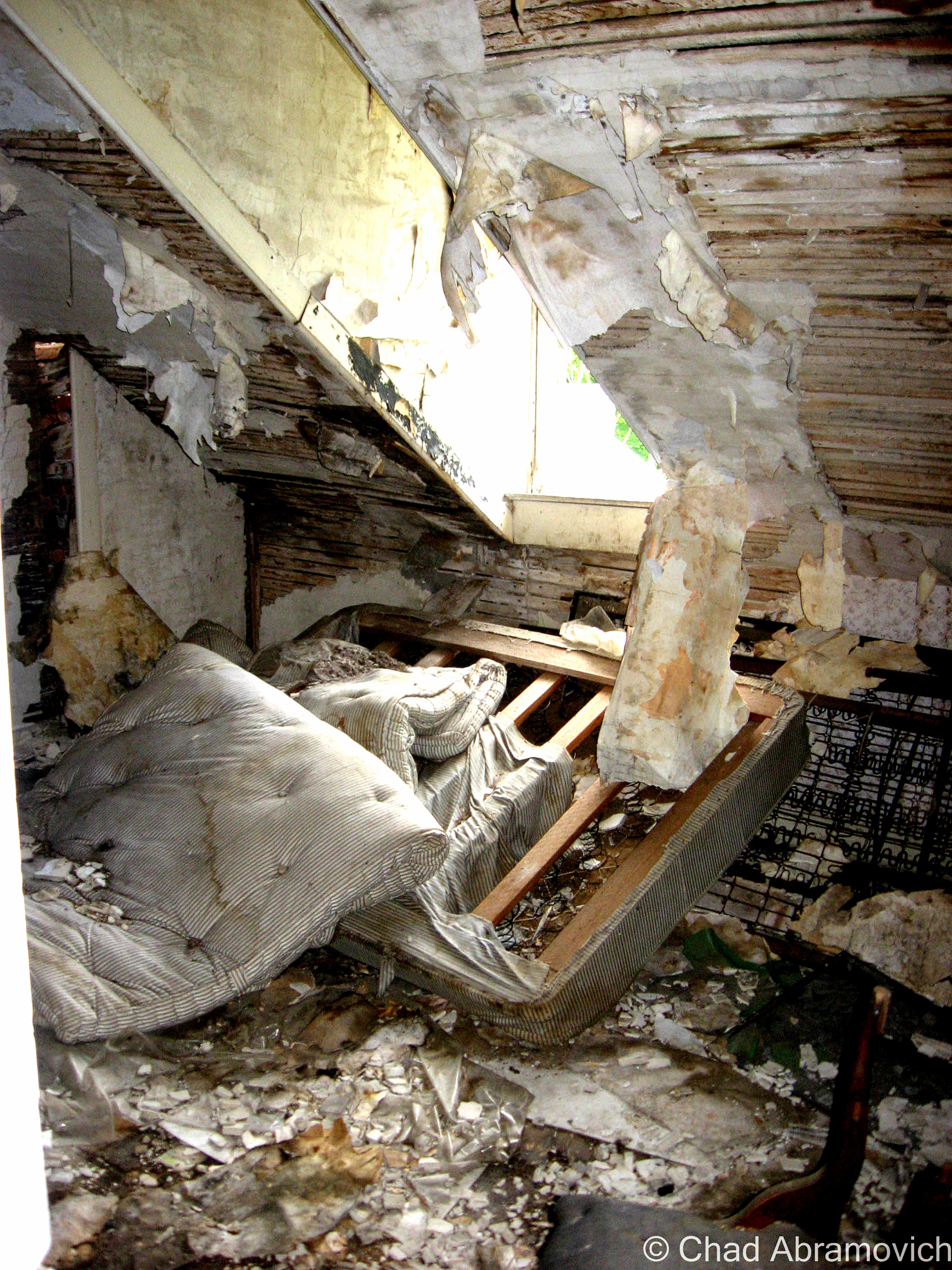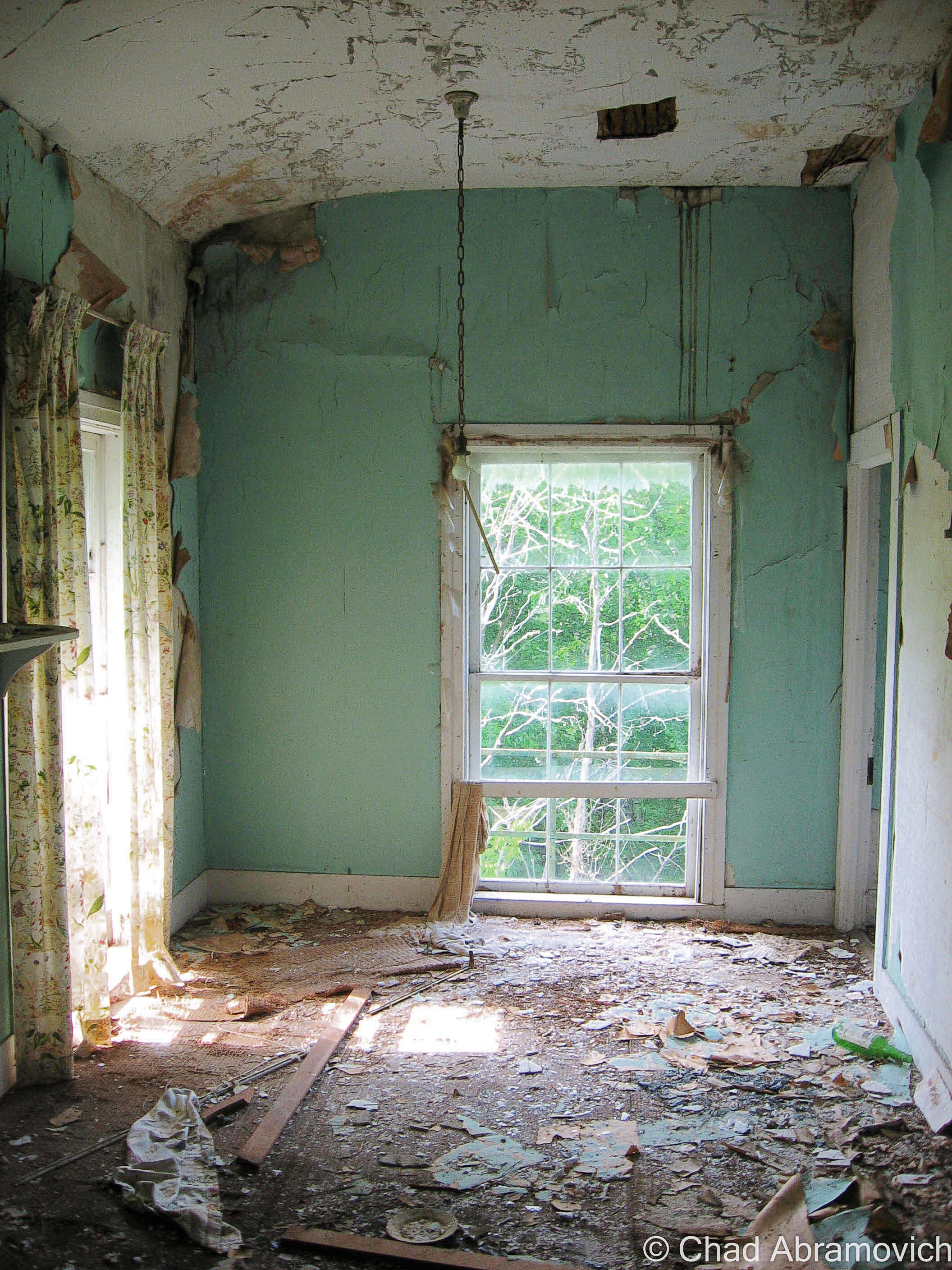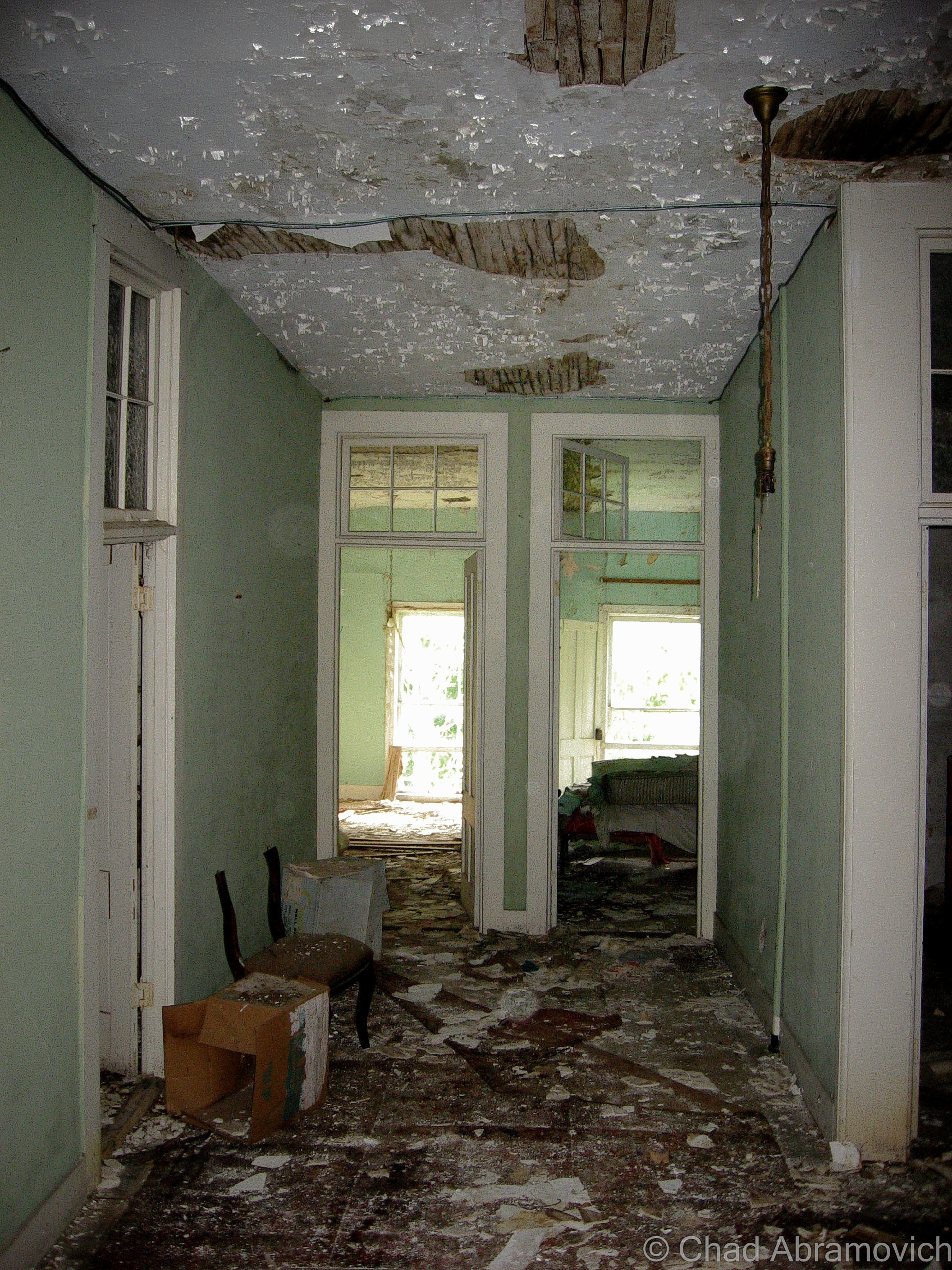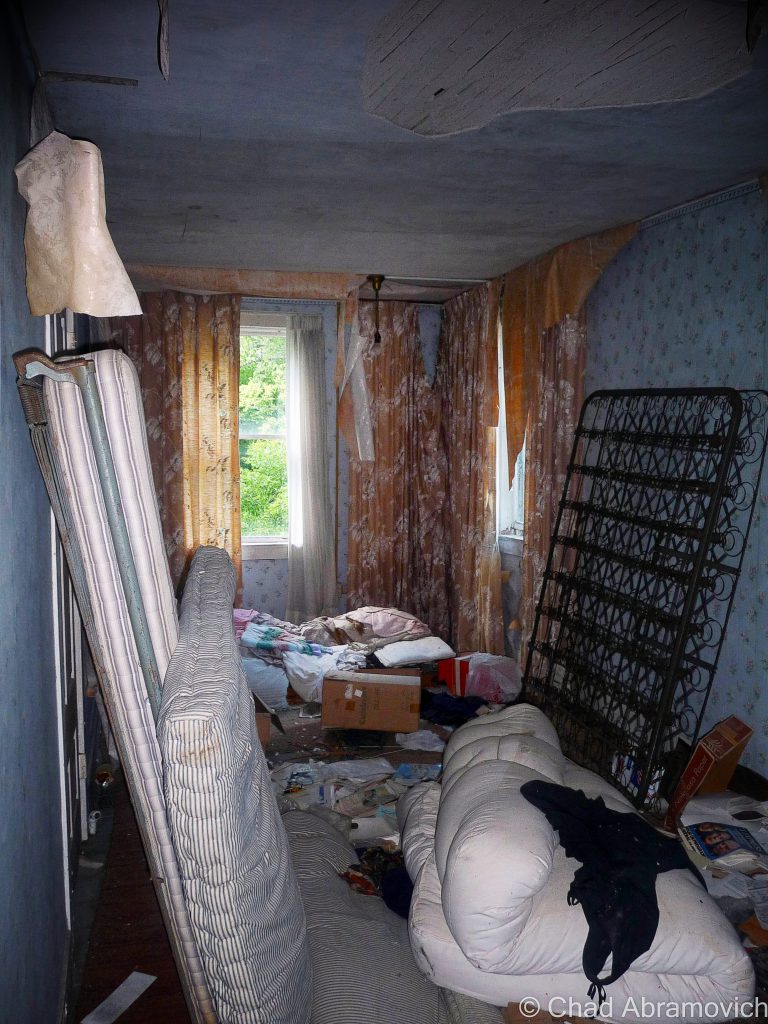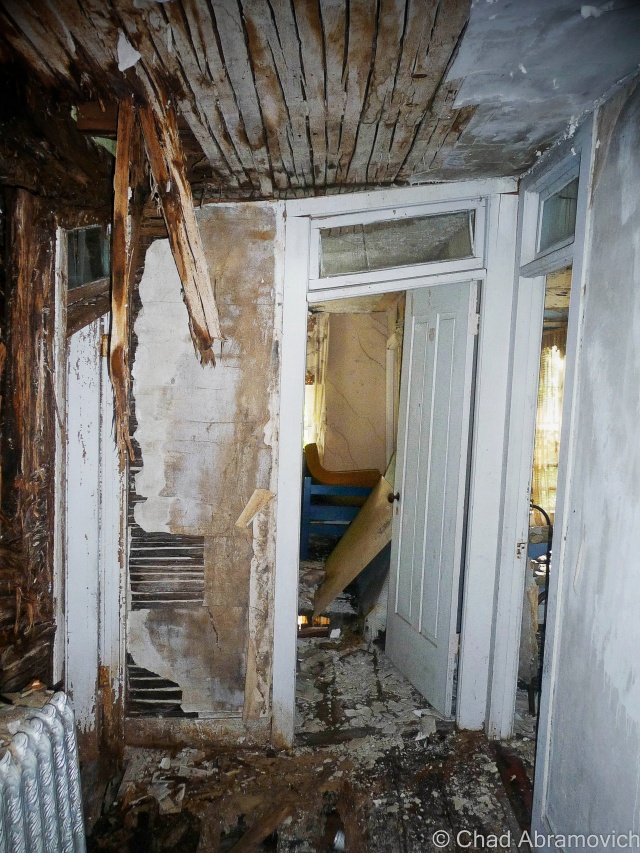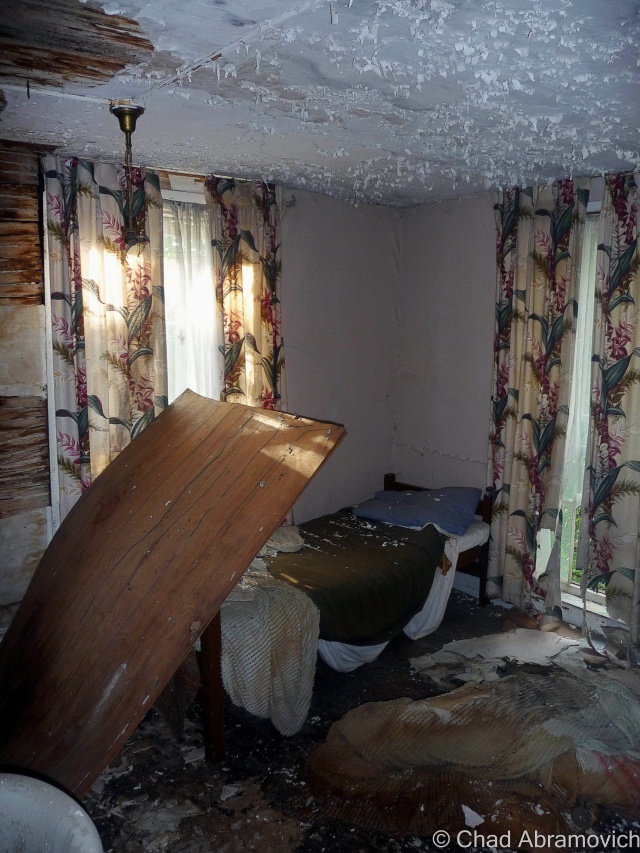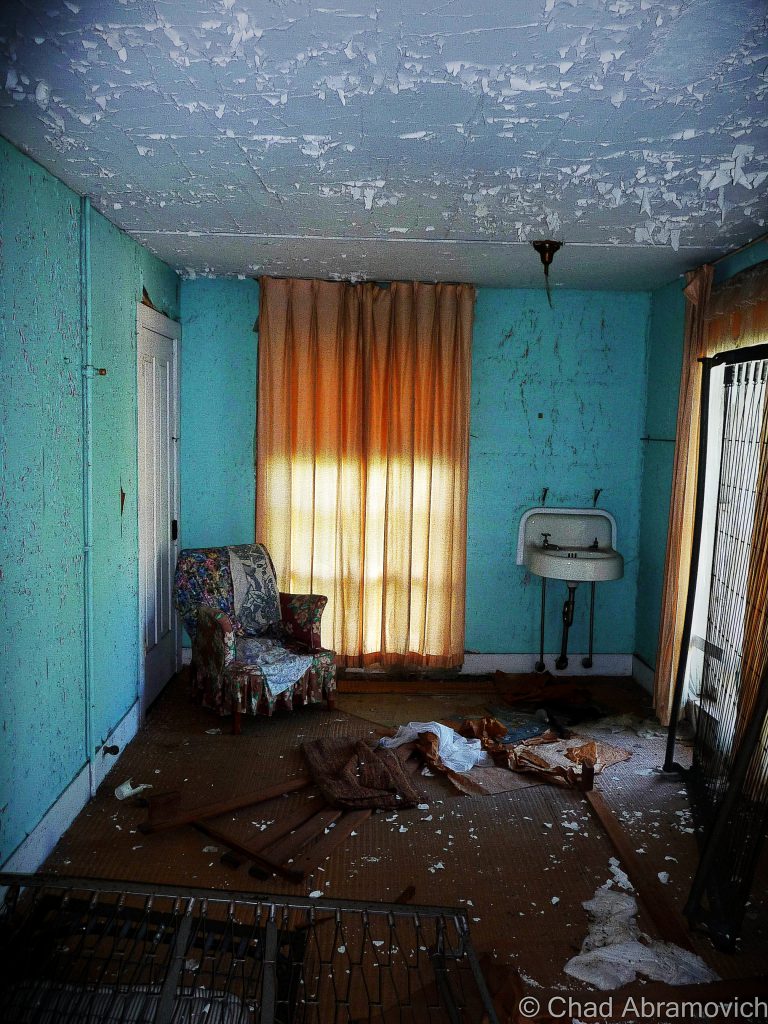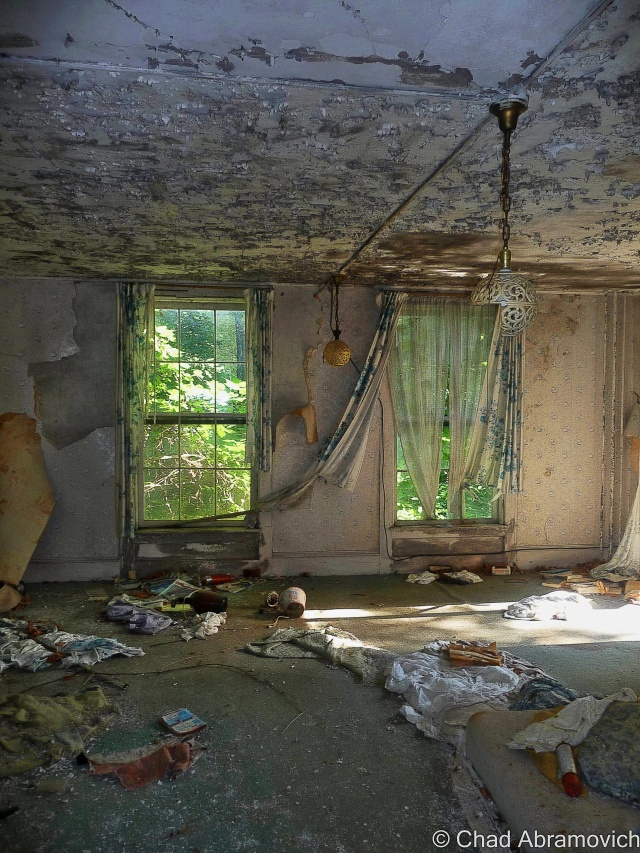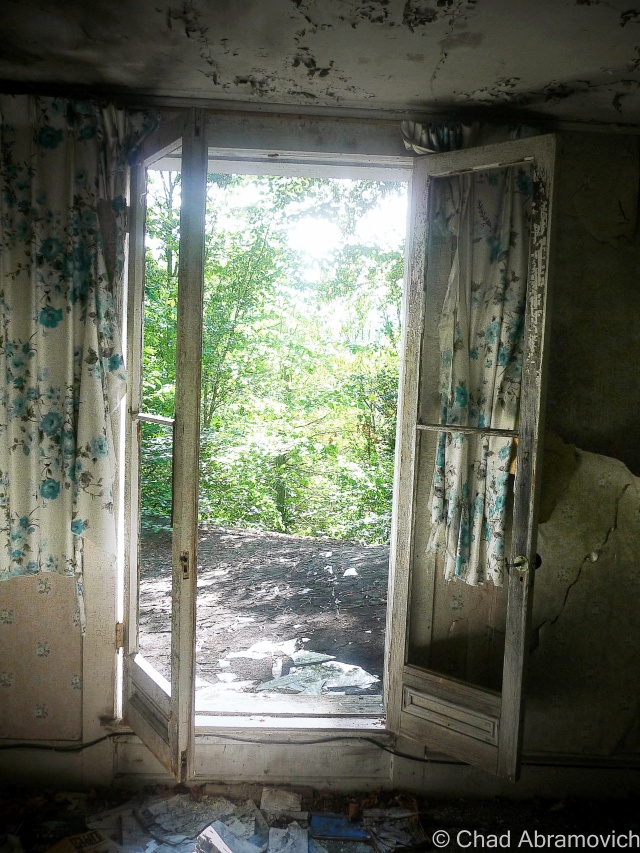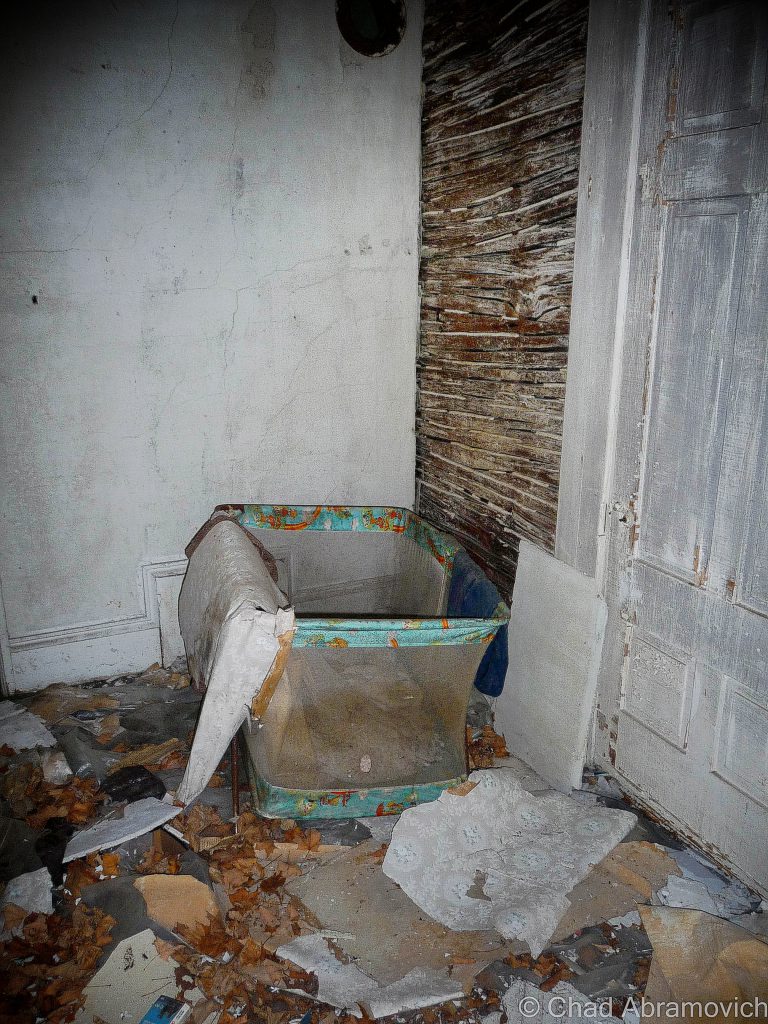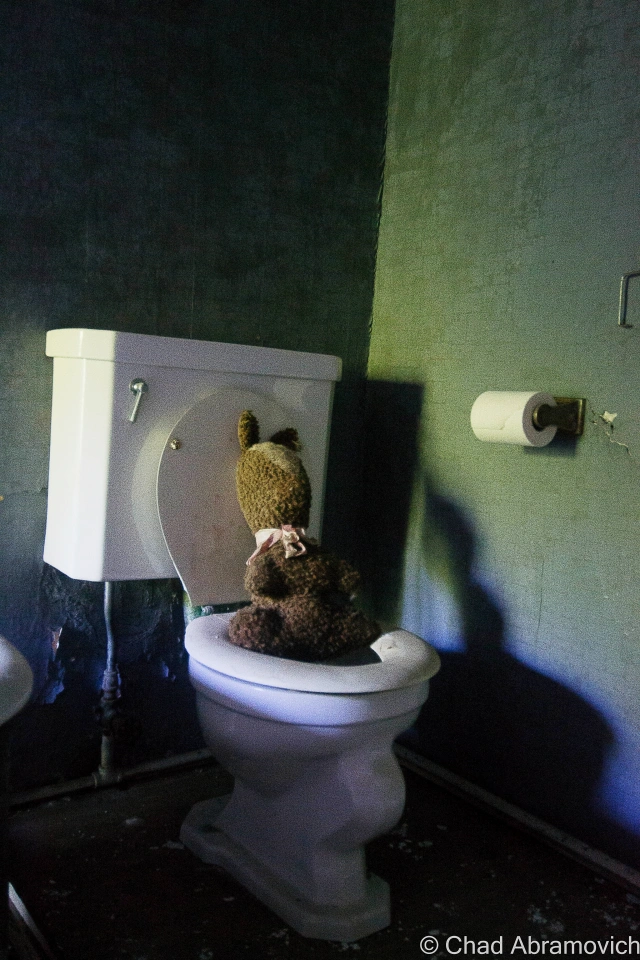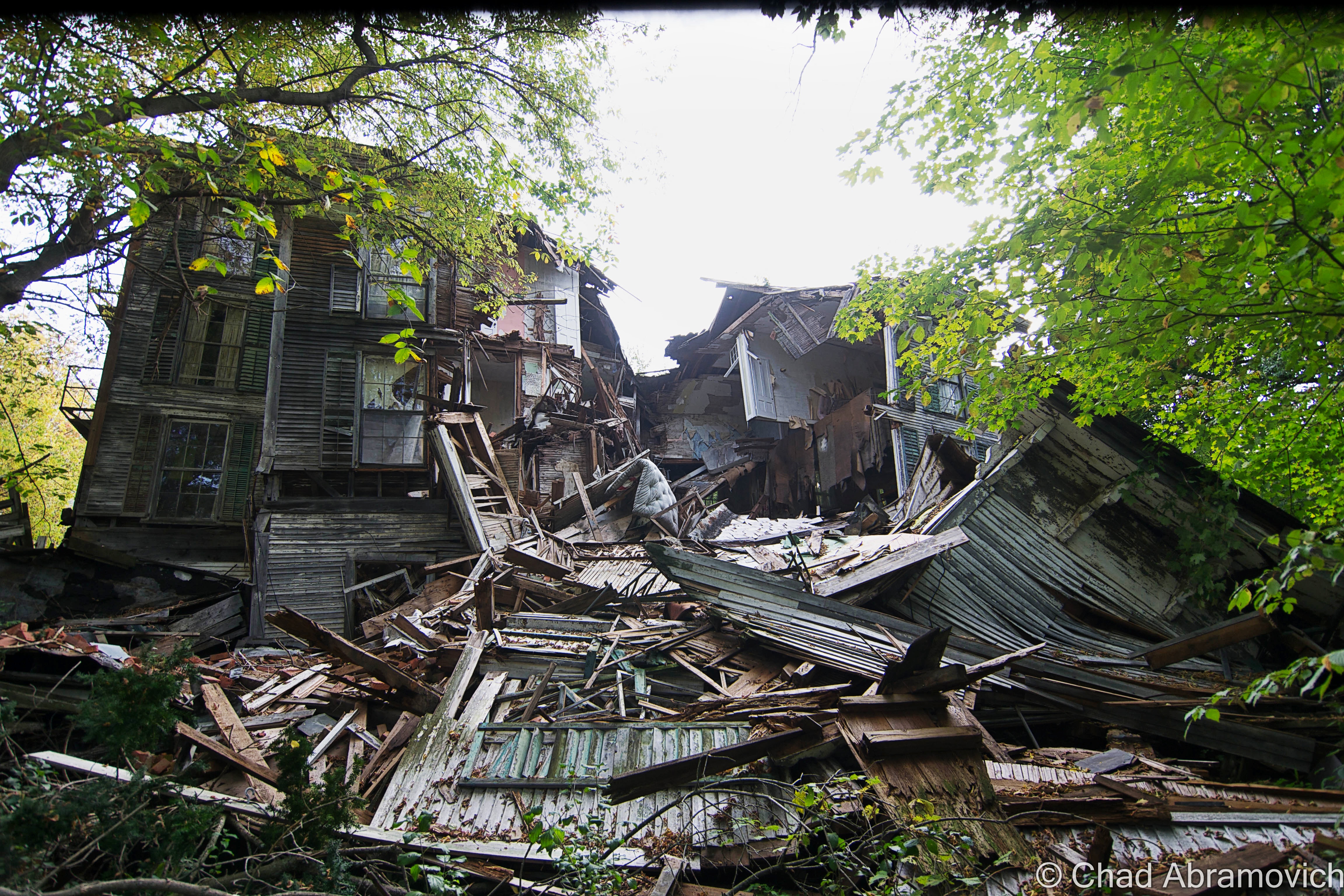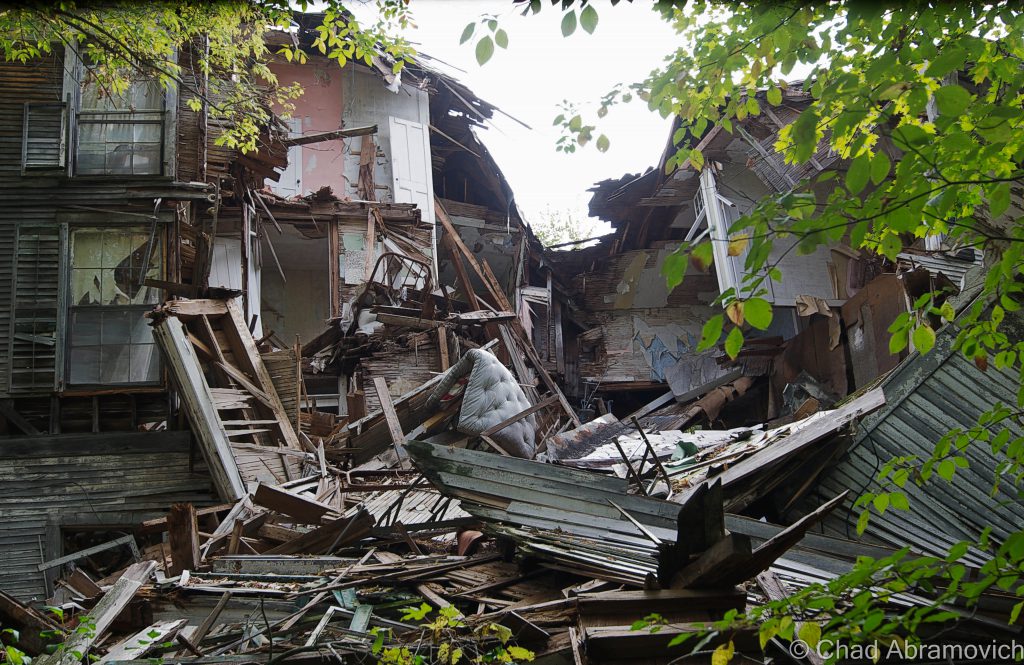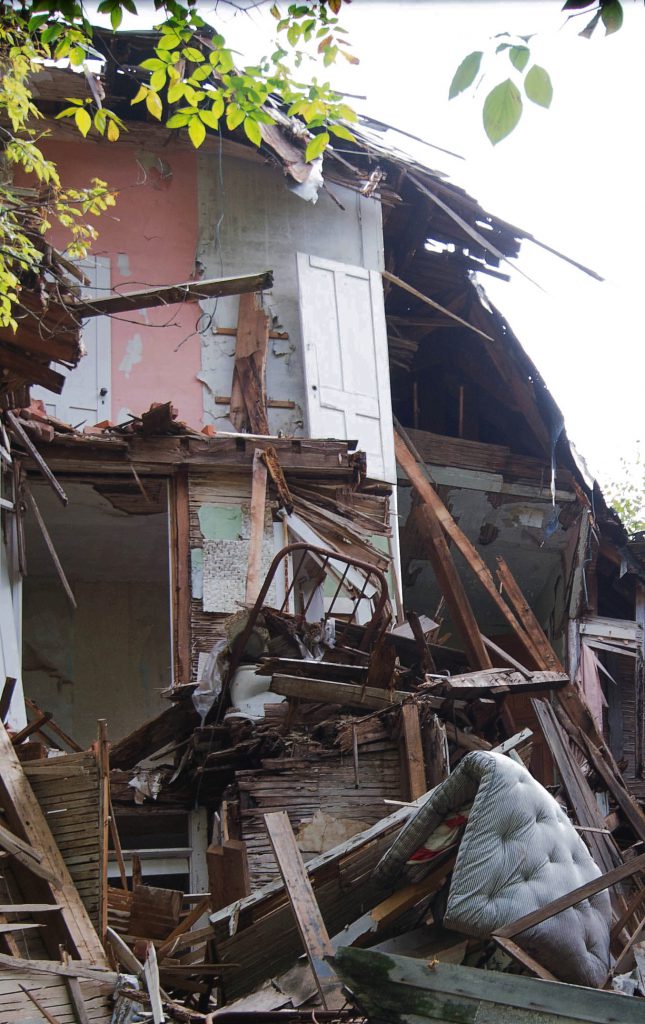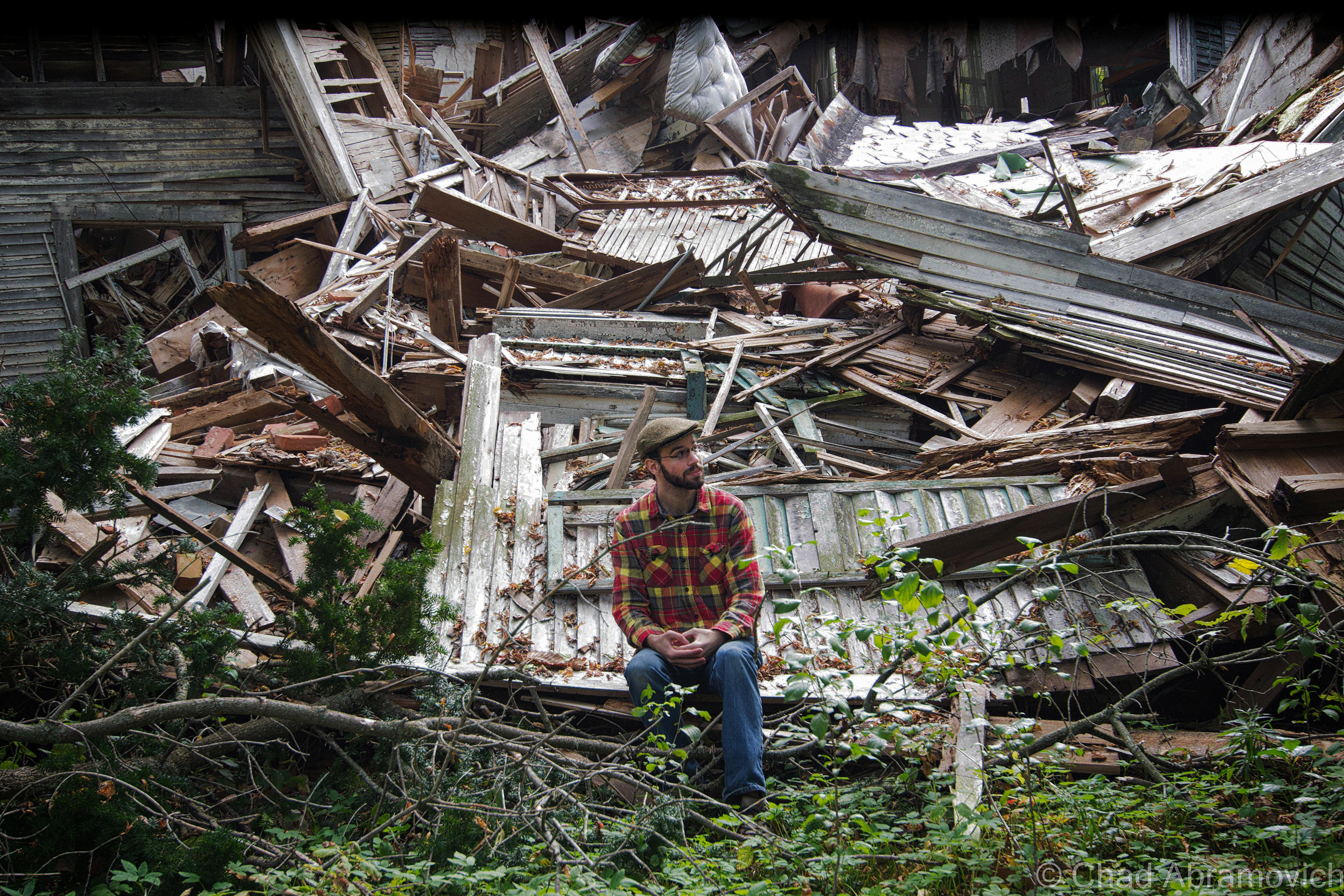Maybe my love of exploration transitioned into an obsession here, at Hyde Manor. The brooding wooden dinosaur of a building holds a lot of memories for me, and planted the seeds of me starting this blog years ago. To be honest, I may never have perused photography or exploring as seriously if it weren’t for my time here.
The manor was opened in 1865 by James Hyde, and after its completion, it was considered to be one of the most esteemed getaways in New England.
And now it all lies in ruins, sitting in the Sudbury woods with the hum of the highway swallowing whatever sad songs the hotel sings. I first saw the building as a wide eyed 12 year old, passing it en route to a destination long forgotten, but Hyde Manor forever burned itself into memory. I knew that day that I wanted to come back and explore it, to discover whatever wondrous secrets lay inside. And several years later, I got my chance.
Peering up at this brooding structure behind the maples that separate sun from shadows offers no insight to what it used to be. Its windows are broken, tattered curtains hang in strips through the vacant panes. The massive front tower, a signature architectural feature of this grand structure, is dangerously lopsided and looks like it may soon tumble down onto the tall grass you stand in. The once grand New England veranda with rows of wooden rocking chairs have long wasted away into weedy piles of debris. There are no signs, no historical markers, no identity.
So, what was this place? And what happened here? Though you can’t tell by looking at it, this is all that remains of Hyde Manor, a once grand antebellum hotel in the Vermont countryside, now a collection of rotting bones that are slowly turning to dust upon the ground it sits on.
But even in decay, Hyde Manor still retains its elegance. You don’t even have to question that this place was once magnificent. But why was it left to waste away? To get a good idea of what happened, you need to know a little about its past. And through extensive research online, I was able to get a basic idea of the picture.
Hyde Manor’s origins began as something much more humble and can be traced back to around 1798, as a small stagecoach stop known as Mills Tavern, back when the busy state route out front was a muddy and arduous stage road. In 1801, Pitt Hyde bought the tavern and 47 surrounding acres.
The tavern was eventually passed down to Pitt Hyde’s son, James. Overtime, James began holding all night Yankee balls at the tavern which turned out to be a huge success and developed a loyal customer base, as well as ensuring landmark status. As time passed, James wanted to do more than run a tavern, and decided to expand. Eventually, he would open Hyde’s Hotel.
His timing was impeccable, as a train station and a new canal in nearby Whitehall, New York soon made the region more accessible to wealthy tourists. Hyde’s property also had a vogue tourism magnet; mountain springs, which at the time were thought to possess healing properties that could cure the sick and the mentally ill. If your business advertised these moot claims – you were almost guaranteed to draw crowds. Hyde took advantage of these situations and began marketing his hotel as a destination, especially for those living in the dirty urban metropolises of the northeast looking for respite and peace of mind in bucolic Vermont.
When a fire destroyed the original building in 1862, the Hyde’s decided to rebuild. But this time, James was riding on the silver tides of great expectations and envisioned something grander – a showpiece! Something to secure the Hyde family legacy. By 1865, the stately Italianate building that still stands today was erected with no expenses spared. Hyde’s bravado paid off. The resort’s popularity only continued to grow in the antebellum years.
By the turn of the century, the hotel was passed down to James’ son Arunah, or “A.W.,” Hyde, and he began to expand the property once more. Now, the name was officially changed to Hyde Manor.
I was fortunate enough to be given a scanned copy of an original 1901 promotional booklet on Hyde Manor. It’s old photos speaking through the antebellum haze, and gave me a startling impression of what it used to be like.
The capacity was advertised as 250 guests, and the buildings were state of the art in terms of luxury of the day. They were gas heated, with wide hallways containing public and private parlors. Many guest rooms were equipped with private baths, electric buzzers for communication purposes, and fire escapes and round the clock watchman, just in case. People looking for more intimate accommodations could stay in one of the cottages or farmhouses around the property, a few which are still standing today.
The property and its many buildings were connected by a series of broad piazzas, lined with the classic New England postcarded hotel image of wooden rocking chairs arranged in symmetrically neat rows, offering wide views of sloping lawns which were once shaded by Maples and Elms, looked out over the distant silhouettes of the Adirondacks. At night, the grand piazzas were the perfect place to take in the soft summer air. There was a private boathouse on nearby Lake Hortonia, with complimentary stagecoach service, as well as a private lake sitting at the top of the hill behind the manor, Lake Hinkum, which was stocked with trout for the fisherman.
The mountain springs which flowed on the property contained iron and sulfur, and were bottled for the guests’ enjoyment. There was even a spring house connected to the property by a wide plank deck, where guests could obtain it’s bottled water, free of charge.
The brochure boasted the superlative “every attraction has been given to the amusement of life of Hyde Manor”, and from what I was able to research, they weren’t overselling themselves. Other attractions include a casino, equipped with a stage for live performances. There was a billiards room where men could retire with a cigar and a drink at the end of the day. There was also a dark room for photographers, and 2 bowling alleys equipped with Narraganset Standard alleys – now completely buried underneath unused lumber and storage. A music hall could apparently seat 300 people. The hotel had mail service and a telegraph office, a 200-acre golf course across the road, a ski hill in the winter (at the golf course) tennis courts, baseball diamonds, and shuffleboard courts.
Hyde Manor became such a well-known destination that old maps began printing the name Hyde Manor on them, as if it were the town itself, and sometimes, the town of Sudbury wouldn’t even be included. Even until a few years ago, I recall atlases including Hyde Manor on the map.
A brief conversation with the owner on the front lawn uncovered the enigma of Hyde Manor’s post-mortem. When the World War 2 era rolled in, automobile and airplane travel began increasing rapidly, bringing independence and broadening traveling options. The Hyde’s assumed this would be great for business, but ironically, that turned out to be exactly what killed the hotel. Now that people could come and go more freely, it made long stays in one place unnecessary. Soon, a new icon of Americana made its début, chain hotels. Hotels like Holiday Inns and Howard Johnsons, which began appearing in the 1950s, became instantly popular, and travelers were all about modern conveniences. Hyde Manor was now seen as out of date.
The Hyde’s sold the property in 1962, and in the last years of its former life, the manor operated as a resort called “The Top of The Seasons”. Unfortunately, the hotel suffered a slow and painful death until 1970 when it closed its doors for good. According to a few who were kind enough to share their memories, around the time of its closing, they recalled the hotel being a little dingy and dirty.
The family couldn’t afford to fix it up, and can’t afford to tear it down. Over time, maintenance became a bill they couldn’t afford, and the state of Vermont barred any attempts at resurrecting the property due to defeating changes in zoning and building code regulations. Hyde Manor still has lead paint and asbestos and now, has deteriorated to such an extent that it is impossible to save.
Years of abandonment and neglect have really worn out the old hotel. Most of the smaller buildings that surrounded the manor have almost completely fallen over, and the main house itself is in an extremely sorry state. Mother nature is slowly reclaiming what was once hers, as trees and vines ensnare the hotel more with every year. It’s a vision that would make misery so proud.
Ever since my first visit, I’ve been coming back. During this time, I’ve witnessed it waste away in front of me. Narrow hallways, fleeting shadows, guestrooms painted in vibrant pallets have all faded. Admittedly, all my visits to Hyde Manor have left me surprised. While at first, I pictured this grand Vermont resort with airy and spacious rooms done in handmade craftsmanship, I was instead greeted with claustrophobia and a rambling layout that was more like a fun house than a grand hotel. All of the intoxicating features that my scanned brochure all advertised (quite successfully) were untraceable, much to my disappointment. There was no long narrow amusement hall, no bowling alley, no barber shop, no springs house. But, the springs, which are much older than the manor, can still be found alongside the back of the property in a ravine wild with scrub and low growth.
Walking through dark and silent hallways as my feet crunched over plaster dust created an atmosphere that would feel more at home in a dream I once had. The smell of mold, rot and stale air was nauseating. Its cosmetic wounds are destructive. Where rain and snow have infiltrated through the broken ceiling, the rot is spreading rapidly like blood veins up the walls. What hasn’t collapsed yet has mercifully adapted the colors of deterioration into the already striking palette of its walls, the foul smells eagerly communicating with passing visitors. But this show is just beginning. Doors hang off their hinges, dressers fall through weak floors and peeling wallpaper provides makeshift curtains for shifting walls. And it will only get better.
Inside, it’s hard not to feel humbled here. You’re walking around the ruins of the grand dream of someone you’ve never met, now left for you to discover and make your own.
You want to make a place like Hyde Manor your own, it practically invites it. To take pictures, to explore, to be inspired. It’s an irresistible impulse. And that’s what I live for. While the chaotic world outside somehow still exists, inside these forsaken locations is another world entirely that exists in perpetual haze, something you can take with you or leave behind. But while urban explorers like myself love this feeling, others hate it. Property owners, police officers and concerned neighbors who hate the attention, who hate how we wallow in their despairs, picking at the scars. And if you get hurt inside, there are chances your isolation may be your own demise.
The building has sadly aged into such a dangerous state of decrepitude now that passage inside is unsafe, only the brave or wild-hearted make their entry through a broken window to communicate with its valiant ghosts that salivate from their tongues as you make your way through the wreckage. Hyde Manor grew up lonesome and one of a kind, and it seems that in death, the same can be said. Its cherished memories of former guests that have long turned into dust and forsaken artifacts underneath crumbling ceilings that won’t be saving its soul anymore.
Hyde Manor in its heyday:
From the Hyde Manor promotional booklet, 1901

Hyde Manor today
The images below were taken over my various visits to Hyde Manor, ranging roughly from 2009, to 2016. Some photos have never been posted before, others have been re-edited. Some of these photos were taken way back in my past life, when I was learning how to use a camera, and coming to a realization that I wanted to become the person I am today, and therefore may not be my best quality as my recent posts, but the ones I’ve uploaded are passable in my opinion – and more importantly to me – help tell a story. Hope you enjoy.
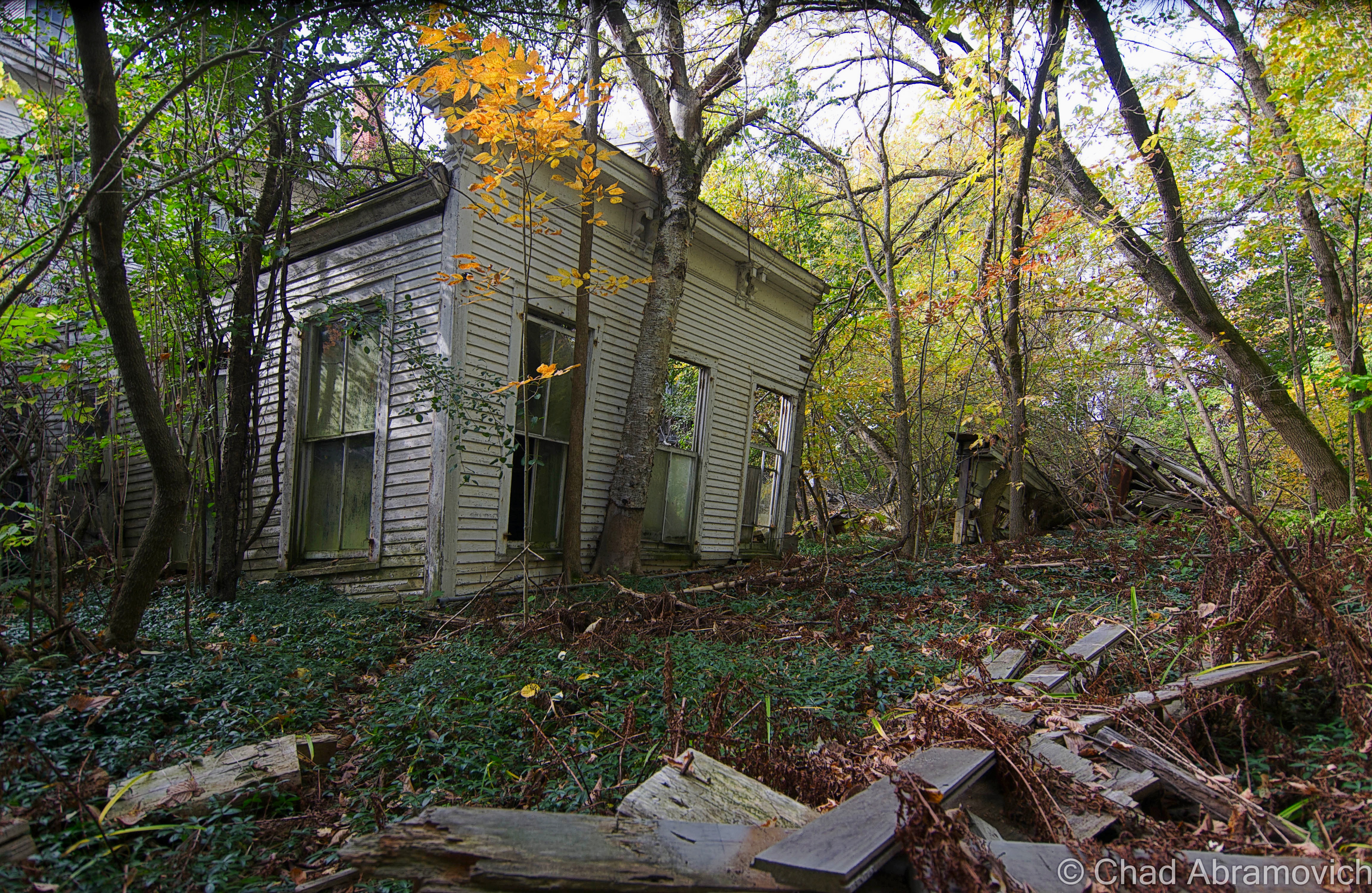
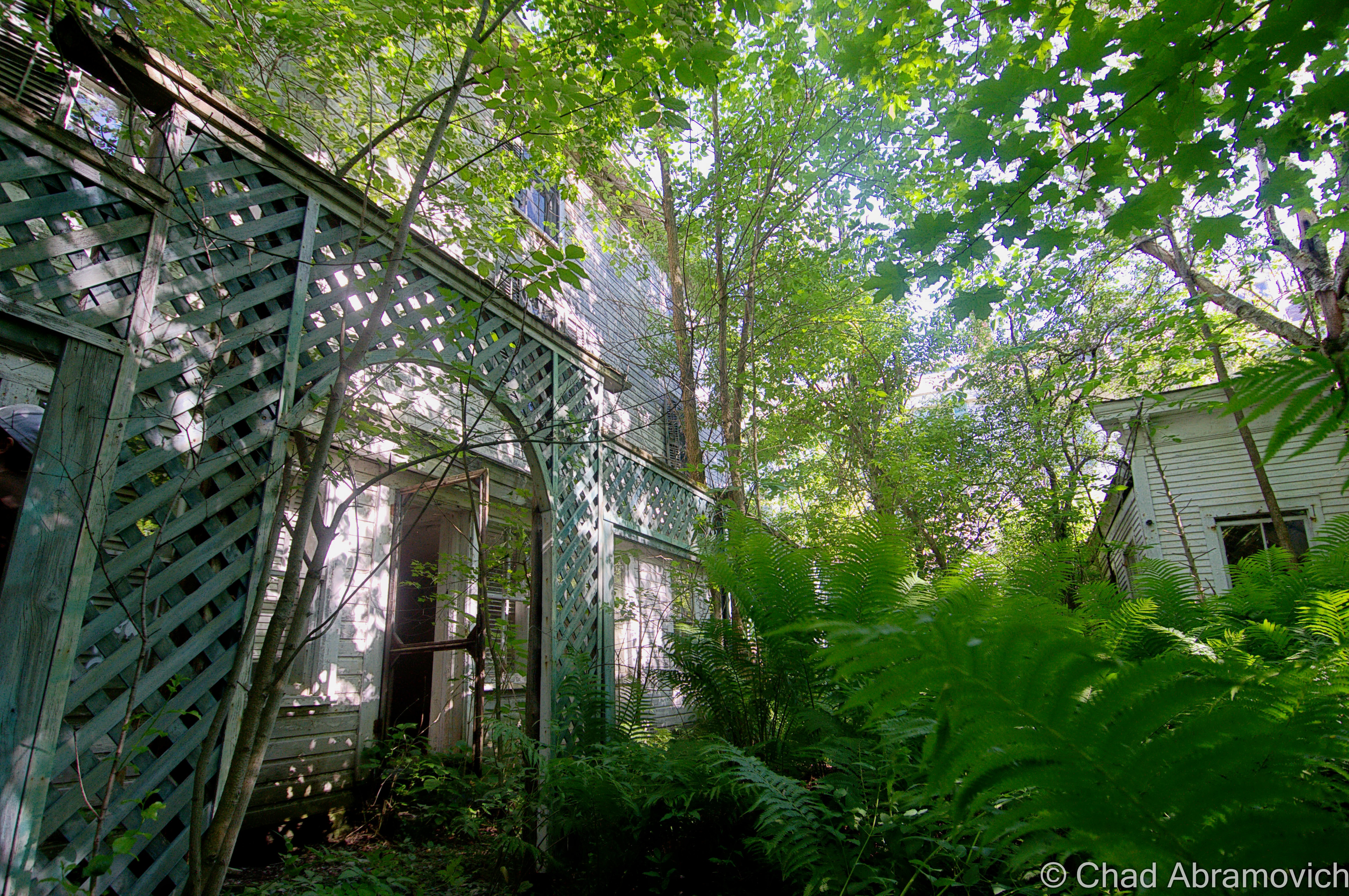
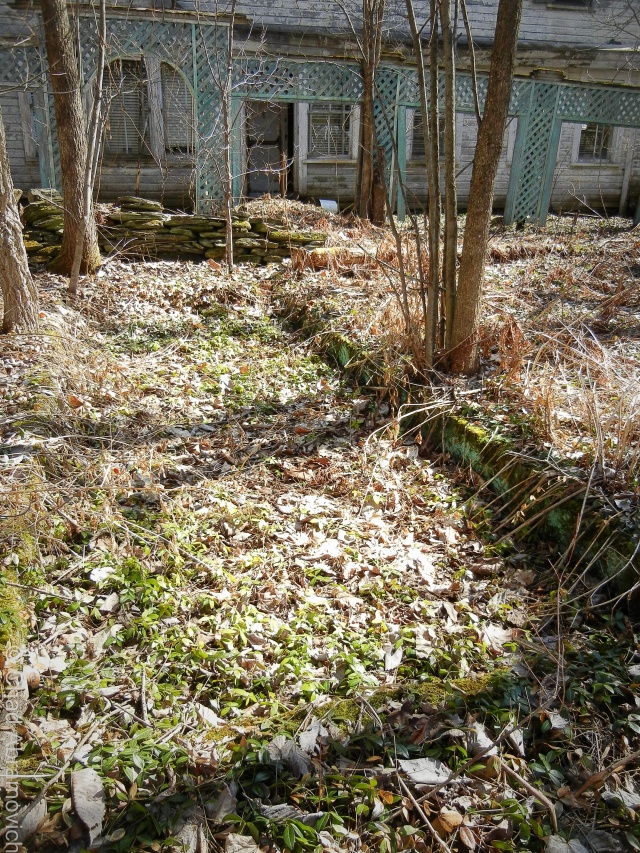
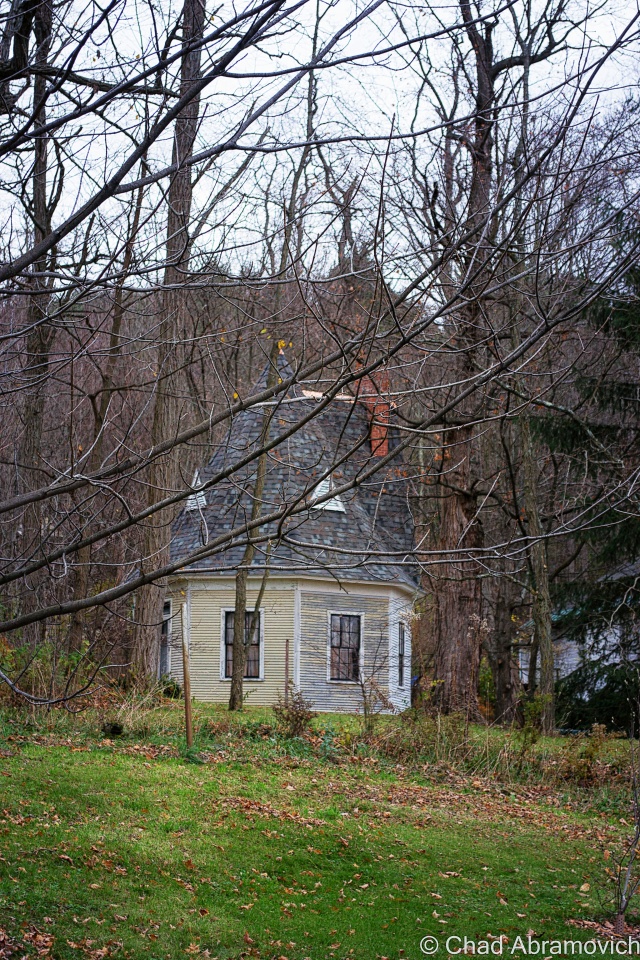
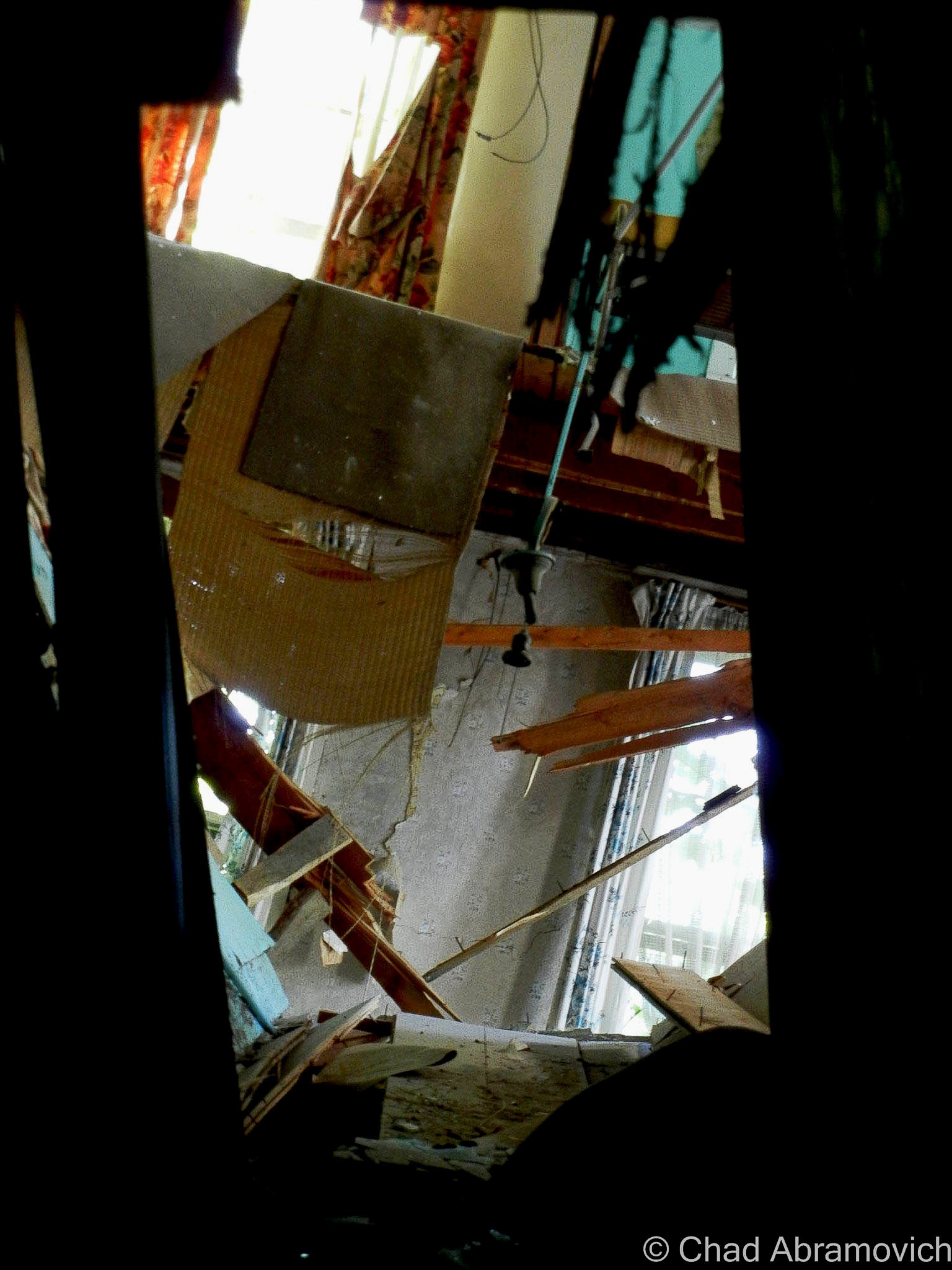
Hyde Manor, October 2016
Hyde Manor Winter 2018
I had received an email from my good friend and fellow writer Bill Alexander of Vermont.com, asking me if I knew Hyde Manor had collapsed. After a few seconds of bewilderment, I put down my coffee, texted a friend, and the next day I was traveling down into Vermont’s beautiful lake region that was gloomy and gray that particular day.
Bill wasn’t kidding – another huge chunk of the manor had collapsed. I wasn’t there 7 minutes when a car with red plates pulled up next to me. The owner, who still lives in the old bowling alley on the property, had seen the car I was in come to a stop out in front on the road and immediately called the cops. The power that be, though, was an incredibly amicable fellow. He smiled, we chatted, he told me that I wasn’t doing anything wrong (I wasn’t on her property, I was on the shoulder of the road), and that the big collapse happened just last night. “Just don’t go anywhere near the building” he warned with concern in his voice.
He didn’t have to tell me that. Another friend, explorer, and photographer who, unlike me, isn’t at all bothered by temperatures in the -40 variety, said he ran into a Catamount (that’s Vermont parlance for mountain lion) inside the old hotel.

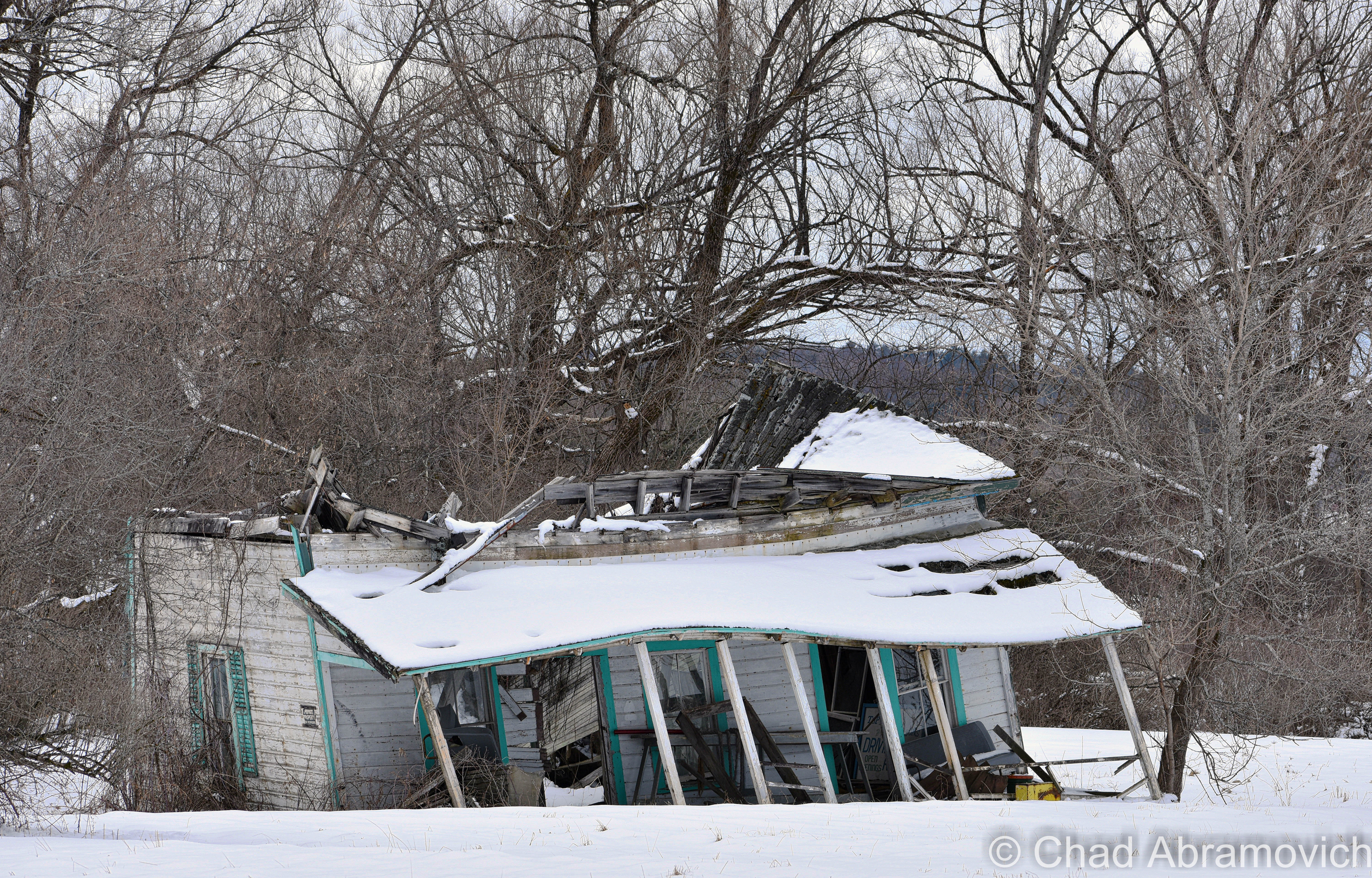
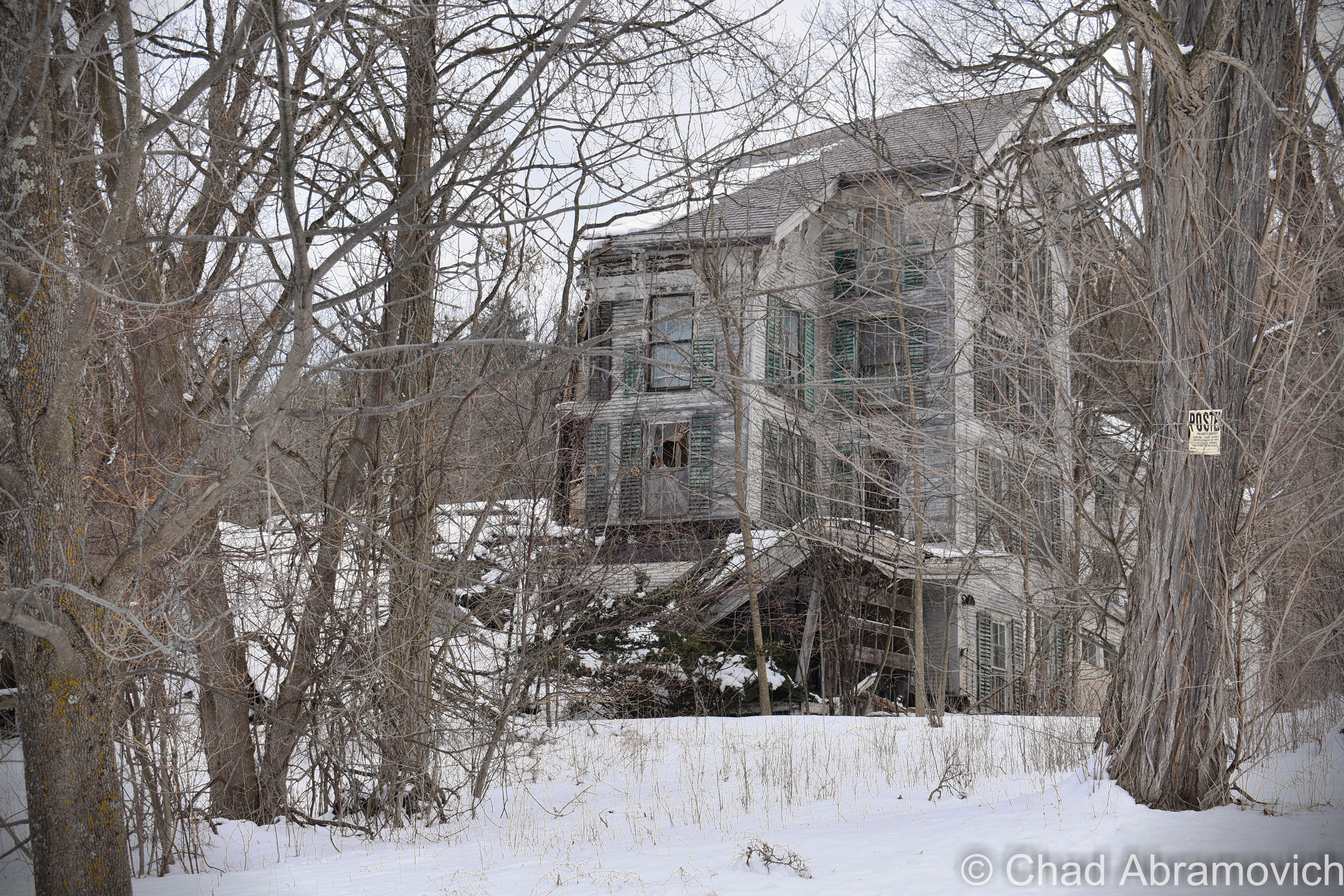
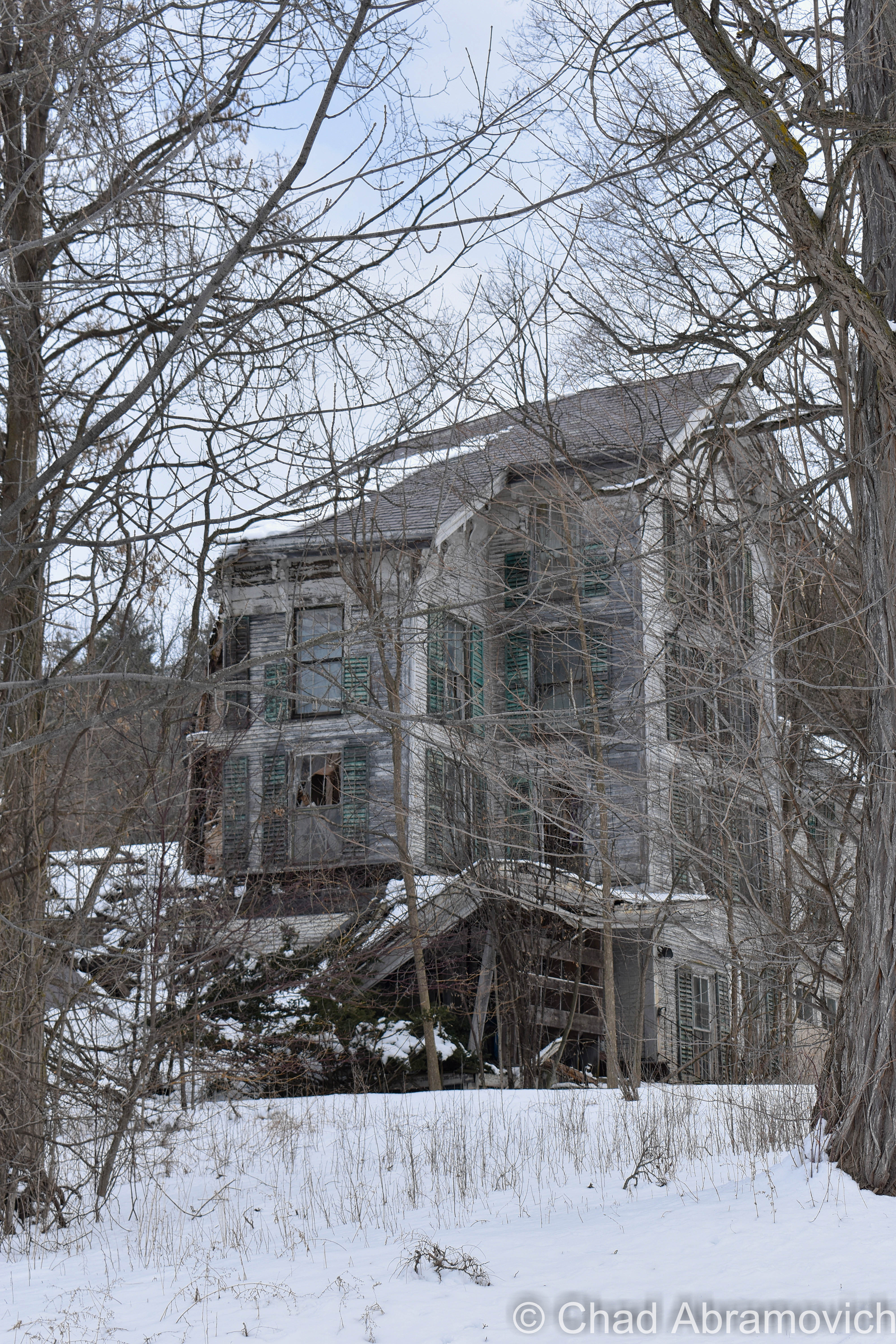
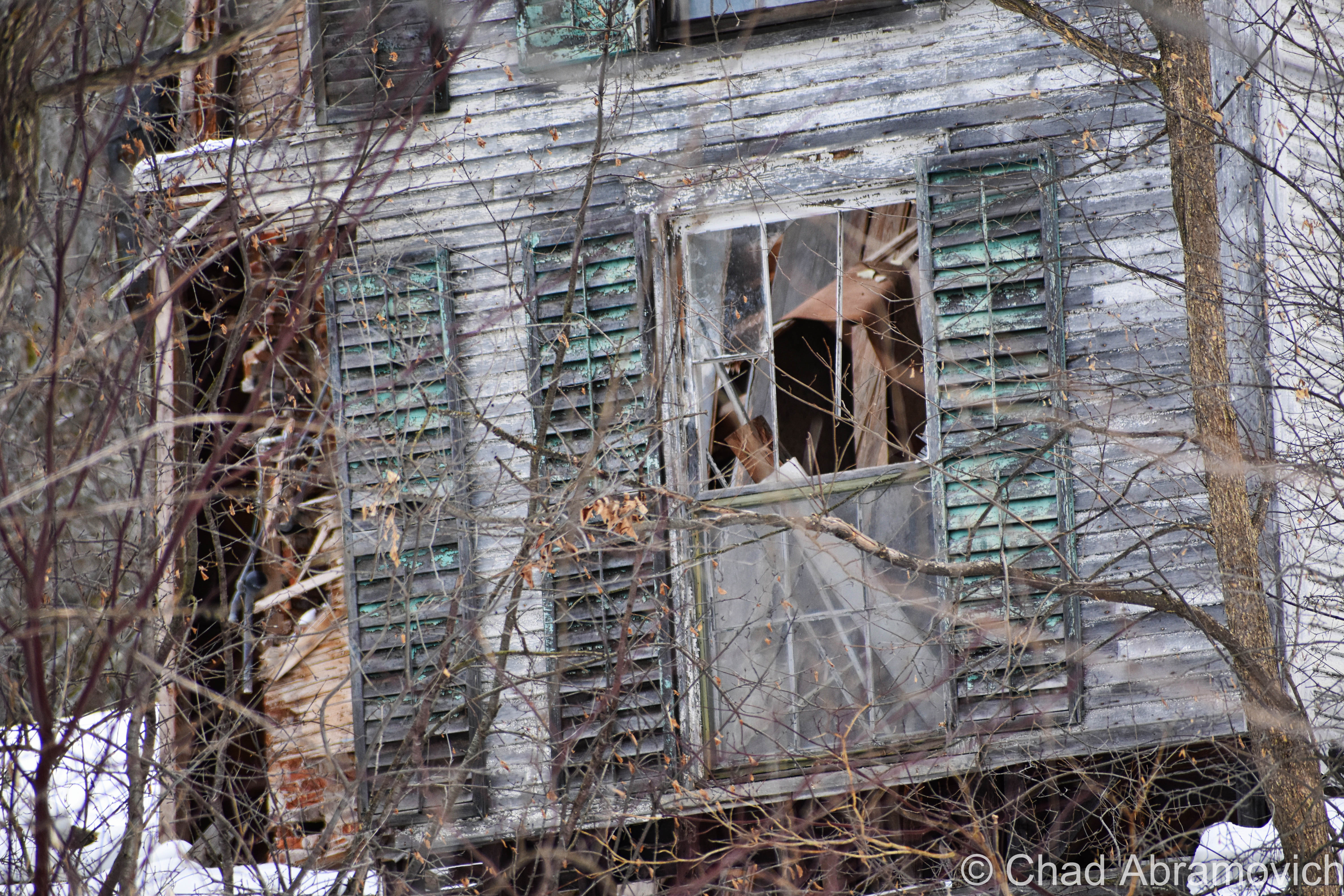
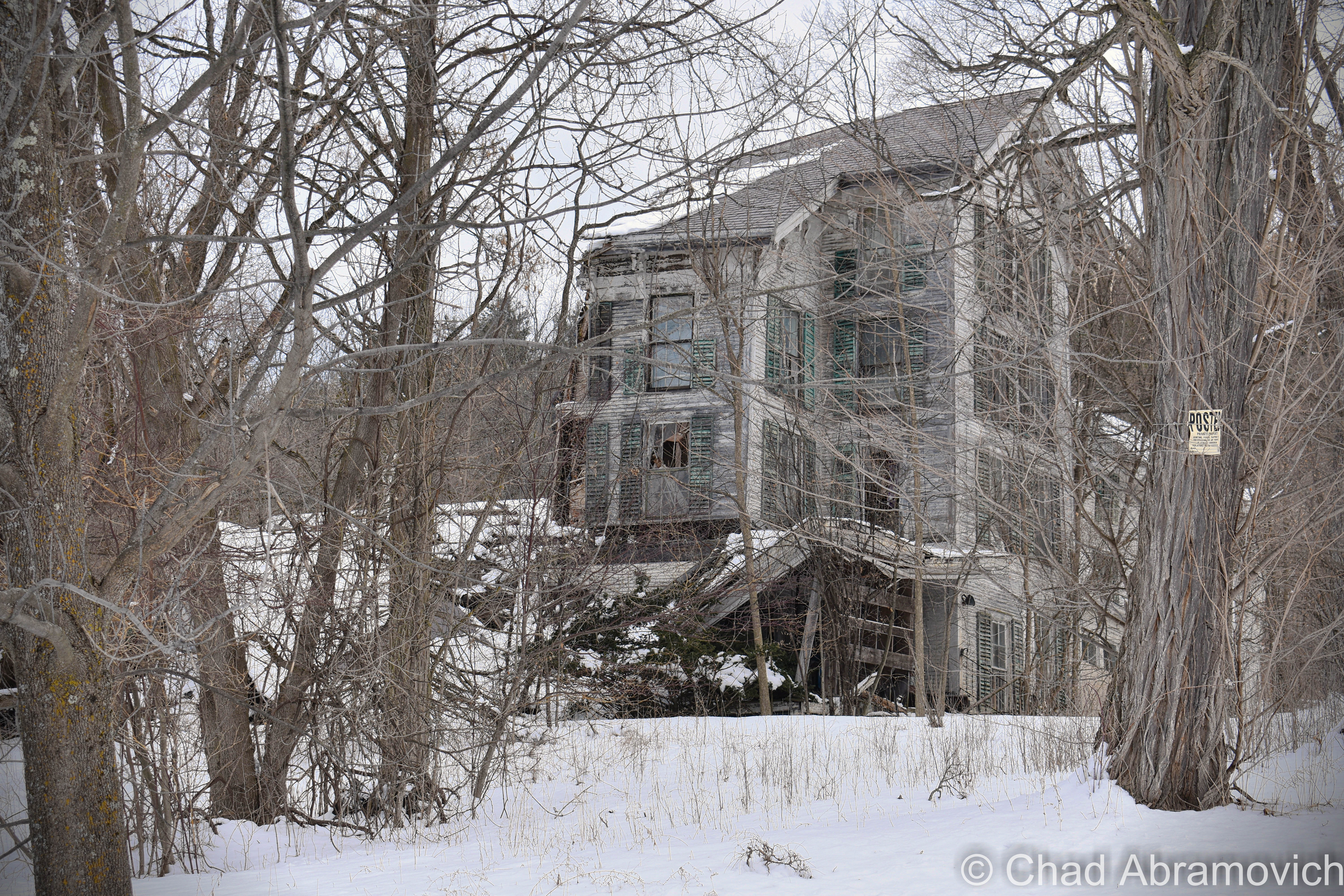
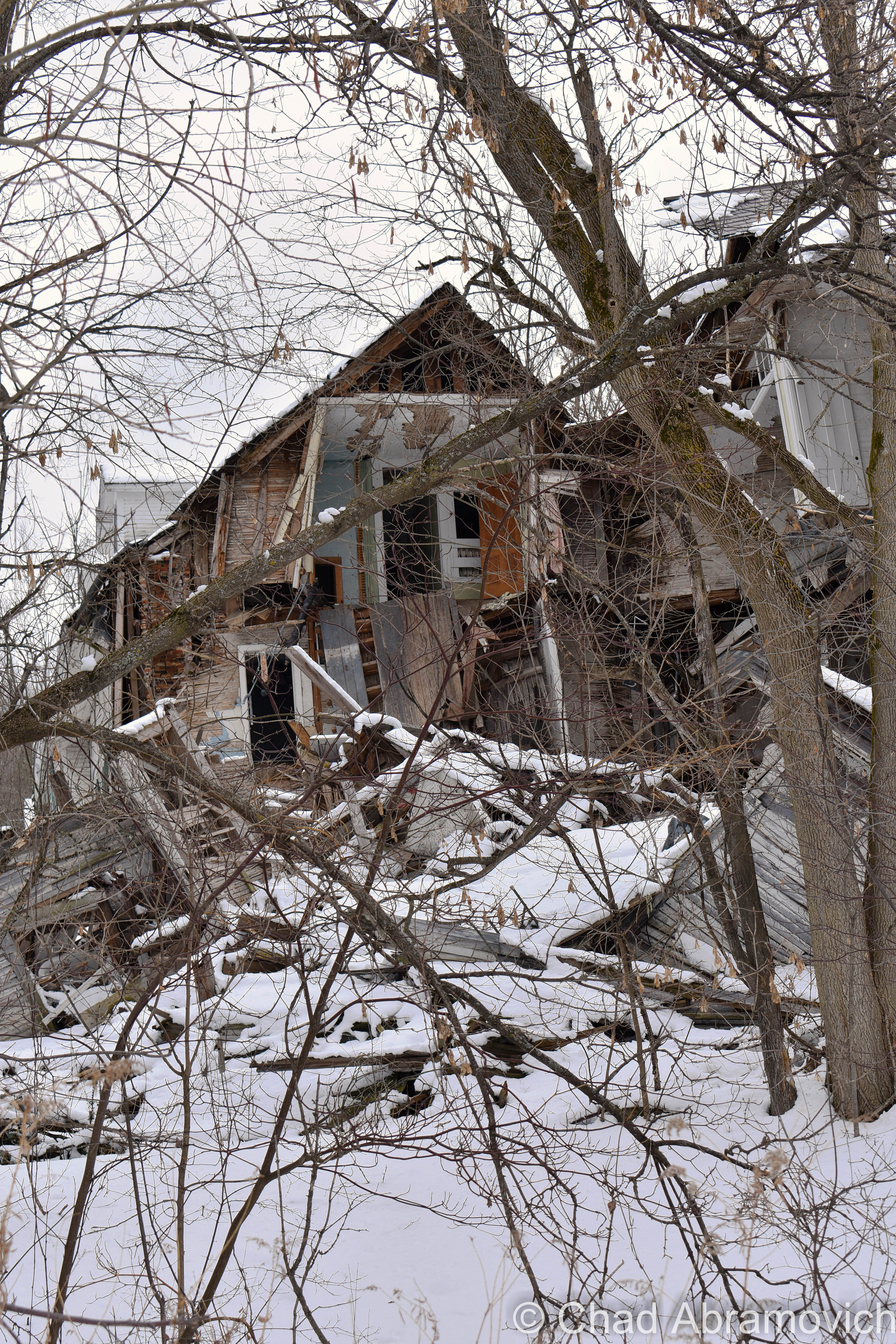
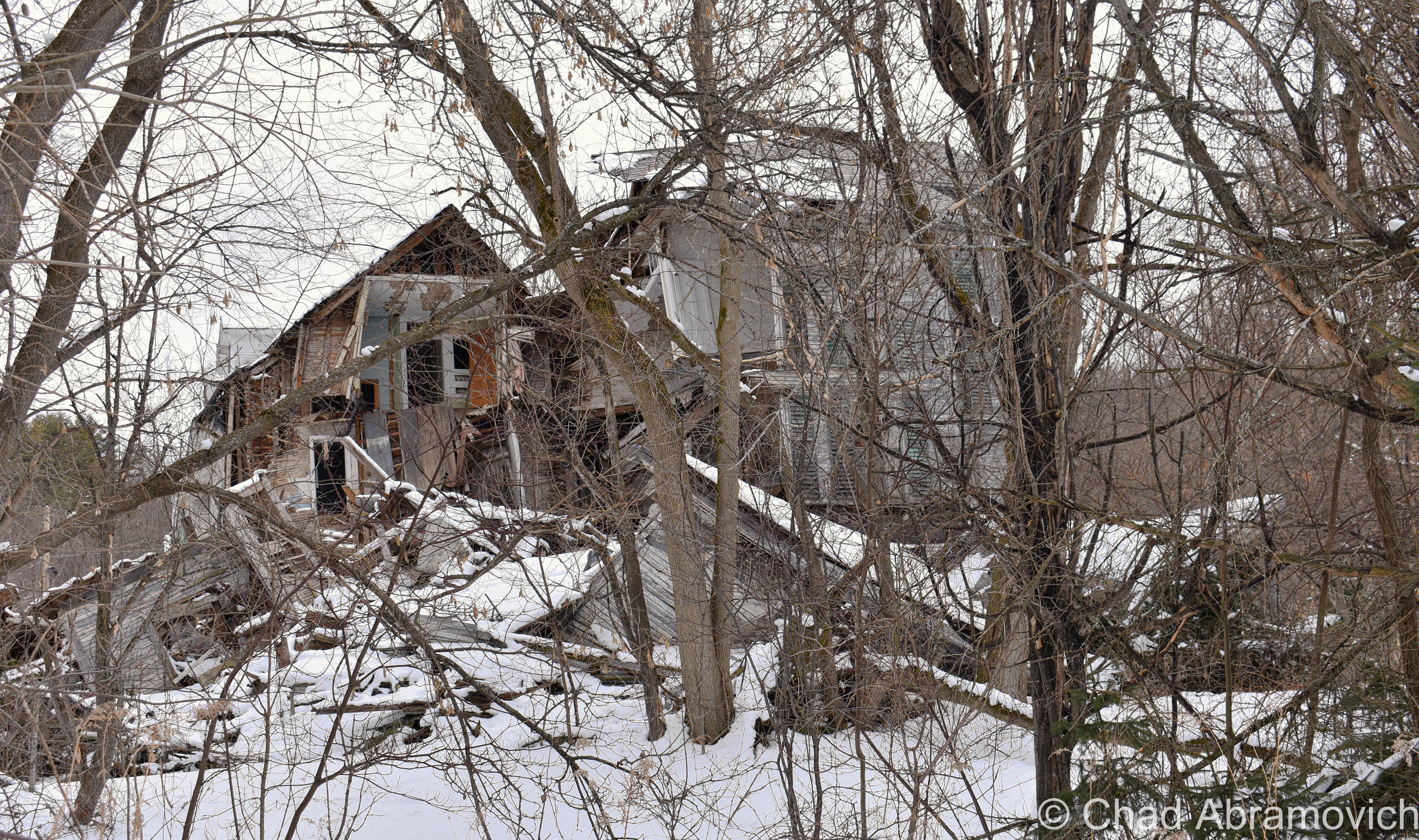
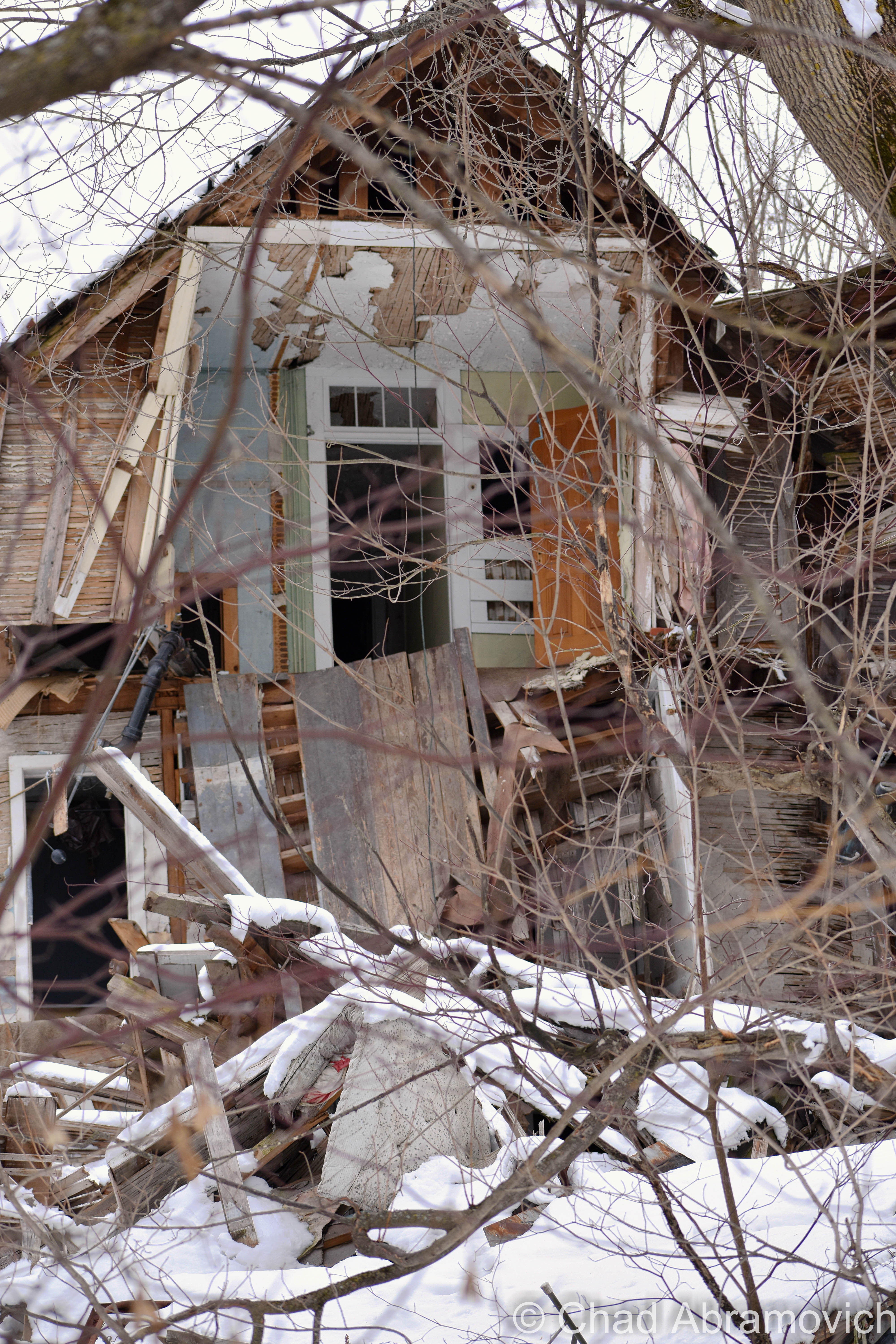
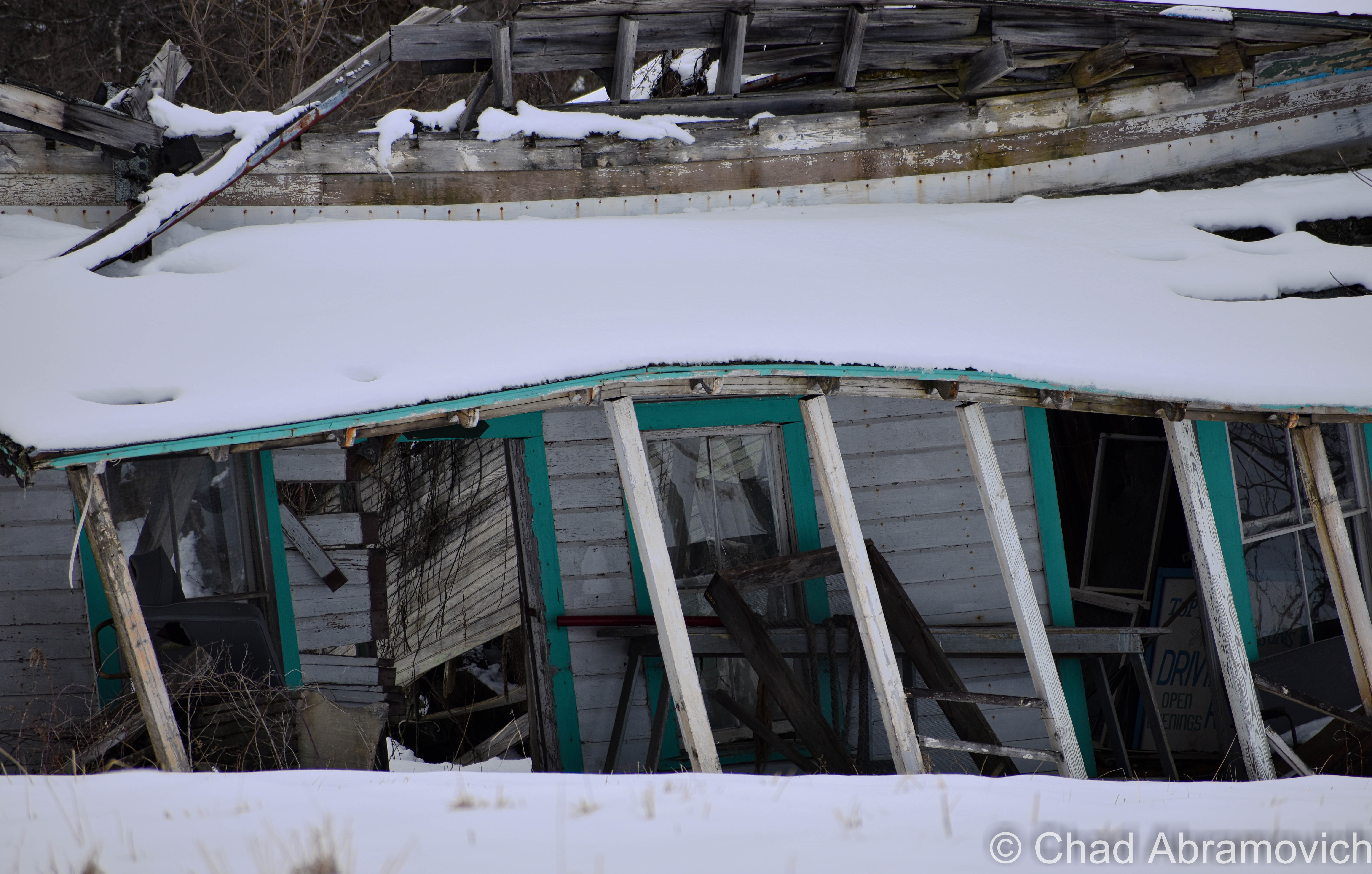
—————————————————————————————————————————————–
To all of my amazing fans and supporters, I am truly grateful and humbled by all of the support and donations throughout the years that have kept Obscure Vermont up and running.
As you all know I spend countless hours researching, writing, and traveling to produce and sustain this blog. Obscure Vermont is funded entirely on generous donations that you the wonderful viewers and supporters have made. Expenses range from internet fees to host the blog, to investing in research materials, to traveling expenses. Also, donations help keep me current with my photography gear, computer, and computer software so that I can deliver the best quality possible.
If you value, appreciate, and enjoy reading about my adventures please consider making a donation to my new Gofundme account or Paypal. Any donation would not only be greatly appreciated and help keep this blog going, it would also keep me doing what I love. Thank you!
Gofundme: https://www.gofundme.com/b5jp97d4


